

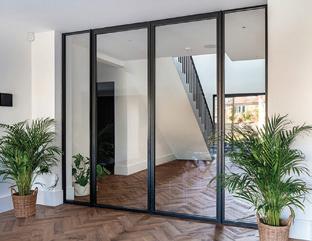





• UKAS Accredited: BS EN 1634-1 – internal and external use.
• Exceeds FD30: Average 52 mins, up to 70+ mins fire resistance.
• Building Safety Act Ready: Traceable, verifiable performance.
• Agrifiber Core: Renewable, stable and consistent.
• Long-life Durability: PAS 24 security, 2mm GRP skins, 25-year guarantee.
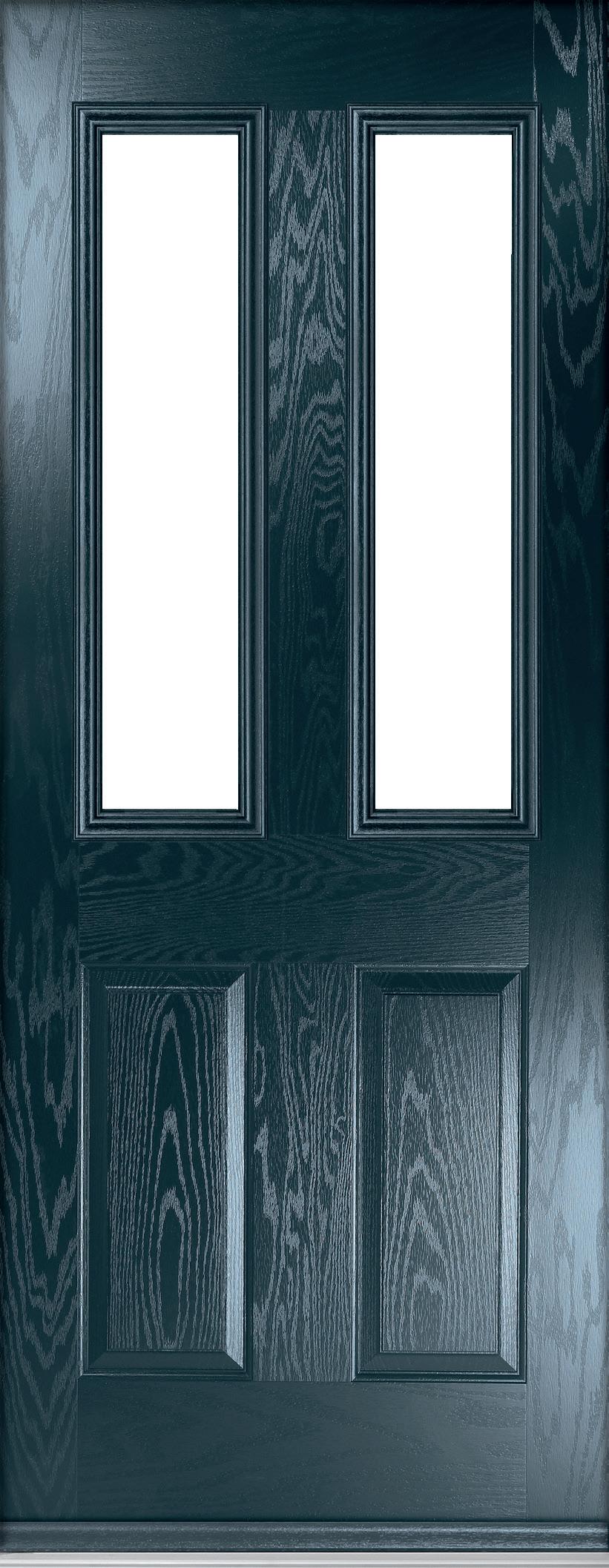






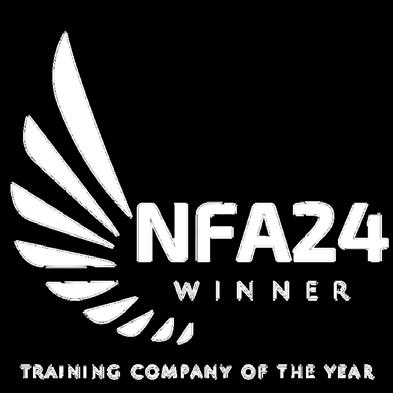

In Person GQA Accredited Courses:
Fire Door Inspection Course
Fire Door Installation Course
Fire Door Repair and Maintenance
Fire Door Awareness
Procurement Course





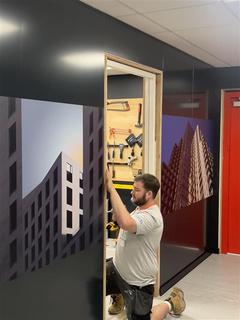
GQA Accredited Short Online CPD Courses:
Navigating FD Documentation
Identification Marks and Labels
Fire and Acoustic Seals
Regulated Vocational Qualification:
FD Inspector Diploma Level 3 – GQA
Installation Diploma qualification Level 3
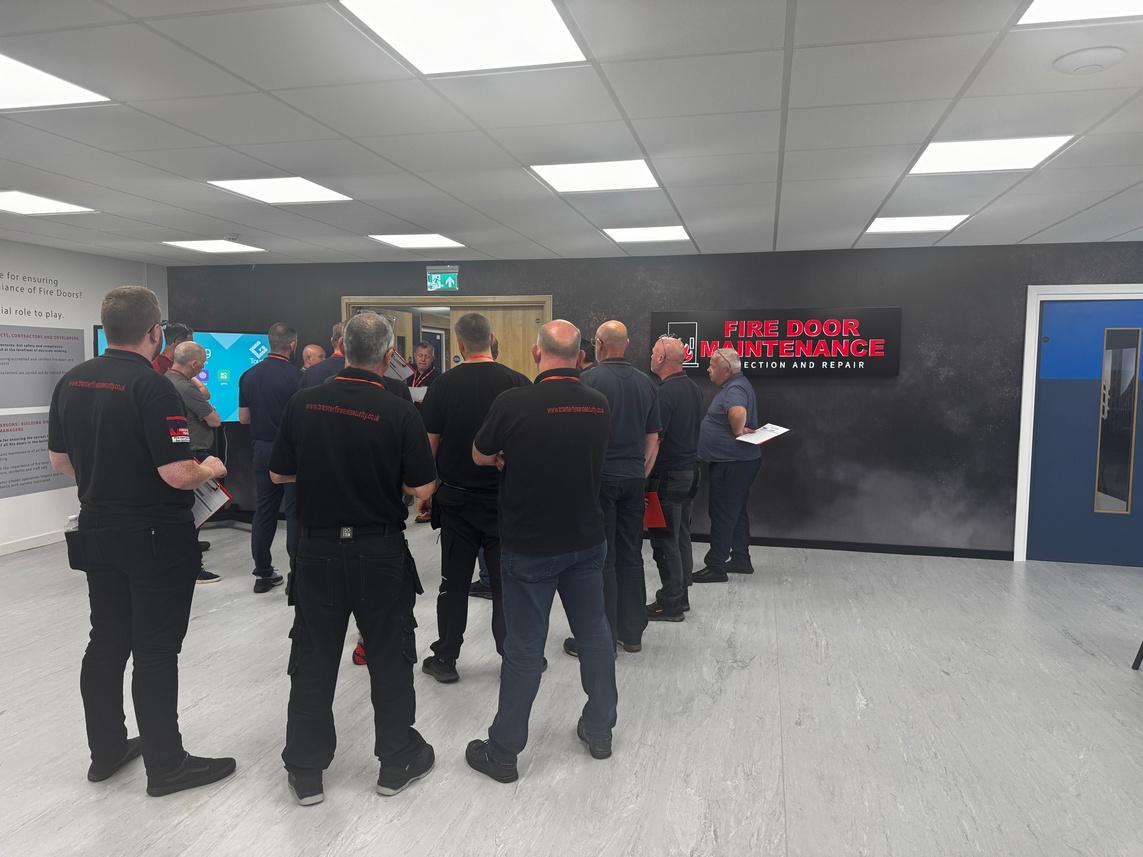
Further regulated qualifications coming soon..
View our website
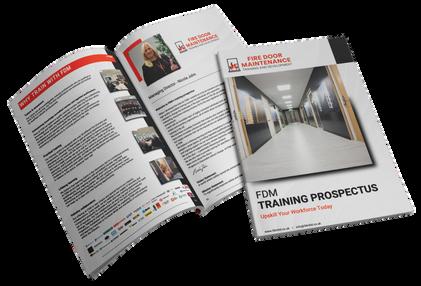
We would like to welcome you to this, the first edition of the Fire Door Journal.
You may be asking yourself why this new publication has suddenly appeared, bearing in mind the multitude of trade magazines that proliferate the building, housing, glass and fenestration industries? The simple answer is that this has not been an instant fix to talk about the issues of fire safety and, as publishers, we were approached to consider taking on the responsibility of bringing this title to market – and after much research we discovered that although there are lots of fire safety publications, there are none which focus on fire door safety as the main focal point.
As it says on the front cover, this is all about making buildings safer and it will come as no surprise that Grenfell was the catalyst that brought all these companies together in a determination to ensure such a tragedy is prevented in future. Importantly, many of the leading players within the industry have volunteered their services to form a panel of experts - fire door safety professionals, who can offer advice and support to our readers.
We want this journal to help the industry as a whole, individual companies and, indeed, individuals themselves, to understand the importance of education and training in ensuring that Fire Doors are correctly constructed, tested, and also fitted. It is one thing to ensure a Fire Door set passes the necessary tests and another thing altogether for it to be installed correctly. And once fitted
there are all the issues around the maintenance of that product. We are fortunate that there are companies that offer Fire Door Maintenance and Training and it is essential that companies involved in supplying fire doors understand the regulations and standards and are able to be appraised of any changes and additions that will inevitably come in future.
The Panel of Experts are key to helping everyone in the industry – we have experienced, professional people prepared to help and answer anyone’s queries or concerns. And that panel will expand over time. This your chance to ask for their advice and assistance.
We would encourage everyone to read the host of important articles in this first edition of the Fire Door Journal and either start or continue their education. Everyone involved with this publication is committed to helping the industry understand the complexities involved with producing and installing of fire doors and their ongoing maintenance, and to encourage and help those wishing to add fire products to their offering, to do so correctly and safely.
Chris Champion Editor

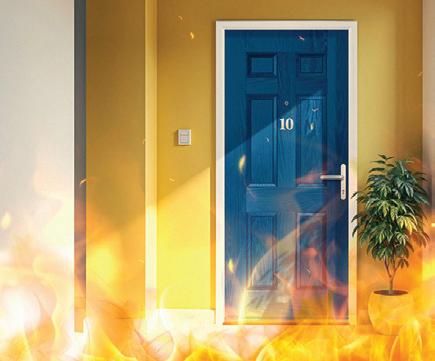
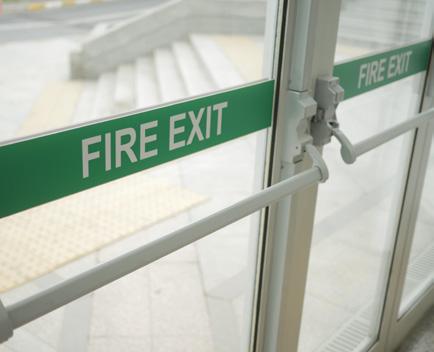

Christina
Lazenby Publisher / All Enquiries
M: 07805 051322 christina@firedoor-journal.co.uk
Kate Carnall Graphic Design / Ad Specifications kate@hook-a-duck.co.uk
Get
acquainted with our Expert Panel,
here to answer your questions and discuss the topics that matter, value your opinions and listen to your ideas.
You are invited to submit technical questions, requests for general advice and comments. This will provide the panel with the opportunity to share their perspectives and respond where appropriate, share their thoughts and offer guidance where they can.
Please send your questions and comments to: christina@firedoor-journal.co.uk

Nicola John Managing Director, Fire Door Maintenance Training and Development (FDM by UAP Ltd)


An experienced and professional journalist and Editor with significant experience across a wide variety of businesses including the composite door and fire door industry, the window, door and glass industry in general, landscaping products and manufacturing. Experienced presenter and speaker at seminars, conferences and exhibitions with many television and radio appearances. Skilled interviewer and writer of editorial material, articles and press releases. 60 years of work experience with 35 years at Director level.
As the Managing Director of the Fire Door Training Academy, Nicola is passionate about elevating fire safety standards. The award winning academy, housed in a stateof-the-art training centre, is dedicated to equipping professionals with the knowledge and skills needed to ensure fire doors are installed, inspected, and maintained correctly. Their mission statement is to significantly improve safety and standards in the fire door industry. The recent legislative changes underscore the critical importance of fire safety in buildings. The demand for specialised training in fire door inspection, installation and maintenance is unprecedented. Nicola’s team comprises fire safety experts, educators and support staff, committed to elevating fire safety standards.
FDM was established to address the growing need for high-quality fire door training after the Grenfell tragedy, ensuring professionals across the industry have the skills and confidence to meet evolving fire safety regulations. Since launch, FDM has partnered with over 50 industry
Christina is the Managing Director of the window, door and conservatory newspaper, Glass News (Glass People Ltd) which distributes monthly to manufacturers, fabricators and installers, established 15 years. Christina has worked within the window/ door industry, including fire doors, in some way or another for 30 years and is an experienced publisher of a number of B2B titles, within niche sectors and construction.
leaders and top suppliers of door sets and components, including Falcon Timber, GGF, Mann McGowan, Lorient, PDS, IG Doors, Sentry, Strongdor, NorDan, and many more.
A round table was recently hosted at FDM head quarters, composing of an indomitable team of fire safety experts, including the esteemed Dame Judith Hackett, resulting in The Fire Door Maintenance Report.
You can obtain a free copy of this report.
Please email the publisher of Fire Door Journal to receive your electronic copy.


Raising Standards in the Fire Door Industry
fdmltd.co.uk


Bryan Bultema Managing Director, ODL Europe
Bryan Bultema is Managing Director of ODL Europe, part of the global ODL corporate group with over 80 years of experience in developing high-performance building products. Based in Bootle, Liverpool, ODL Europe is focused on building value into building products and setting higher standards for safety, performance and sustainability.
As a panelist for the Fire Doors Journal, Bryan shares insight into how the
leadership, ODL Europe has invested in advanced solutions that provide consistent performance and assurance across the supply chain.
Central to this approach is the Guardsman FD30 Fire Door slab. Developed in collaboration with Capstone Engineering and leading fire door fabricators, the Guardsman is a nextgeneration GRP composite fire door designed to deliver dependable performance every time.
Tested under UKASaccredited conditions, it consistently exceeds its FD30 classification, achieving burn times of up to 70 minutes. Constructed with Agrifiber cores, FSC® certified timber and durable GRP skins, it combines safety with sustainability and long-term resilience.
Bryan continues to drive ODL Europe’s commitment to delivering proven, accredited composite door solutions that give specifiers, contractors and building owners complete confidence in performance.

Owen Jones brings over 30 years of experience in the construction products industry, having begun his career with IG Limited in 1990. He later joined IG Doors Ltd as Technical Development Manager, contributing significantly to its growth into one of the UK’s largest composite door set manufacturers.
Since 2021, Owen has served as Technical Director at Distinction Doors Ltd, where he leads the technical development and supply of composite door blanks and components, including

a fully tested fire door system. His expertise spans the manufacture of GRP, ABS, and steel composite doors within timber and PVC-U frames.
A Chartered Engineer and BFRC-accredited thermal simulator, Owen is committed to advancing product standards and safety. He was instrumental in founding the Association of Composite Door Manufacturers (ACDM), serving as Technical Director and Vice Chairman, and currently chairs the ACDM group within the GGF.
Owen has contributed to key industry initiatives, including post-Grenfell discussions with MHCLG, and has held roles on several BSI committees, notably chairing the latest revision of BS 8529 for composite doors. His collaborative approach and technical insight make him a respected figure in the sector and a trusted voice in regulatory development.
Mike Rigby Managing Director, MRA Research and the MRA Team Members
Mike Rigby Founded Michael Rigby Associates (now MRA Research, MRA Building Markets Reports, and MRA Data Services) in 1991 to bring new insight and direction to the building materials, construction and home improvements sector. With a background in both consumer and trade markets, including 10 years in marketing and research at Dulux paints, time as head of marketing at a national builder’s merchant, and as marketing director of a national home improvement company, he understands the challenges facing the home-improvement and construction industries.
Mike’s experience of fire safety: Mike was involved in PR for the Passive Fire Protection Federation for several years in the 2000’s. Exova, the Fire Service, ASFP, the Government and other bodies were PFPF members, so he heard the inside stories and went to Westminster with the chair and deputy chair when the Government tasked the PFPF with leading one of its task forces. The Lakanal House fire, a prequel to Grenfell, and a fire in the Channel Tunnel occupied the team for a
long time. The PFPF was eventually merged with the ASFP. Mike also worked on PR for a leading group of passive fire protection products. MRA produced the ‘Fire Door Quarterly Trends’ survey for the BWF and its fire door scheme for 10 years, which appeared in BMN magazine. When Grenfell occurred, the Government knew so little about fire doors and fire safety that they sent a bunch of officials to one of Mike’s clients to learn about fire doors. After the Grenfell Inquiry, Judith Hackitt tasked the CPA to consult the industry on it’s Marketing (loose and unsubstantiated claims), and the CPA asked MRA Research to consult the industry on the new code (which is now run by the CCPI - Code for Construction Product Information). Since then MRA Research has worked on a research project on specifiers and fire products for a large international, and has just conducted fire safety research for another large group.
Mike is a member of the Market Research Society, a liveryman of Worshipful Company of Builders’ Merchants, and Worshipful Company of Marketors.

With over 25 years of industry experience, Jason is a recognised authority on fire door performance and compliance. His expertise spans product testing, certification and design innovation, with a specialist focus on innovative fire safety solutions.
Within Robust, Jason is responsible for leading product development, driving improvements and standardisation in design and processes, overseeing testing and certification, and ensuring compliance with the latest standards. A strong advocate for third-party testing and certification, Jason champions its role in providing customers with confidence that products not only meet legislation but also deliver proven, reliable performance in real-world applications.

As the FPA’s Technical Director George oversees the strategic direction and delivery of the FPA’s technical services, supporting its mission to reduce fire risk and improve safety standards across the built environment. The FPA is deeply involved in the assessment, testing and training related to fire doors, providing:
• Specialist training courses to ensure fire doors are installed, maintained and inspected by competent professionals
• Fire risk assessments and compartmentation surveys to ensure fire doors are installed and maintained correctly
• Full scale fire testing at our laboratory to both British and European furnace test standards.
George and the FPA continue to support industry, insurers, and regulators with evidencebased guidance and technical expertise, helping to ensure that fire doors fulfil their critical role in protecting lives and property.

Steve Goodburn is Business Development Director at Pyroguard, a leading global manufacturer of fire-safety glazing solutions. With extensive experience in Business Development, Key Account Management and manufacturing operations, Steve brings both commercial insight and technical expertise to the sector. He is a strong advocate of a systembased approach to passive fire protection, recognising the need for fire doors to be tested and certified as complete assemblies.
A regular contributor to industry debate, Steve has authored RIBA-approved CPD materials and delivered presentations to architects, specifiers and manufacturers on the correct specification of fire-resistant glazing. He has also driven product innovation, including the launch of Pyroguard Advance for timber and steel fire-door systems. Passionate about safety and design, Steve views the fire-door industry as a unique responsibility: safeguarding lives while supporting architectural creativity.

Ian Glenister Technical and Sales Manager, DoorCo
Ian Glenister has worked across a range of sectors within the fenestration industry over the last 40 years including Production, Quality, Operations, Sales Management and Certification. With knowledge across commercial, retail and trade sectors, Ian’s knowledge of fenestration as a whole is vast, making him the perfect candidate to spearhead DoorCo’s fire door operation.
Since the Grenfell tragedy and the subsequent MHCLG investigation, DoorCo have actively been working towards a fire door solution to meet the needs of the supply chain in the changing world of fire doors and with an emphasis on consistency. Working closely with key suppliers including their slab manufacturing partner, DoorCo Korea, Ian has been the project lead for one of the largest and most successful type testing fire door projects in the UK.

Gareth Jeffries is the Commercial Sales Director of Permadoor and Wrekin, part of the Epwin Group. Permadoor, the UK’s original composite door manufacturer, is an industry leader in the design and supply of highperformance composite fire doors for the social housing and affordable homes sector. Renowned for innovation, the business is committed to compliance, sustainability and product performance.
With more than seven years at Permadoor and extensive experience in the building materials sector, Gareth plays a pivotal role in driving strategic growth. He ensures the business remains ahead of evolving Building Safety Act requirements and stricter regulations, while aligning the needs of specifiers, contractors and building managers with innovation in compliance and performance. Passionate about raising standards, Gareth provides invaluable insight into how regulation, sustainability and safety can be translated into practical solutions that deliver safer, more sustainable homes and genuine peace of mind for all stakeholders.

Karen started her journey in the architectural ironmongery sector in 1994 and has built an established career grounded in technical expertise and customerfocused service. Drawing upon 30 years of industry experience, Karen supports architects, contractors, door manufacturers and end users with expert guidance on fire door hardware specification and performance and remains committed to raising awareness on key themes such as fire safety, building regulations and testing standards.
Since joining Allegion UK in 2017, Karen has advised local authorities, architectural ironmongers and manufacturers on all aspects of fire safety and door hardware, ensuring projects are equipped with the most suitable, effective and compliant fire door hardware solutions.
Karen is also a strong advocate for continued education and professional development, holding qualifications such as DipGAI and DipFD that complement her extensive industry knowledge. Her passion for fire safety performance makes her a trusted voice for those committed to delivering safe, secure and accessible buildings.

Wojciech Brożyna is Managing Director of Aluprof UK, a leading supplier of aluminium systems for windows, doors, and façades. With more than 20 years’ experience in the fenestration and construction industry, he has played a key role in delivering safe, sustainable, and high-performance solutions across the UK and Ireland.
Wojciech, one of the directors of the Council for Aluminium in Building (CAB), has been actively engaged with industry institutions and trade bodies, strengthening collaboration across the sector. He promotes compliance, innovation, and education to ensure Aluprof’s systems meet the highest technical and fire safety standards.
Wojciech works closely with architects, contractors, and specifiers to raise awareness of fire door performance, certification, and regulatory requirements, supporting safer building design. His focus lies in combining technical expertise with practical guidance to help the industry meet Gateway 2 obligations and wider responsibilities under the Building Safety Act.
Do you think you have the expertise to join our panel?
We are looking for fire door safety professionals who can offer advice and support to our readers.
It’s free to take part, all we ask is that you are available to answer any relevant questions you feel qualified to do so and that you send us a brief biography of your experience within the fire door industry (and related industries) so we can assess your suitability to: christina@firedoor-journal.co.uk
We will respond to your email as soon as possible.
When it comes to fire safety compliance, the traceability of fire doors and their hardware is critical. And in an era where information is more accessible than ever before, the industry is presented with a transformative opportunity, explains Karen Trigg of Allegion UK.
Building safety has always been an ever-evolving landscape of legislation and regulatory frameworks. The industry strives for stronger construction safety practice and in doing so, the need for reliable, transparent and accessible product information is clear - especially when fire door safety compliance is on the line. It was in response to the Grenfell Tower fire and Dame Judith Hackitt’s review that the Building Safety Act 2022 was passed, which has since looked to introduce a number of ground-breaking reforms to improve fire safety standards and facilitate greater accountability across the board. A key component of the regulation has been the requirement for duty holders to retain fire and structural safety information, making it necessary to manage an accessible digital record of decisions and updates throughout a building’s lifecycle.
This ’Golden Thread of Information’, as it’s known, has placed a renewed focus on the presentation and management of construction product information and ensures the right people have the right information at the right time. From a single source, building owners, developers, regulators and residents are given a greater
understanding of the materials and assets used during the construction process, as a way of driving standards and saving lives. With emphasis shifting from product performance claims to verified, traceable assurances, there has never been a better time to assure peace of mind when it comes to fire door safety.
The Building Safety Act recognises the importance of fire safety systems and mandates that the Golden Thread of Information must include comprehensive data on all fire detection and prevention systems in high-risk buildings, including fire doors.
As a vital element of passive fire protection, fire doors and their hardware are often the first line of defence against fire and smoke, and as such are a legal requirement in all non-domestic properties and houses in multiple occupation. To operate as intended, fire doors will call on their various hardware components, including hinges, latches, seals, door closers and opening mechanisms, meaning they are only as effective as the weakest link in their assembly. As

such, the correct specification, installation and maintenance of fire door hardware is considered crucial if a building is to meet both its functional and safety standards. With that, decision makers must be confident they can identify the necessary hardware for their building, and in doing so, must also ensure components are fit for purpose and comply with UK Construction Products Regulations.
To assist duty holders in meeting these expectations, conscious manufacturers have stepped up, and as part of the Golden Thread regulatory framework are providing more detailed information in the form of product datasheets, installation guides and training portals. From a compliance standpoint, decision makers can instantly check a product’s associated Declaration of Performance (DOPs) to show
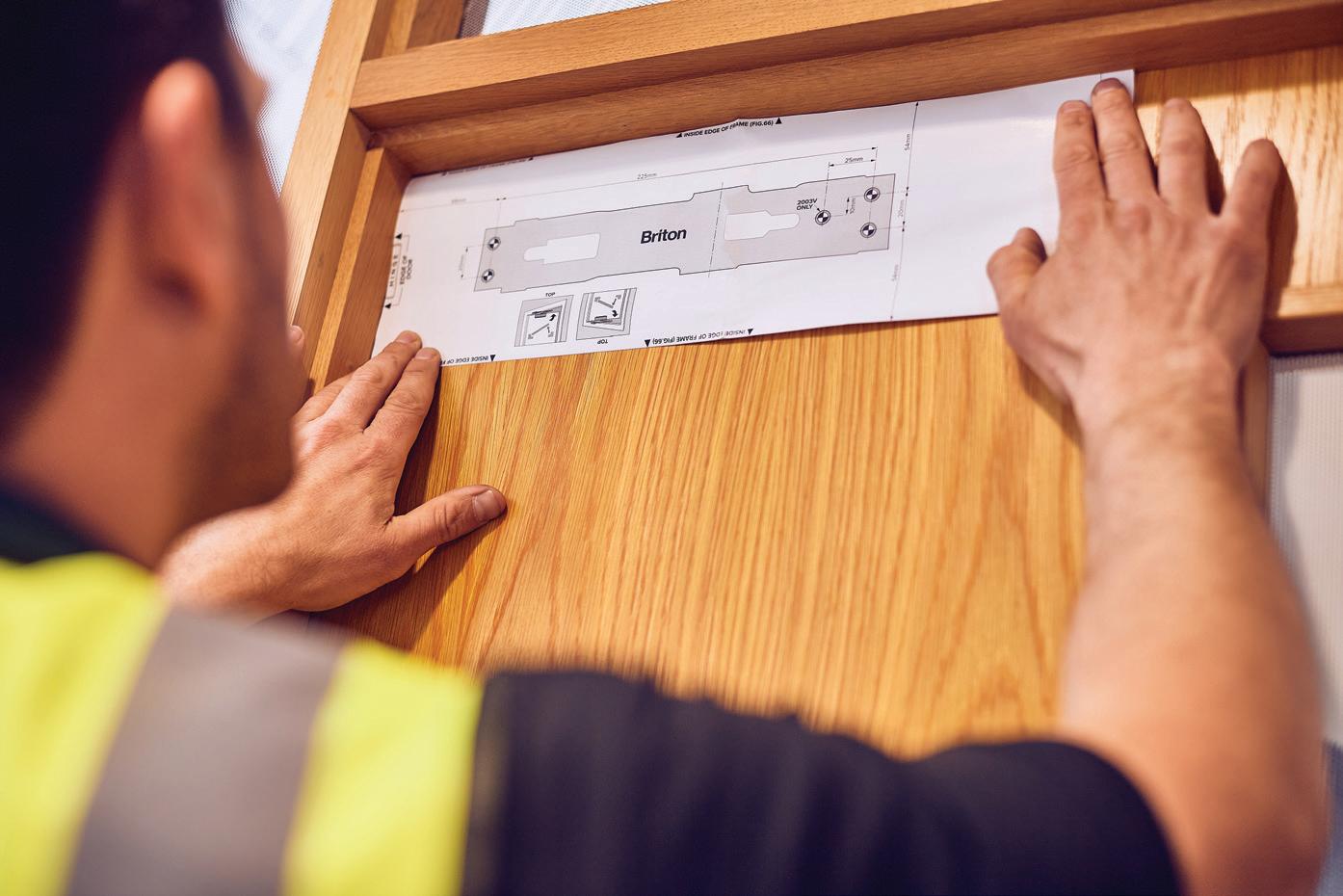

hardware conforms to the correct testing standards and UKCA and CE certifications, as well as Environmental Product Declarations (EPDs) when looking to conform to the latest environmental benchmarks. With this information, those involved in product selection can assure their installed fire door hardware will perform when it is called upon.
Transparent product information is also useful when it comes to maintenance periods and conforming to Approved Document B, with amendments made as recently as March 2025 focusing on Regulation 38, which states that “the person carrying out the work shall give fire safety information to the responsible person no later than the date of the completion of the work, or the date of occupation”. By providing this material, manufacturers are offering improved traceability on products and their performance, empowering duty holders to comply with legal obligations and keeping occupants safe in the process.
Data is a critical resource in decision making and with several schemes evolving such as the Golden Thread and the Code for Construction Product Information, a real strategy is forming. Where information is accessible and no longer ambiguous, the industry is fostering a proactive culture of collaboration, further transitioning from reactive compliance-driven tasks to a more effective method for tackling fire door safety and building design as a whole.
Outside of duty holders being able to demonstrate compliance by showing how they are managing risks throughout their buildings, there is perhaps a greater opportunity presented with clear communication amongst stakeholders. Where it’s imperative for industry professionals to remain informed on the latest standards and hardware options, a collaborative approach can lead to better and more informed design choices that continue to deliver post-project delivery and improve fire safety outcomes. Furthermore, with information readily available, there is an opportunity for early identification of potential hazards and vulnerabilities. For existing projects, decision makers can check what hardware product has been used and where, deciding if

it has been suitable and further reducing the use of ineffective options and avoiding costly retrofits when the time has come to repair or replace products.
From an operational perspective, when reliable product information can be accessed and assessed instantaneously, duty holders are able to streamline their decisions - assuring any changes or issues with fire door safety products are rectified quickly and actioned efficiently. With this holistic approach to information sharing, building and fire safety management becomes a shared duty. The Golden Thread is setting the standard and protecting all stakeholders in the processhelping to build trust in an area it is most needed.
The use of traceable and transparent product information means the approach to fire door safety and building management is changing and the industry is urged to continue building upon this culture whilst navigating the latest standards. Traceability is no longer a burden of best practice - it’s an industry expectation and equally, a golden opportunity that must not be missed.
Allegion UK is committed to supporting transparency and traceability in construction and has a wealth of product information resources to help professionals undertake product selection, installation and maintenance checks on fire doors and hardware. For information on product selection and installation, please speak to our experts or head to our download centre for technical fitting instructions and product certifications. Allegion UK also proactively participates in the EPD programme, with full EPD documentation available for download on Briton products, based on ISO 14025 and EN 15804 environmental declarations, from the Allegion and Briton websites. For more, visit www.allegion.com
As London’s skyline continues its rapid transformation, developers and contractors are under increasing pressure to balance innovation, design efficiency, and – above all – safety. With Glenigan reporting a surge in highrise office tower projects across the capital, the need for highspecification building components has never been more critical.
One such product answering this call is the Duplex 120 Riser Door – 2hr Fire Rated Both Sides, exclusively from Panelcraft Access Panels. Designed specifically for environments where uncompromising fire performance is required on both sides of a partition wall, this riser door is rapidly becoming a go-to solution for modern high-rise developments.
In tall structures, vertical service risers present a potential pathway for fire and smoke to travel rapidly between floors. As regulations grow stricter and awareness of passive fire protection increases, developers must ensure that every component meets the highest standards of safety and compliance.
The Duplex 120 doesn’t just meet these standards – it exceeds them.
Here’s why the Duplex 120 stands out in a competitive market:
• 2-Hour Fire Rating –Both Sides
Unlike many access panels that offer fire resistance on only one side, the Duplex 120 is firerated for 120 minutes on both sides. This is essential in highrise settings, where compartmentation integrity must be maintained regardless of the direction of fire spread.
• Sound Tested to BS EN ISO 10140-2 : 2010 with a 36dB Sound Reduction
• Smoke Tested to BS EN 1026
• Ideal for High-Rise Risers and Shaft Walls
With a focus on riser doors, this product is tailor-made for service voids common in multi-storey buildings. It integrates seamlessly into shaftwall systems and is engineered to work with non-standard dimensions — making it perfect for bespoke installations in commercial towers.
• Custom Built for Your Specification
The Duplex 120 is available in bespoke sizes — ensuring a precise fit for your riser openings. This flexibility is invaluable in projects where space efficiency and modular construction are priorities.
• Concealed Frame for a Flush Finish
High-rise office developments are not only judged on performance, but also on aesthetic and design consistency. The Duplex 120’s concealed frame design supports a minimalist, flush finish that aligns with
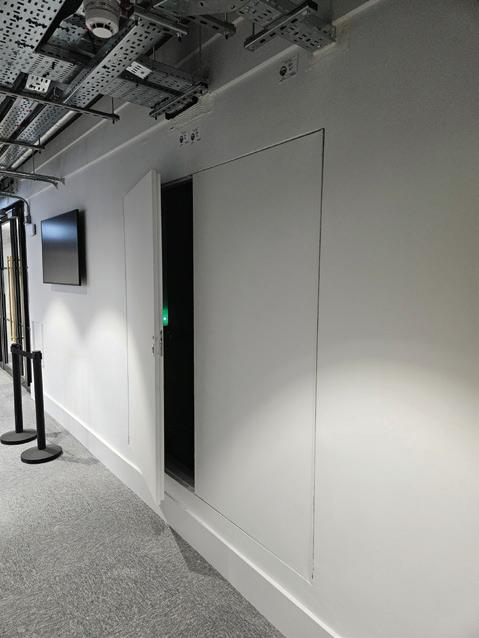
modern architectural trends.
• Tested to EN1634-1 Standards
Peace of mind comes standard. The Duplex 120 is rigorously tested to BS EN 1634-1 fire resistance standards, giving specifiers confidence in its compliance and performance.
• Supporting London's Office Tower Boom
As Glenigan reports, the London office sector is bouncing back with a pipeline of sophisticated, highdensity towers. From flexible workspaces to sustainable smart buildings, the demand is growing for building products that perform under pressure — in safety, scalability, and design.
The Duplex 120 is ready to support that growth.
Whether you’re working on a 30-storey tower in the City or a new commercial hub in Canary Wharf, Panelcraft’s Duplex 120 riser door ensures your project is protected from the inside out.
To learn more about how the Duplex 120 can be integrated into your next high-rise project, or to request a quote for a bespoke size, visit the product page here: https://www.panelcraftaccesspanels.com/Riser-Doors.php

Doorset manufacturers are being reminded about their responsibilities regarding thirdparty certification for emergency exit and external panic doorsets, as the Office for Product Safety and Standards (OPSS) clamps down on non-compliance.
The callout comes from Warringtonfire, a leading provider of testing, inspection, and certification services. It warns that many doorset manufacturers are not adhering to the correct procedures for thirdparty certification of their external doorsets, resulting in non-compliance. This follows recent scrutiny from industry bodies such as the Door & Hardware Federation (DHF) and the Guild of Architectural Ironmongers (GAI), who have been informed of the situation by the Office for Product Safety and Standards (OPSS).
It is the responsibility of manufacturers to
ensure their products are correctly certified and have a Certificate of Constancy of Performance (CoCoP), which then allows the product to then obtain a conformity marking (CE or UKCA). Without this, doors cannot be legally sold on the market, posing significant financial and reputational risks to manufacturers, as well as putting people at risk.
“Simply having third-party certification for individual elements and hardware of the panic or emergency exit doors is insufficient,” warns Michael Skelding, DHF’s General Manager & Secretary. “It is the responsibility of doorset manufacturers to ensure that the entire doorset, once assembled, is certified to meet compliance standards. Without this, manufacturers risk having their products pulled from the market by the OPSS, along with severe reputational damage.
“While the DHF and GAI have noted that many doorsets are noncompliant, we recognise that manufacturers are not deliberately breaking the law – it is more an issue of lack of awareness. It is now essential that

“Ensuring that your doorsets are fully certified is not only a legal obligation but also a commitment to safety and quality.”
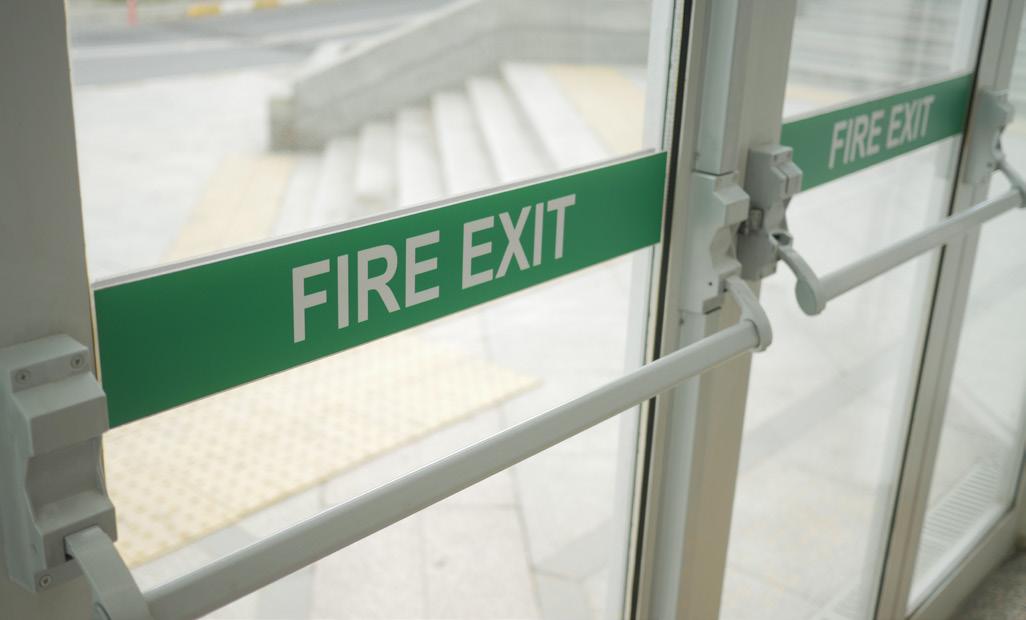
the word is spread so that manufacturers can obtain third-party certification and prevent any repercussions.”
Obtaining third-party certification is a straightforward process. It requires a factory production control (FPC) audit from a UKASaccredited laboratory, or an EU notified body, both of which Warringtonfire is qualified to conduct. The process includes witnessing the entire doorset in operation, with no additional testing required. This service can often be completed within a day by Warringtonfire, with the issuing of the CoCoP
following shortly after.
Mark West, Principal Product Assessor at Warringtonfire, states: “Ensuring that your doorsets are fully certified is not only a legal obligation but also a commitment to safety and quality. The certification process is designed to be quick and efficient, providing peace of mind for manufacturers and end-users alike.
“Here at Warringtonfire, we can offer third-party doorset certification at the same time as other services, enabling clients to ensure this important box is ticked on the same day that they receive other audits.”
For more information on third-party certification with Warringtonfire or to schedule an audit, please visit: https://www.warringtonfire.com/certification-services/fire-certification/ce-marking


2 HOUR FIRE RATED BOTH DIRECTIONS
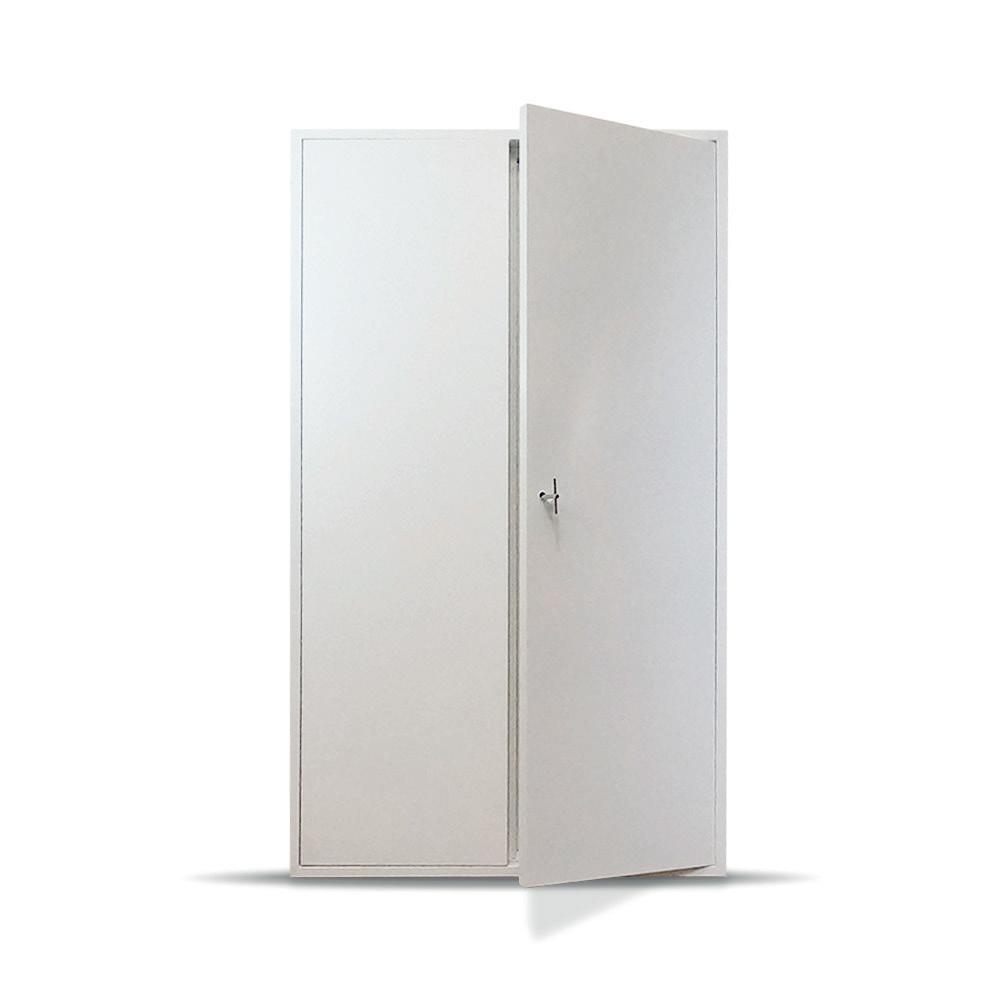
DOORS
120 Minute UKAS fire tested to BS EN1634-1:2018 Fully compliant 36dB acoustic rating BS EN ISO 10140-2:2010 Part B compliant Smoke tested to BS EN 1026 Insulated with a U Value of 0.55W/2mK


Nicola John, Managing Director at Fire Door Maintenance (FDM by UAP Ltd), explores why fire door competency must become the cornerstone of building safety — and how FDM is setting a new industry benchmark with practical training, innovative digital tools, and a first-of-its-kind platform that supports accountability and access for all.
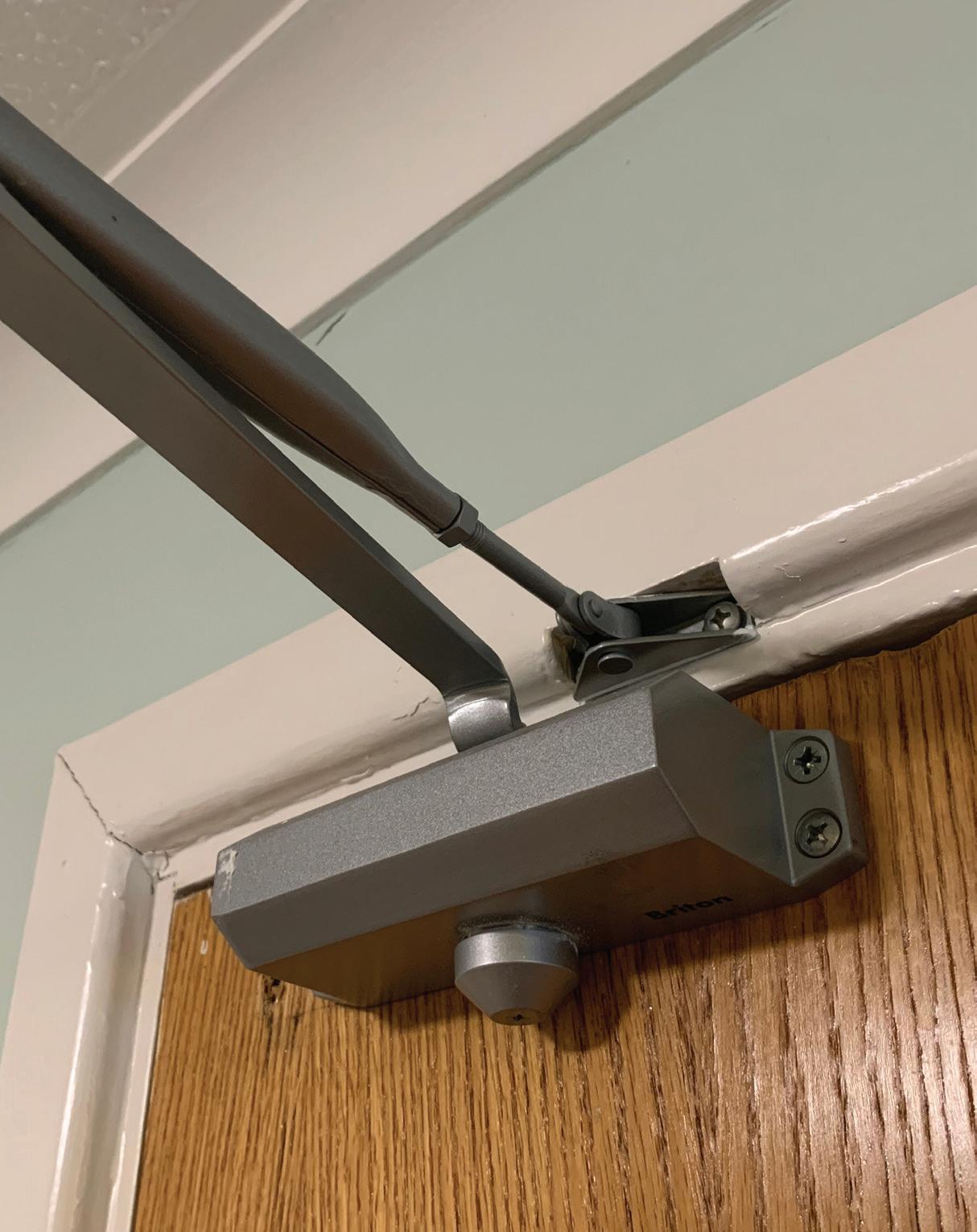

Fire safety doesn’t always look heroic. Sometimes, it’s simply a door. Fire doors are one of the most effective forms of passive fire protection we have — and one of the most misunderstood. They sit in buildings across the UK, largely unnoticed, until something goes wrong. When they work, they save lives. But far too often, they don’t.
We know this because the data is telling us. And we know this because Grenfell made it impossible to ignore.
Around three million new fire doors are installed in the UK every year, but the problem isn’t how many doors we’re fitting — it’s how few are being maintained, checked and signed off by people with the right training.
An estimated 600,000 fire doors in the UK need remediation. In housing, healthcare, education, and commercial properties, doors are damaged, misaligned, incorrectly fitted, or simply not compliant. These are the kinds of issues that compromise their performance in seconds.
Since the Fire Safety (England) Regulations 2022 came into force, buildings over 11 metres tall are now required to have quarterly checks on communal fire doors and annual checks on flat entrance doors. Across the UK’s housing stock, that means an estimated 3.5 billion inspections every year — and that’s before factoring in care homes, hospitals, schools, and offices.
Yet the industry isn’t ready. We don’t have enough trained people to meet that demand. In many cases, we don’t even have consistent standards for what a ‘trained’ professional looks like.
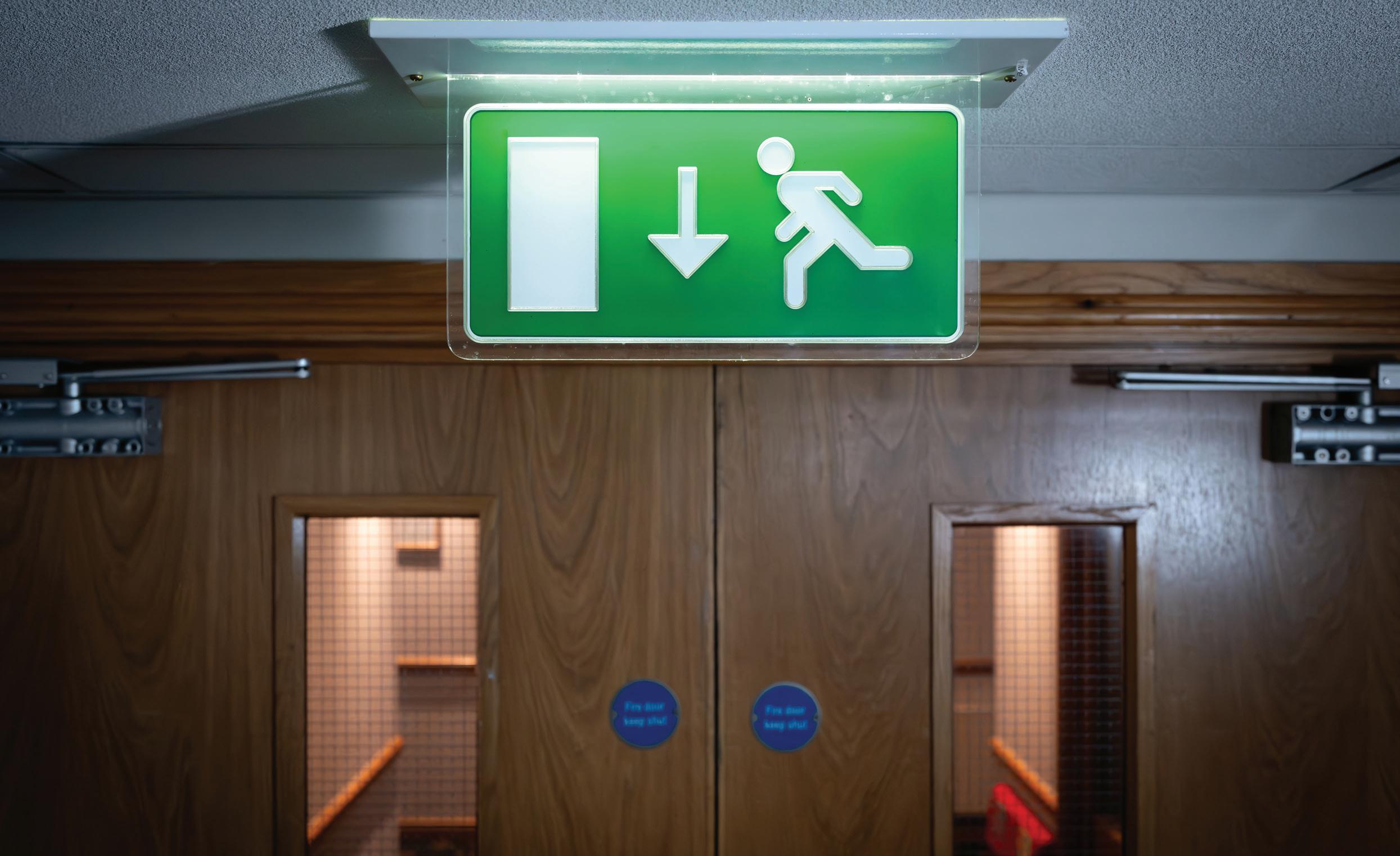
The 2017 fire at Grenfell Tower exposed systemic failures in building safety, from cladding to communication. But fire doors played a role, too.
Many of the flat entrance doors failed far earlier than expected. Some lasted just 15 minutes in conditions they were rated to withstand for 30. Some didn’t selfclose. Others lacked the appropriate seals. It all meant that smoke poured into common areas and escape routes were compromised.
Subsequent inquiry reports confirmed that several doors installed didn’t match the versions tested by the manufacturer. There were installation errors, design flaws, and oversight gaps.
The tragedy prompted 15 specific recommendations related to fire doors. These included tighter inspection protocols, clearer lines of accountability, and better information for residents. The government accepted them; but, years later, many of these changes remain in consultation.
Doors fail when they’re poorly installed. When gaps aren’t measured, seals aren’t replaced, or closers aren’t tested. When installers are rushed, or undertrained, or under pressure to move on to the next job. When checks become tick-box exercises.
Many of the people responsible for inspecting, installing, and maintaining fire doors don’t have specialist training. Some are general contractors, caretakers, facilities staff, or even volunteers. And without the right knowledge, the risk remains.
Fire door safety is being regulated like never before. But unless we close the competency gap, enforcement alone won’t solve this. We need a trained, qualified, and confident workforce that knows what to look for, how to fix it, and when to escalate concerns. And we need to value that knowledge as the frontline safety role it truly is.
isn’t there yet
The uncomfortable truth is this: the UK does not currently have the training capacity to meet its fire door inspection and maintenance obligations.
And this isn’t just a resourcing issue. It’s about approach. In too many cases, fire door qualifications are basic, fragmented, or outdated. Training is theoretical rather than practical. Courses are focused on awareness rather than hands-on understanding. And when people do complete training, there’s little accountability for how that knowledge is applied in the field.
We need to build a pipeline of fire door professionals — not just paper-qualified inspectors, installers, and maintainers, but skilled individuals who understand why each element of a fire door matters, and how it performs in real conditions.
That means raising the standard of qualifications and designing training that reflects real-world risk. It means shifting from compliance culture to competence culture, where understanding isn’t just assumed but demonstrated.
Competency in fire door maintenance needs to be seen as essential, not optional, starting with the way we talk about passive fire protection and shifting mindsets. Fire doors are lifesaving systems and should be treated with the same seriousness as any other emergency measure. That means clear guidance, adequate funding, and appropriate training backed by accountability.
Competency should never be an afterthought. It should be the first question asked when a new door is fitted, or an existing one is inspected and maintained.
FDM is leading this change. Not content with ticking boxes, the team has developed training that goes beyond industry standards — combining theory with hands-on practice to ensure professionals leave not just qualified, but genuinely competent.
To support those already in the field, FDM is developing an easy-to-use app that puts vital information at professionals’ fingertips, bridging the gap between classroom learning and on-site application. And in a first for the industry, it has created a universal platform where individuals can demonstrate their competency on site. This isn’t just a one-off solution, it’s an end-to-end system of support, accountability, and access that the sector has needed for far too long.
FDM recently launched a new Level 3 Diploma in the Inspection of Fire Resistant Doorsets — the most comprehensive qualification of its kind in the UK. Developed in partnership with GQA Qualifications and the National Skills Centre, the diploma blends legislative understanding with real-world application, offering 313 guided learning hours across 12 units.
Crucially, it includes onsite assessments featuring different types of doorsets, carried out by FDM assessors based at the specialist facility — the UK’s first practical training centre. It’s a step towards professionalising the industry, giving learners the time, tools, and environment they need to build confidence and competence that goes with them beyond the classroom, to the sites they work on. It marks another chapter in FDM’s work to close the competency gap, with more to come.
Competency in fire door safety isn’t just technical — it’s behavioural.
It’s knowing the difference between a minor defect and a critical failure, or when to raise a flag. And it’s having the confidence to challenge decisions that compromise safety.
That takes more than a one-day course.
It takes structured, experiential training, delivered by people who understand the risks, the regulations, and the realities of managing buildings day to day.
It also takes consistency. Not every site is the same, but the standard we work to should be.

The post-Grenfell regulatory landscape has brought longoverdue attention to the role of fire doors in protecting life and property. But while new legislation has set out clear expectations, turning those into everyday reality on the ground is a different challenge altogether. Too many buildings still fall through the cracks, and too many professionals lack the clarity, training, or accountability needed to get it right.
If we’re serious about change, it’s time to move beyond good intentions. To meet the expectations set out by recent legislation, and to do right by the lessons of Grenfell, we need action on five fronts:
1 Mandatory minimum qualifications for anyone installing, inspecting, and maintaining fire doors. It’s no longer enough to rely on experience alone. The complexities of fire door design, installation, and compliance demand a recognised level of technical knowledge. Minimum qualifications would provide a clear benchmark, reassuring residents and regulators alike that work has been carried out to a consistent, high standard. Without that, we’re gambling with safety.
2 A centralised register of competent fire door professionals, accessible and transparent. Right now, it’s hard to know who is truly qualified to carry out fire door work. A single, up-to-date register that is independently verified and publicly accessible would help housing providers, building owners, and residents identify professionals they can trust. It would also help to drive up standards across the industry by rewarding those who invest in their training and accreditation.
3 Standardised training frameworks recognised across the UK. We can’t build a safer industry on a patchwork of inconsistent training routes. Clear, nationally recognised frameworks are essential in ensuring everyone is working to the same level, and that qualifications mean the same thing and carry the same weight wherever you are in the UK. Whether we’re talking about inspectors in Lanarkshire or installers in Leeds, the baseline of knowledge should be consistent.
4 Investment in training capacity — particularly for housing providers and social landlords. There’s no point mandating qualifications and training without giving people the means to access them. That’s especially true for stretched teams in housing associations and local authorities, where capacity and cost are often barriers to upskilling. If we’re serious about raising standards, we need to make sure the training is there — and that it’s affordable, accessible, and scalable.
5 Clear enforcement structures so that failure to meet inspection, installation, and maintenance duties carries real consequences. The postGrenfell landscape has seen new rules and responsibilities introduced, but too often, enforcement is vague or inconsistent. We need clear lines of accountability and a willingness to act when things go wrong. Without robust enforcement, legislation risks becoming a box-ticking exercise — and residents remain at risk.
The longer we wait, the greater the risk. We can’t afford a situation where lives depend on doors, and no one knows who signed them off. These five areas aren’t optional upgrades: they’re essential foundations for a culture of competence and accountability. And they need to happen now.
The sector has made progress. But progress is not enough.
We’ve seen what happens when standards slip. We’ve heard the stories, read the reports, seen the footage. We know how quickly smoke spreads; how many minutes matter. So, there’s no going backward: only forward.
That means building an industry where competence is the norm, and where people are trusted because they’re trained — not just because they’ve been doing the job for years. Where fire doors are recognised for what they are: the last line of defence between a fire and the people inside. And where those responsible for safety are never left to guess. The stakes are too high for ambiguity, shortcuts, or silence.
We owe it to every resident, every building user, and every family affected by fire to get this right. That starts with people who know what they’re doing — and have been given the tools, training, and time to do it properly.
Gavin Skelly, CEO of growing fire safety industry body Fire Aware, spoke of the moral and behavioural changes in culture needed to improve standards at the Scotland Housing Leaders’ Summit.
He called for unity of all of those working across the entire fire safety supply chain to consider
their moral responsibility including national and local housing associations, local councils and developers across the UK.
To change the culture of the built environment, he outlined the actions being taken by Fire Aware in introducing a moral code of conduct via a series of charters designed to influence how member companies behave in upholding their duty of care.
Gavin Skelly said: “Of course we understand
the need for competence. But when dealing with an industry that the public relies on to keep them safe, there has to be more. There has to be a tangible recognisable commitment to safety. There must be unity in the message all duty holders send to the public if they are to relate to its meaning.
“As with a number of other sectors and professions, the fire sector has a wide array of duty holders, but they all share one common requirement, which is to
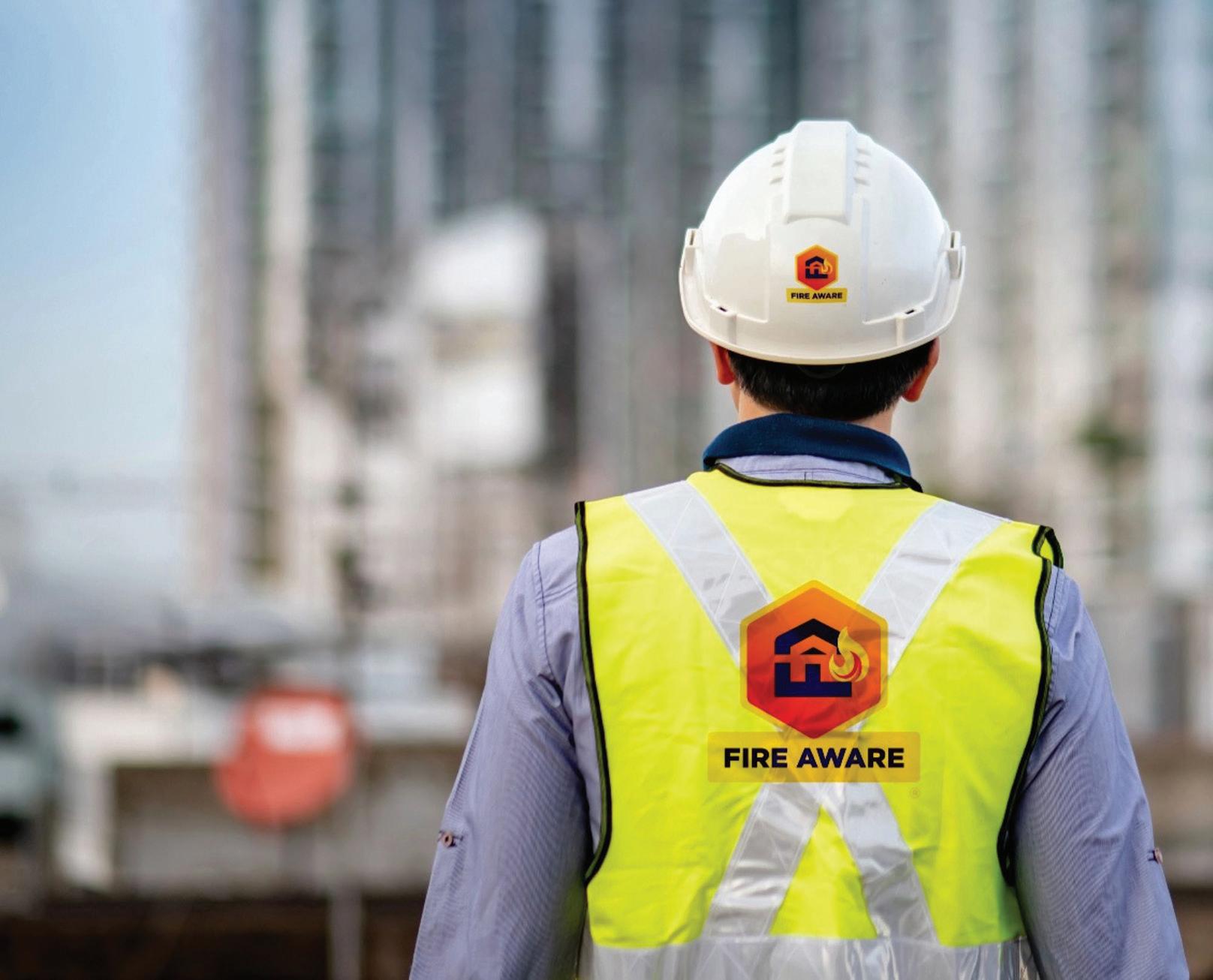

Gavin Skelly
understand they are there primarily to keep the public safe.
“We are appealing to the fire safety industry and those with responsibility for making decisions to think about their moral duty from the outset of any project. We know from the feedback we receive from our members that the industry is keen to make this work. We believe in going above and beyond legislation and minimum standards and test regimes.
“Members of the Fire Aware community are taking a stand. They have told us they care and want to commit to best practice. Working together, members can contribute to the wider cause of safety in the interests of those people using inhabiting the buildings and spaces we create.”
Fire Aware is a recognised membership body serving the built environment and related sectors with a common aim to work and trade responsibly to all best practice standards in the interests of the safety of the general public.
• UKAS Accredited:
BS EN 1634-1 – internal and external use.
• Exceeds FD30: Average 52 mins, up to 70+ mins fire resistance.
• Building Safety Act Ready: Traceable, verifiable performance.
• Agrifiber Core: Renewable, stable and consistent.
• Long-life Durability: PAS 24 security, 2mm GRP skins, 25-year guarantee.








Gateway 2 Compliance, introduced under the Building Safety Act 2022, is creating significant disruption across the Construction Industry.
At this stage of the approval process, a complete and fully coordinated design must be submitted and approved before any building work can begin. This requirement represents a major shift from established practices where design and construction traditionally overlapped, allowing issues to be resolved on-site. The result has been widespread project delays, increased costs and logistical difficulties as developers and contractors adjust to the stricter regulatory environment.
Much of the challenge lies in the scale of information now required. Gateway 2 places a strong emphasis on
detailed documentation and maintaining the ‘golden thread’ of information, ensuring that design intent, safety measures, and materials are all fully recorded. Many organisations, particularly smaller firms, are struggling with the resources and digital systems needed to meet these demands, added to this is a lack of clarity in how regulators will assess submissions, which has created uncertainty and hesitancy in moving projects forward. For an industry already under pressure to deliver more housing quickly, these bottlenecks are proving difficult to manage.
However, despite the frustrations, Gateway 2 is an essential step towards raising safety and quality standards in construction. The system was introduced to prevent unsafe compromises and poor record-keeping, lessons tragically underscored by the Grenfell Tower fire. By ensuring that critical safety measures are embedded in the design before work begins, Gateway 2 helps protect
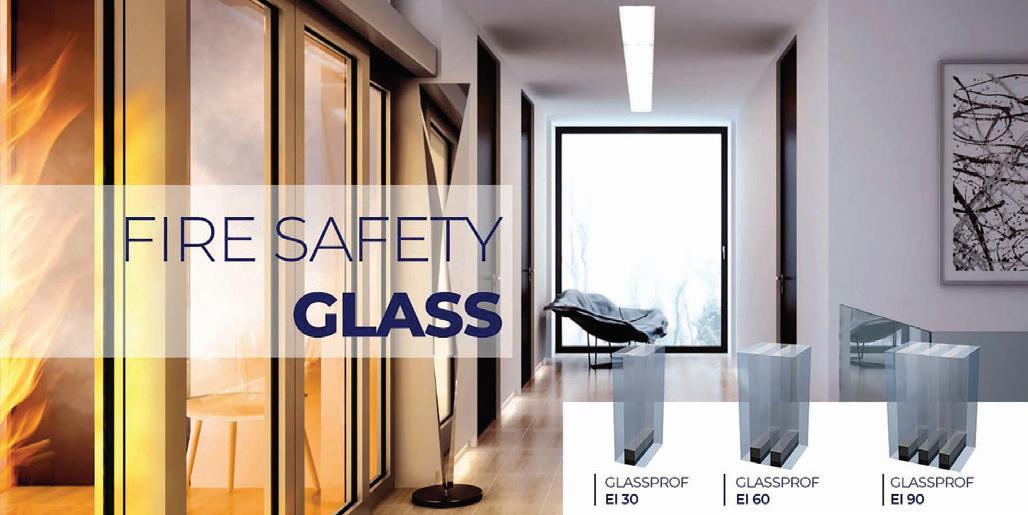

residents and provides greater accountability throughout the building’s lifecycle. Over time, the requirement for earlier collaboration, better coordination, and improved transparency has the potential to transform industry culture, leading to fewer defects, safer buildings, and stronger public confidence. Whilst the transition is undoubtedly challenging, Gateway 2 should be seen as an investment in a safer, more professional built environment.
Aluprof UK has demonstrated a strong commitment to aligning with the Building Safety Act 2022 requirements, particularly regarding Gateway 2 approvals. Their broad range of high-performance façade solutions, all 3rd party tested to relevant standards, with over 1,500 third party certificates of compliance, makes Aluprof the ideal partner. Their major projects team collaborates closely with specialist façade contractors to ensure that all

necessary supporting documentation and compliance measures are meticulously prepared for submission to the Building Safety Regulator (BSR). This proactive approach is crucial, especially considering recent challenges faced by the BSR, such as delays in processing Gateway 2 applications due to an outsourced delivery model and a shortage of in-house technical expertise.
Choosing Aluprof fireresistant screens together with Glassprof glass provides a reliable and fully tested solution for safeguarding buildings while maintaining design flexibility. Aluprof’s systems are engineered to deliver high levels of fire resistance, compartmentation, and smoke control without compromising on aesthetics, while Glassprof glass complements these systems with certified fire-rated glazing that ensures transparency, natural light, and architectural freedom. Together, they offer architects, contractors, sub-contractors and building owners a trusted combination of safety, compliance,
and performance for all construction projects.
Aluprof’s vertical integration benefits specifiers by ensuring consistent product quality, streamlined supply chains, and enhanced technical support. With inhouse system design, manufacturing, and testing, Aluprof delivers high-performance aluminium systems that meet stringent UK and EU building regulations, including Gateway 2 requirements under the Building Safety Act 2022. This integrated approach allows for greater customisation, faster lead times and improved cost efficiency, giving specifiers confidence in project timelines and compliance. Additionally, direct collaboration with Aluprof’s experts ensures tailored solutions that align with architectural intent whilst enhancing sustainability and energy efficiency.
Current statistics show that Gateway 2 compliance remains a major challenge for the Construction Industry. Approval rates are very low, with only around 10–14% of applications being approved. For example, as of mid2025, just 20 out of 187 new higher-risk building

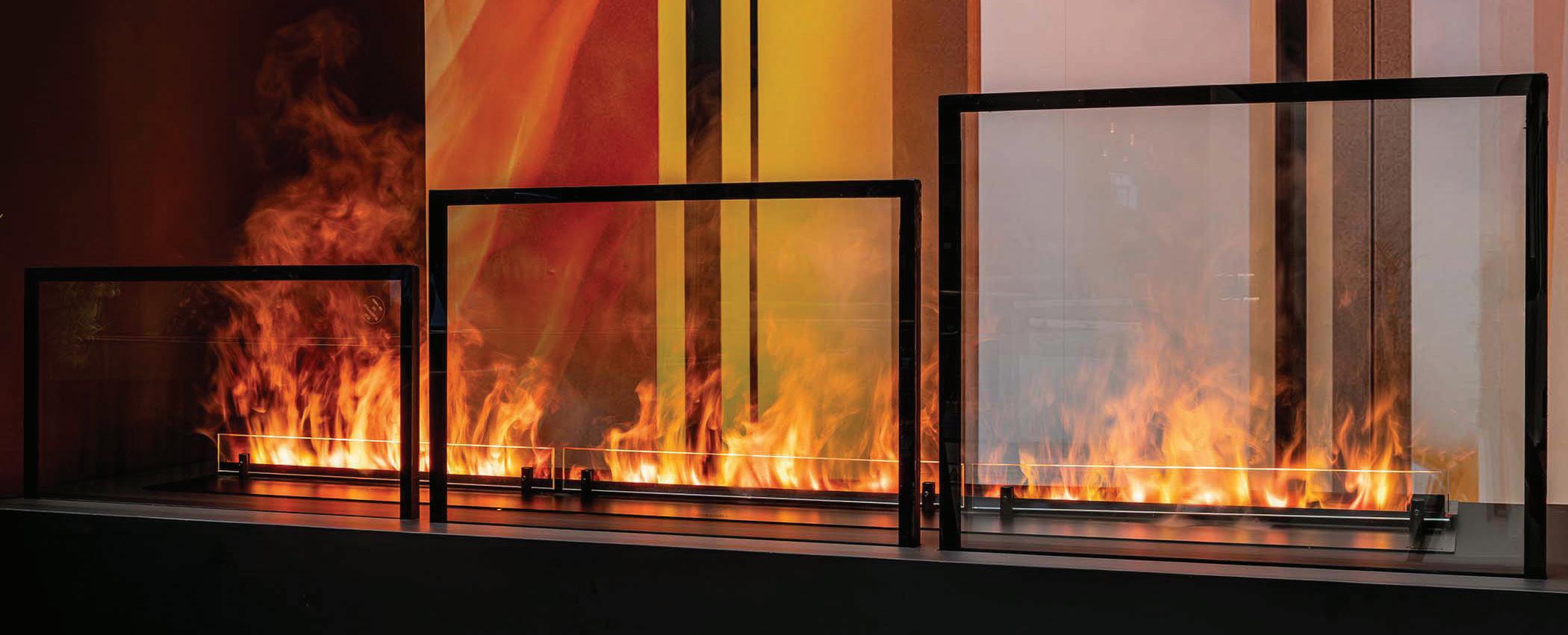
applications had received approval. Across all new build and remedial submissions between late 2023 and 2024, the success rate was similar at 146 approvals from 1,018 applications. The vast majority of applications—up to 75%—are being rejected due to incomplete or poor-quality submissions, while a further 20% are ruled invalid because they fail to meet statutory requirements or lack essential documentation.
Delays are also a serious issue, with the average approval taking around 22 weeks, far exceeding the statutory 8–12 week timeframe. In some cases, projects have been delayed by 40 weeks or more waiting for Gateway 2 clearance. Freedom of Information data shows that by early 2025, over 700 applications were still pending, adding to a significant backlog. These statistics highlight both the complexity of the new regime and the ongoing difficulties applicants face in providing the detailed fire and structural safety information required by the Building Safety Regulator.
Speeding up Gateway 2 approvals requires both improved application
quality from Industry and greater efficiency within the BSR. Many delays stem from incomplete or poorly prepared submissions, so design teams must ensure that all structural and fire safety details are fully coordinated and documented before applying. Investing in specialist consultants, carrying out thorough pre-application checks, and engaging earlier with the regulator can reduce the risk of rejection. Better training for architects, contractors, and consultants on Gateway 2 requirements would also help raise standards and cut down on the high percentage of invalid or incomplete applications currently being submitted.
On the regulator’s side, resourcing and process improvements are key. The BSR could speed up approvals by expanding its review teams, streamlining the multidisciplinary assessment process, and introducing clearer guidance on what constitutes a compliant application. Phased or staged approvals, already being trialled in some cases, may also help by allowing work to progress whilst certain technical details are finalised.
Ultimately, a combination of better-prepared applications and more efficient regulatory handling will be needed to reduce backlogs, shorten determination times, and give the construction sector greater confidence in navigating Gateway 2. Aluprof UK have been supporting specifiers in the UK and Ireland for over fifteen years with advanced systems that include, high performance windows doors and facade systems. Many UK and Ireland based fabricators and installers supply these systems and are on hand to offer surveys and cost analysis as to what improvements can be made with likely paybacks. Further information about the wide range of systems and specification support is available through the company website at www.aluprof.co.uk or for home improvement at www.aluprofliving.com and direct from their UK head office in Altrincham by phoning 0161 941 4005
By Tom CherowbrierMajor Projects Manager at
Aluprof UK

Growing fire safety industry organisation Fire Aware is driving the move for cultural change by raising moral and ethical standards across the built environment sector through a code of conduct and series of charters.
By raising the consideration of responsible behaviour in all of those working in the supply chain, and in doing so helping to support technical knowledge wherever possible, it believes it can make a difference in delivering the cultural change in the construction industry demanded by Dame Judith Hackitt in 2018.
Gavin Skelly, CEO of Fire Aware, said: “We’re already seeing a lot of interest in our organisation and what we stand for. Membership is growing quickly and the organisations joining us want to adhere to all best practice. We are seeking to shift the culture of the built environment sector both morally and technically. We believe in setting standards.
“Importantly, the visible moral position of member companies can also be

performance tested, ensuring the services they provide are in line with their moral undertakings. Under performance can be monitored by the Fire Aware organisation and agreed action taken in the event of consistent disregard for the safety of those who inhabit the buildings we create and manage.”
The 2018 Hackitt Review into building regulations and fire safety found that the industry had a tendency to focus on cost-saving rather than building safety, and it demanded that the onus for safety be placed on the entire industry, from design to completion and maintenance.
The Fire Aware Charter Conditions do not seek to override any legal obligations as specifically imposed
by those of sectorspecific professions. All members must abide and comply with the law and regulations that are relevant within their specialism in addition to the Fire Aware Code of Conduct, and relevant charter.
Supporting the code, Fire Aware’s series of charters apply to main contractors, property developers, building management, designers, local councils, specialist contractors and subcontractors.
The charters ask the member business to consider the safety of the end user, and to go above and beyond minimum standards to promote an enthusiasm within the member business to identify itself as a business that cares. It also recognises those
outside of the fire sector, who, while holding a duty of care are not specifically part of the fire sector.
Gavin Skelly added: “We and our members are addressing the wider issues of safety in the interests of those people using the buildings and spaces we create. We are asking any organisation considering how to improve their moral and technical standards of operating in the built environment to talk to us.”
Fire Aware is a growing, recognised membership body serving the built environment and related sectors with a common aim to work and trade responsibly to all best practice standards in the interests of the safety of the general public.




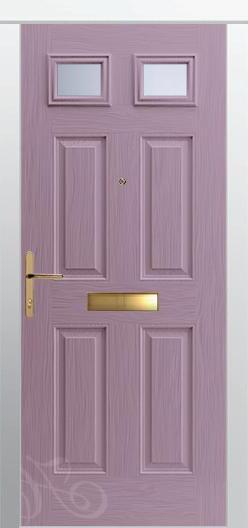
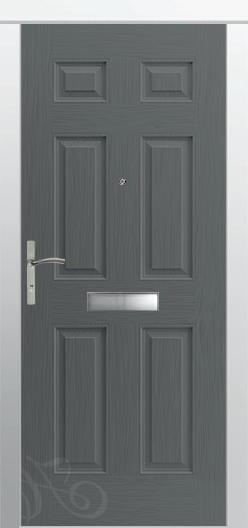
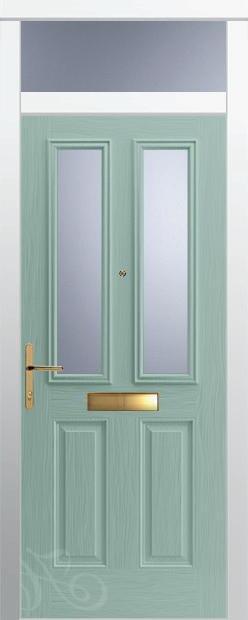
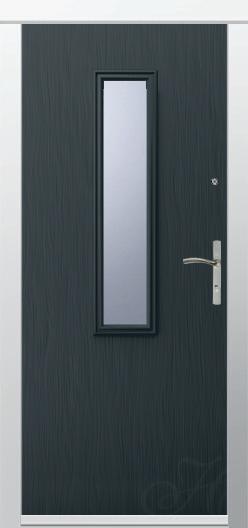
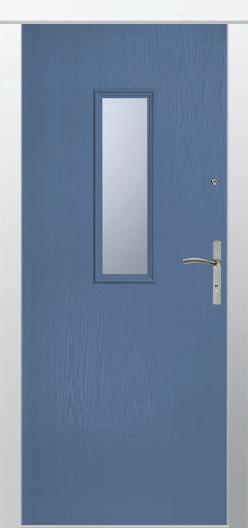
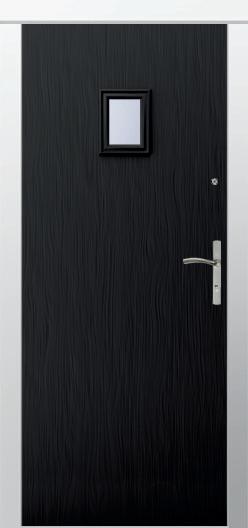
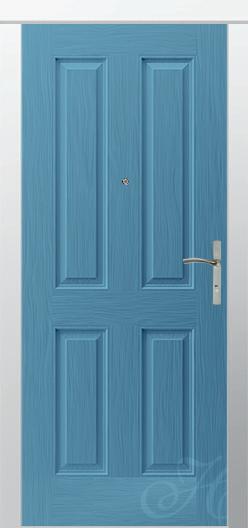








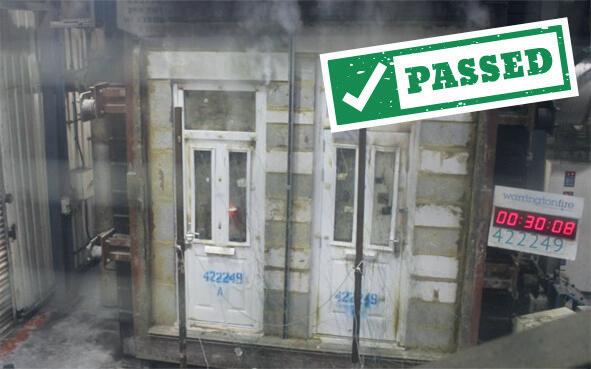

When it comes to fire safety, there is no room for compromise. That’s why building managers, housing providers, and specifiers across the UK continue to put their trust in Permadoor; the original manufacturer of specialist composite fire doors and one of the most respected names in the industry.
Permadoor has consistently set the standard for quality and safety, pioneering solutions that place compliance and performance above all else. Today, as part of the Epwin Group, Permadoor continues to strengthen its position as a trusted industry expert, delivering not only exceptional fire doorsets but also a full-service contract management solution that takes the risk out of fire door specification, installation and lifecycle management.
Permadoor’s legacy is built on a simple but vital principle: fire doors save lives. The company has long been recognised as a trailblazer in designing and manufacturing third-party certified composite fire doorsets for the social housing and affordable homes sector. With over 35 years of specialist experience and Group-wide investment in research, development and testing, Permadoor offers building managers, housing providers and tenants complete confidence in door performance.
Their extensive range includes both internal and external fire doorset solutions, all precision-engineered to meet the highest standards of fire safety, security and compliance. By combining robust certification with a commitment to continuous improvement, Permadoor has earned an enviable reputation as a reliable and innovative partner.
One of the most pressing challenges in fire safety is ensuring that doors are not only manufactured to the highest standards but also installed correctly. A compliant door poorly fitted is a compromised door. Recognising this, Permadoor has developed a comprehensive contract management solution; a full manufacture, supply and install service designed to eliminate risk for building managers.
From the earliest site survey and tenant liaison through to quotation, manufacture, installation, and aftercare, this full lifecycle solution delivers peace of mind at every stage. By entrusting the process to Permadoor’s proven network of nationwide installers, stakeholders can be confident that every fire door will perform as intended, safeguarding both lives and properties.
In the post-Grenfell landscape, the concept of the “golden thread” has become central to building safety. This golden thread of information ensures that critical safety details are captured, preserved and accessible throughout the lifecycle of a building. For fire doors, where ongoing performance and maintenance are essential, this digital record is particularly important.
Permadoor has embraced this requirement with the introduction of its innovative digital data pin solution. Small in size but powerful in capability, each data pin is embedded within the doorset, linking to a secure cloud database. Here, vital details are stored, including manufacturing specifications, hardware lists, installation records, inspection dates, maintenance logs and compliance certification.
This system not only ensures that every Permadoor fire doorset can be uniquely identified and tracked throughout its lifecycle, but it also provides building managers with the reassurance that they are meeting their legal and regulatory obligations. The data pin is a
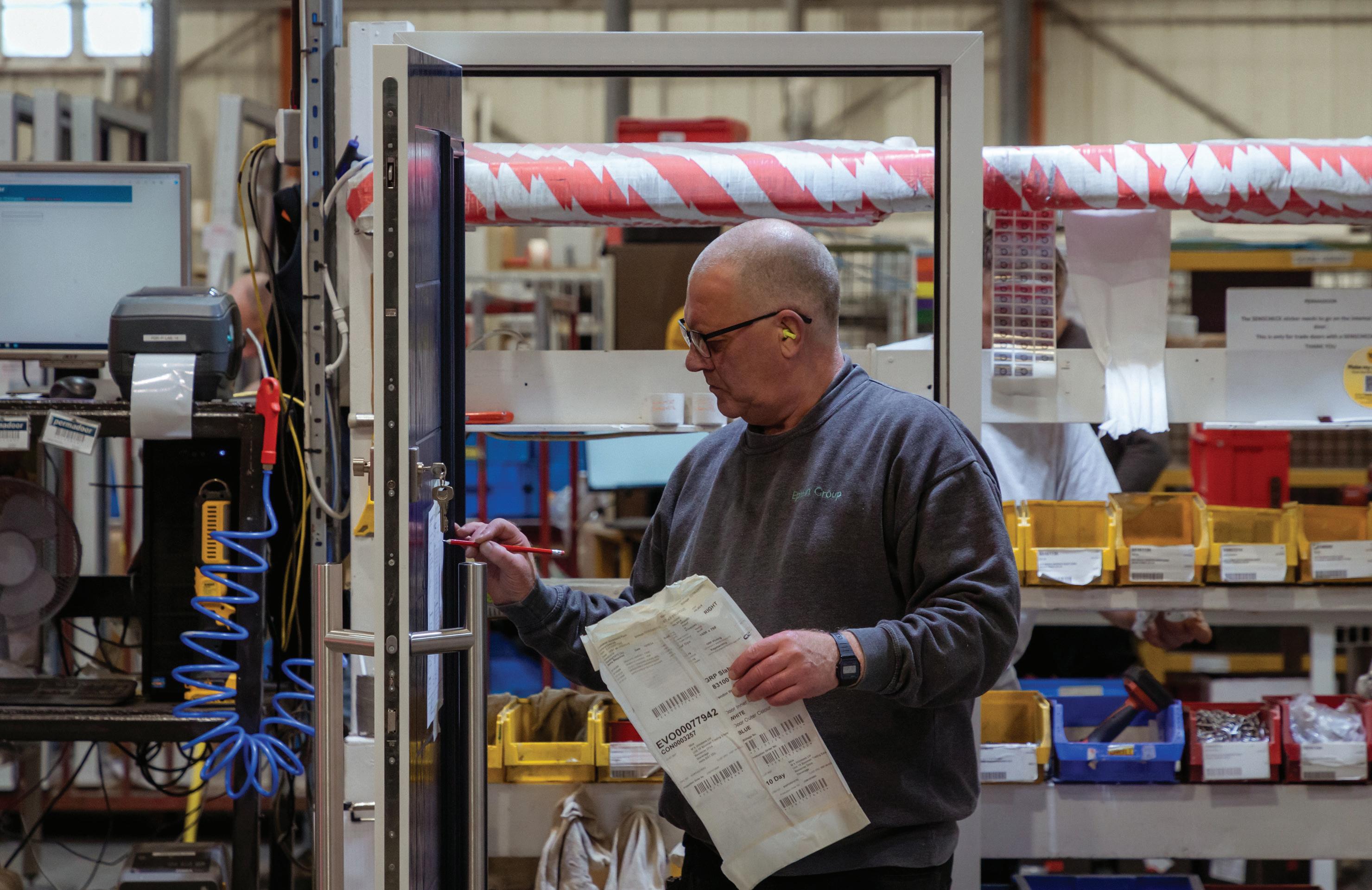
practical, future-ready tool that supports full golden thread compliance, strengthening collaboration across the door industry and setting a new benchmark for transparency.
For Permadoor, compliance is never optional, it is the cornerstone of every decision. All fire doorsets undergo rigorous third-party testing and certification to ensure performance can be relied upon in the most demanding circumstances. By partnering with accredited certification bodies, Permadoor guarantees that its products consistently meet and exceed regulatory requirements.
This dedication extends beyond safety to aesthetics. Permadoor’s fire doors don’t just protect, they also enhance buildings. A wide variety of design options, including newly introduced sidelights, toplights and fanlight specification options, offer building managers the flexibility to combine compliance with style. This commitment to continuous improvement demonstrates Permadoor’s ability to innovate in ways that meet the evolving needs of both specifiers and residents.
Permadoor’s commitment to innovation and industry collaboration will be on full display at London Build in November. The company will showcase
its comprehensive range of solid timber core and GRP composite fire door solutions, alongside its groundbreaking contract management service. Visitors will have the opportunity to learn more about how Permadoor is redefining best practice and delivering total peace of mind to stakeholders across the social housing and affordable homes sectors.
Fire doors remain one of the most critical elements of building safety. Their ability to contain fire, protect escape routes, and ultimately save lives depends not only on how they are made but also on how they are installed, maintained, and monitored. Permadoor’s comprehensive approach - blending innovation, compliance and customer care - ensures that every stakeholder, from building managers to tenants, can trust in the integrity of their fire doors.
When it comes to compliance, performance, and trust, Permadoor doesn’t just follow industry best practiceit helps define it.

Kirk Smith of Allegion UK outlines why fire door closers are central to maintaining fire safety standards in buildings and advises decision makers on how to select the right hardware for their project.
Fire doors are designed to save lives. When closed, they form a crucial barrier against smoke and fire and provide vital time for occupants to escape in an emergency situation. An open fire door on the other hand is rendered useless in the event of a fire, and for this reason, fire door closers are equally recognised for their lifesaving capabilities.
The relationship between fire doors and fire door closers is synergetic in fact, with both considered key elements of a building’s passive fire protection system. When a fire door must close to completion during a fire incident, it will always rely on its mechanical closing device to do so effectively. Door closers are an essential operational component and must be capable of closing the door leaf from any angle of opening and strong enough to overcome the resistance of any latch seal, ensuring the door is held firmly in place by its frame.
Whilst all fire door closers serve this same function, decision makers are reminded that an incorrectly specified door closer can compromise the integrity of an entire fire door assembly. With different project requirements and hardware options available, specifiers and decision makers alike must be confident in their
door closer selection. Where occupant safety is on the line, what should specification teams look out for?
Kirk Smith of Allegion UK explains: “Fire door closers are paramount to the success of fire door safety and specification should be a structured process to ensure appropriate closers are chosen at each touchpoint. There are various types of door closers available on the market, but whether concealed or surface-mounted, all controlled door closer models use spring hydraulics to close and engage fire doors onto their latch, allowing buildings to compartmentalise areas and provide occupants with vital escape routes. To perform this task, fire door closers call upon a number of elements including: the door closer mechanism, mounting hardware, arms and links.
“There are often a number of considerations to make when choosing between door closer products. In any instance, specifiers must first establish whether their door is a fire door or a non-fire door, for example. To

ensure a closer is fit for purpose and meets fire safety compliance, all door closers installed on fire-rated doors must be tested to EN 1634 and UKCA and CE marked. Mechanical variants must also conform to EN 1154 and electromagnetic hold-open devices to EN 1155, which test and classify hardware over its category of use, number of test cycles, power size, fire behaviour, safety and corrosion resistance. A Declaration of Performance (DoP) must also be reviewed to ensure a door closer is certified when fitted with backcheck or delayed action.
“From an operational viewpoint, it’s important that a chosen door closer meets the needs of a building and its users too. Buildings with high footfall will often benefit from an electromagnetic holdopen device, which keep certain fire doors open until a fire alarm is activated, in which the system will automatically release and close
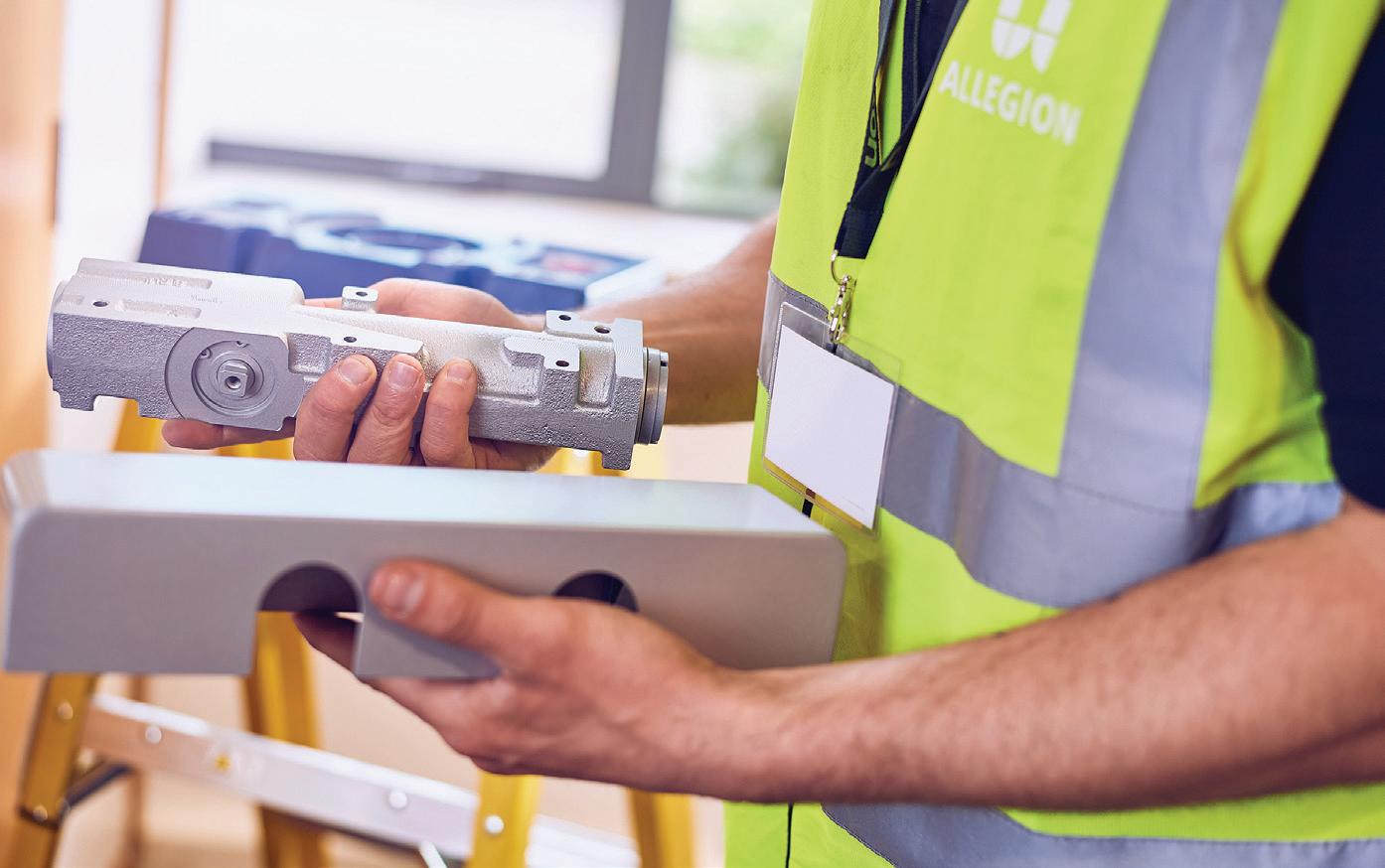

doors to completion. The size of a door can sometimes be a key factor when selecting a door closer too. Unusually tall or heavy doors may often require a door closer with a higher power size, in accordance with EN 1154 - it’s key to remember that fire doors require a minimum Power Size EN 3 to conform to this standard. Should a specification team be unsure about the size of the door, it is often best practice to choose a door closer unit that can be adjusted during the installation stage.”
Regardless of where a fire door may be positioned, its size or how it may be used, operation must always be controlled, as this will prevent future damage to the door and its frame - which can be a crucial step towards retaining fire safety performance.
Kirk Smith continues: “Surface mounted closers are the most durable and common type of door closer, with units mounted to the surface of the door or frame with a quick and simple installation process. Comparably, concealed door closers are fitted within the door leaf and frame and whilst providing the functionality of a surface mounted closer are hidden from view as a way of enhancing aesthetics. When reviewing the mounting requirements, it’s important to consider door closers can be installed in different ways, often depending on the application. The four most common ways to fit a door closer are:

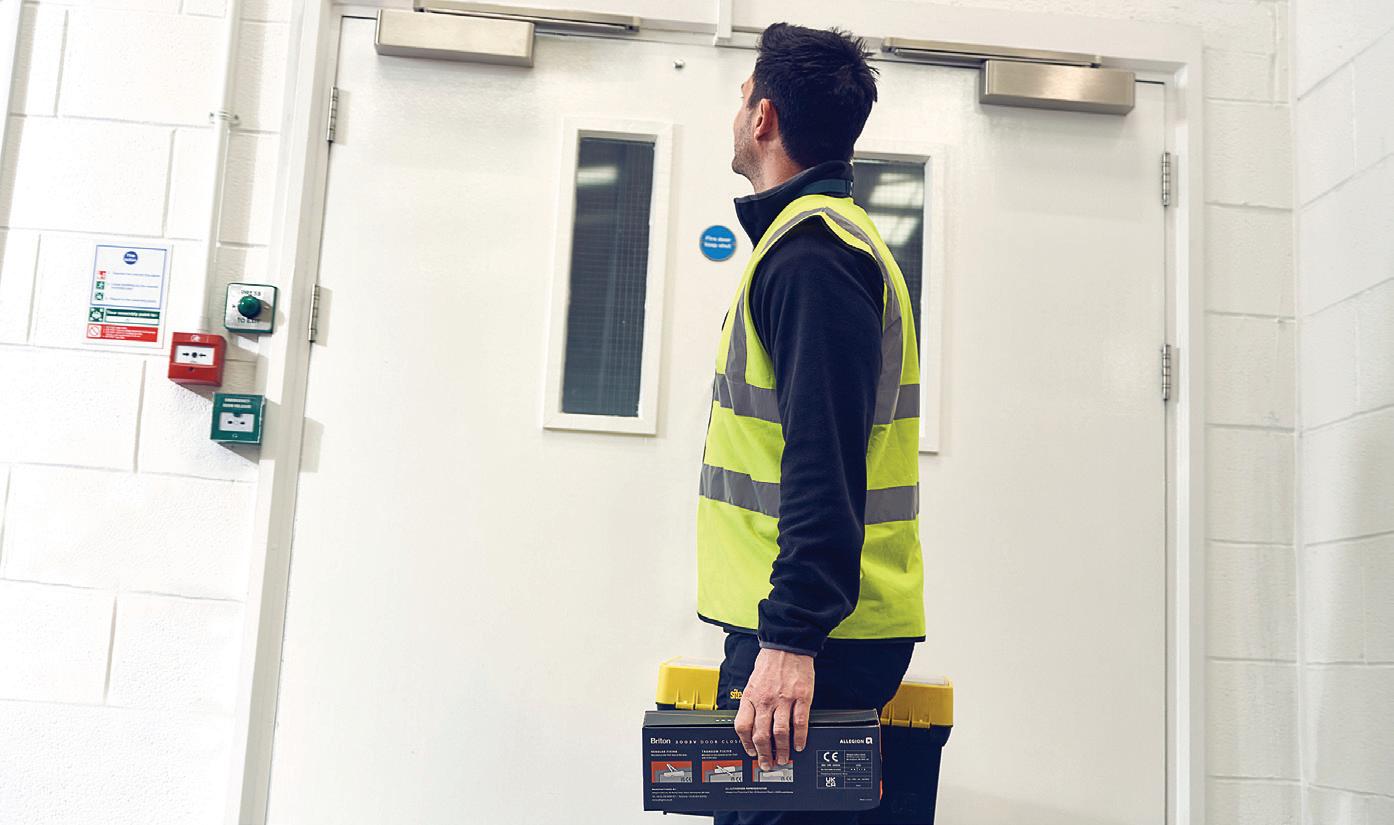
• Figure 1 door mount fixing: where the closer body is mounted on the pull face of the door.
• Figure 61 transom mount push side: where the closer body is mounted on the transom, on the push side of the door.
• Figure 66 parallel mount push side: where the closer body is mounted on the push side of the door.
• Slide track fixing: where the closer with slide arm and track is door or transom mounted, on either the pull or push side of the door.
“Specifiers must also evaluate whether backcheck control is necessary. Door closers with adjustable backcheck can better control the speed of the door, slowing it down prior to making contact with a door stop or before reaching the fully open position. This function prevents or minimises
damage to the door, hardware and adjacent walls, which would otherwise be caused by the door being forcefully open or caught by a gust of wind.
“Equally, specifiers must consider whether a door closer requires delayed action. A delayed action closer offers a period of delay from when the door is opened to closed, which is usually set to be a maximum of 25 seconds (recommended for fire doors). This functionality makes delayed action closers ideal for environments that require easy passage, such as doors used by children, the elderly or wheelchair users, for example. With this in mind, decision makers should always check the Declaration of Performance (DoPs) and certification on fire door closers, ensuring they will remain certified and perform in usekeeping fire doors closed when it matters most.”
For more, visit www.allegion.com
UK reviews the critical nature of escape routes in school buildings and how fire door hardware plays a role in keeping students safe and emergency exits functional.
Whether it’s the end of the day or end of term, when schools close, it’s not unusual to see children and staff alike scrambling out the doors as they head for a much needed period of relaxation. Though, more vital than finding an exit for a break is the need to safely and swiftly evacuate school premises when an emergency situation arises. When fire breaks out in a school building, every second counts. Panic and emergency escape routes provide a direct path to safety and are critical in minimising risk and the time spent evacuating, and as a result, are highly regulated in educational facilities as per the Regulatory Reform (Fire Safety) Order 2005 and the Building Bulletin 100 (BB100). Accordingly, designated panic and emergency routes must be highlighted with concise signage, remain clear at all times and contain fully compliant and operational fire exit doors -
which are recognised as the final point of escape.
During term time, when a school is at its busiest, staff, students and visitors must be confident in locating and traversing their nearest emergency exit route at any given time. Regular fire drills, evacuation plans and staff training can play a critical part in ensuring the effective use of escape routes in schools, though, often overlooked is the important detail of exit hardware. Where neglected routes can turn a manageable emergency into a potentially dangerous situation, duty holders are urged to recognise the importance of functional fire exits and how exit hardware keeps them operational.
School buildings are often more complex than they first appear. Between sprawling corridors, high-traffic communal areas and frequent transitions between classrooms, halls and outdoor areas, there are various challenges and vulnerabilities to consider when it comes to fire safety and the accessibility of escape routes.
Fire is an unpredictable danger for any facility, made more apparent
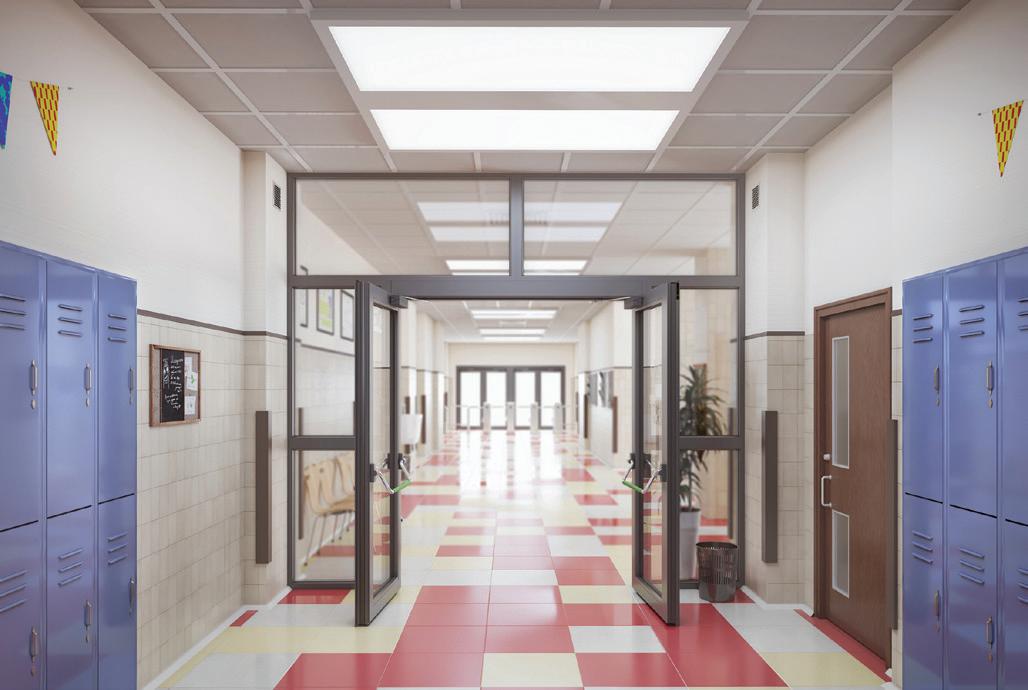

in school buildings by the presence of flammable materials - such as art supplies, paper and chemical substances in science labs, for example. In some schools, arson also remains a real concern, further elevating the chance of fire and reinforcing the need for effective emergency escape routes and operational fire exit doors. In any case, escape routes must not only be compliant but robust enough to support an orderly evacuation under duress, and for that, correctly specified, installed and maintained fire exit hardware is key.
In panic situations, particularly where children are involved, ease of use and reliability are fundamental. For schools, where there are usually more than 60 occupants present, panic exit hardware is a typical installation on fire exit doors, with horizontal push bars and pads used for intuitive egress at the end of escape routes. These panic devices are designed to provide safe and effective escape through doorways with

minimum effort and without prior knowledge of operation. Horizontal push bars for example, are often utilised on external outward opening doors, with panic hardware required to cover at least 60% of the door width, ensuring devices are easy to find and operate in an emergency. All panic exit devices must also be fitted to comply with the harmonised version of EN 1125 Panic and EN 179 Emergency standards and ensure UKCA and CE markings are present.
Far too often, escape routes are compromised in school buildings as a result of poor planning and a lack of fire exit maintenance. Where insufficient signage, blocked exit routes and untrained staff are common oversights that can severely impact the effectiveness of emergency exits, poorly maintained exit hardware could be the difference between safe escape and disaster.
The durability of exit hardware is regularly put to the test in school buildings, with wear caused by high footfall, heavy usage and vandalism. With this in mind, a duty holder or responsible person (often the headteacher or facility manager) is required to perform regular fire risk assessments to ensure appropriate precautions are in place to safeguard pupils and staff. As part of their duties, it is recommended that maintenance checks are conducted on a regular basis on escape routes and that all fire door hardware is in
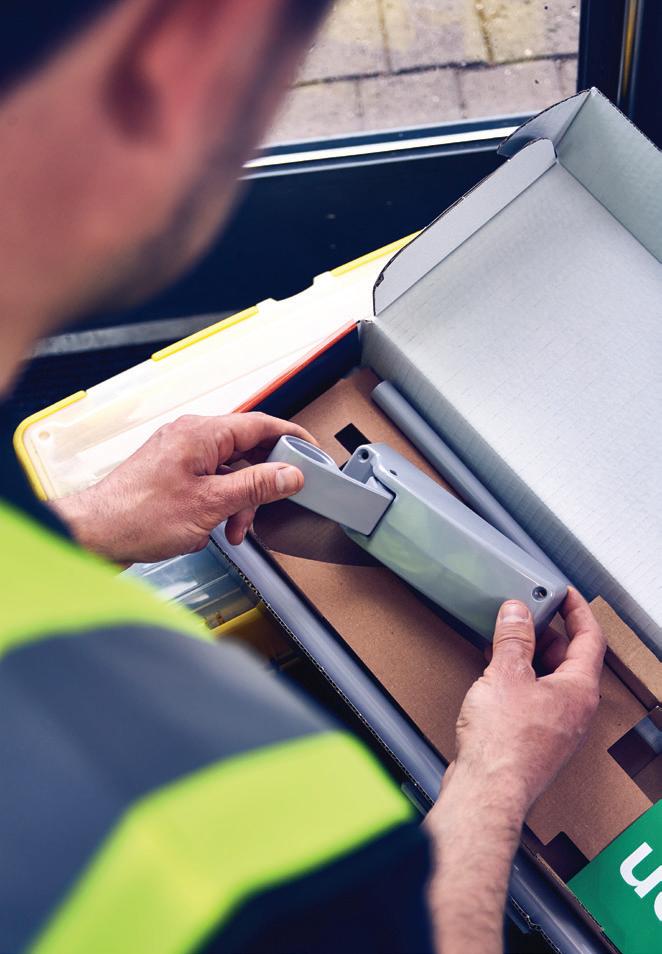
correct working order, ensuring all components are present, in satisfactory working condition and operate as follows:
1) When the horizontal bar is pushed, it should unlatch the door immediately without requiring a key, knob or other tools. The mechanism should be intuitive and require minimal force to open. Once operated, the door should also return to its original position.
2) Pushing the bar should release the latch and or bolts, allowing the door to swing open freely, facilitating rapid evacuation.
3) The hardware should normally be latched to prevent unauthorized entry from the outside. A door may be locked from the outside with a key or locking device, but from the inside should always be operable without a key.
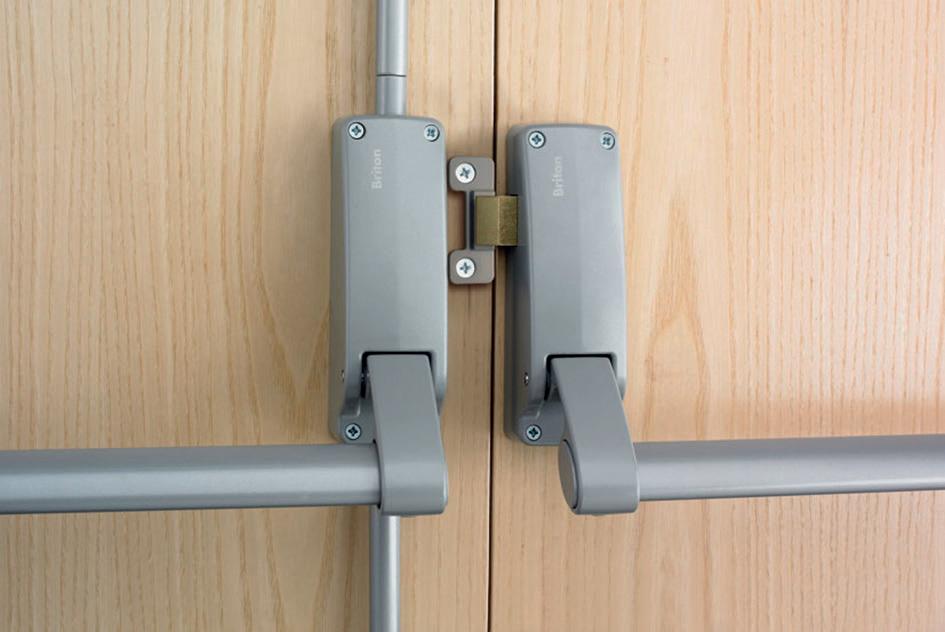
4) Some panic bar models may include alarms or signals when the door is opened in an emergency or may have an optional dogging feature to keep the door open temporarily.
5) Hardware must meet local building and fire safety codes. Typically, it should be rated for a certain number of cycles and withstand specific forces. When on fire doors, hardware should also hold a fire rating.
Worn or faulty panic hardware can delay an exit door from opening or may simply cause the door to fail entirely, rendering a carefully planned and clear escape route useless in the event of a fire. In any case, should a fire door not be operating as intended, it’s imperative that a school’s responsible person seek out professional advice to ensure maintenance is carried out quickly and professionally, especially when children are present.
Schools will always be thought of as places of learning, care and responsibility, and with that there is an ongoing duty to protect the lives of our next generation and those who nurture them. To truly mitigate the risk of fire, responsible parties must work together to guarantee safe egress is possible at all emergency exits by specifying, installing and maintaining appropriate hardware fit to meet the demands of school settings. After all, an escape route is only as reliable as the exit hardware found throughout it.
For more, visit www.allegion.com

A lack of clarity about what it means to be “competent” to install a fire door has been a longstanding issue for the construction sector – but a new Competence Framework for specialist fire door installers now promises to set that straight. Richard Kowalski, Technical Manager for Doors at Stairways Midlands, who was among the industry voices behind the framework, explores this vital turning point.
What does it mean to be competent to install a fire door? For years, regulations have
been clear that only competent individuals should undertake this safety-critical work – but what “competent” actually looks has never been properly defined. The result has been inconsistency, uncertainty, and in some cases dangerous practice.
That confusion is now on its way out. A new Competence Framework for Site Carpenters and Specialist Timber Fire Door Installers, developed by the Construction Industry Training Board (CITB) under the Industry Competence Steering Group (ICSG) – Sector Led Group 10 (SLG10), is providing long-awaited clarity.
Richard Kowalski, Technical Manager for Doors at Stairways Midlands, one of the experts involved in its creation, believes this marks a turning point. With more than 25 years’ experience and seats on both the Fire Door Alliance and British Woodworking Federation committees, he has long


argued for meaningful standards and believes that this is “long overdue recognition of the crucial role fire door installers play in keeping people safe – and the standards of knowledge, skills and professionalism that must therefore apply.”
Fire doors are life-saving devices, required by law in many buildings to help stop the spread of fire and smoke. The Regulatory Reform (Fire Safety) Order 2005 states they must be installed by a “competent person,” but the bar has been left open to interpretation.
Some installers have pursued third-party certifications such as FIRAS, BM TRADA Q-Mark, or Certifire; others have relied on little more than short online courses. “We’ve seen projects revisited years later under new inspection regimes, only to find doors that were never compliant from the start,” explains Richard. “Sometimes the most basic safety-critical details were missed. We’ve seen inspectors pull off architraves to discover there was no mastic at all between the frame and the structural opening. Examples like that underline why a clear benchmark has been so urgently needed.”
Published in July for consultation, the Specialist Timber Fire Door Installer Competence Framework

sets out the essential skills, knowledge, experience, and behaviours (SKEB) required for Site Carpenters and Specialist Timber Fire Door Installers.
The framework is the result of collaboration across the sector, involving manufacturers such as Stairways, the British Woodworking Federation, training organisations, and on-site professionals. That collective input helped shape a flexible model, says Richard:
“Initially, many of us thought a rigid register was the answer –something like Gas Safe for gas engineers. But the reality of our sector is more complex. People reach competence through different routes: years of on-site experience, formal training, or third-party certification. Rather than one-size-fits-all, we needed something that recognises those different pathways while still setting a consistent expectation.”
At the heart of the framework is the concept of a competency portfolio – a live record of an individual’s training, development and work on site.
“It’s not just about holding a certificate,” Richard explains. “It’s about being able to demonstrate competency in the real world –through training records, inspection sheets, site photos, or customer feedback, for example. Competence also means showing that you’re keeping pace with changing standards and documents.”
Crucially, the framework also incorporates behaviours alongside technical expertise. These include accountability and the willingness to challenge poor practice.
“Embedding that kind of behaviour is just as important as technical skills in creating a culture of professionalism,” adds Richard.
Change is never without friction. The framework means more record-keeping, and some installers may be reluctant to take it on. But uptake will be driven by those who want to do things properly – and by clients and contractors who increasingly demand evidence of competence across their supply chains.
The CITB is supporting adoption through consultation events, but responsibility also lies with
manufacturers and industry leaders. “At Stairways, we have taken an approach of ‘shared responsibility,” says Richard, “Not only supplying a compliant product, but supporting the people who fit it with detailed installation guides and toolbox talks – and now by actively promoting the new framework.”
Looking ahead, the framework is designed to evolve into a recognised route to competence – a professional passport of sorts, where installers can evidence their ongoing CPD, training, and safe practice.
For Richard, that consistency is vital: “This framework sets a standard that is both realistic for installers and reassuring for clients. It’s a turning point for fire door safety – and one the industry must grasp.”
The Industry Competence Steering Group (ICSG) was formally launched in December 2024 and now operates as a working group of the Industry Competence Committee (ICC) under the Building Safety Regulator. It comprises 15 Sector Led Groups spanning construction and the built environment. Sector Led Group 10 (SLG10) covers Installation and Maintenance. A rollout structure – the Super Sector Programme – groups work into five categories: Envelope, Engineering Services, Interiors, Civils, and Structures. The Specialist Timber Fire Door Installer Competence Framework has been developed within SLG10 – Installation and Maintenance – Envelope and Interiors Super Sector. For more
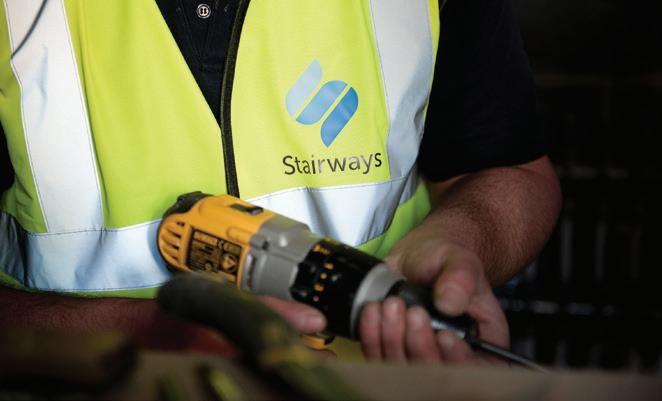
https://www.citb.co.uk/standards-and-delivering-training/training-standards/competence-frameworks
The great timber vs composite fire door debate rages on, still fuelled by the government’s investigation following the Grenfell Tower disaster. There is still frustration at what’s been described as the glacial pace of remediation work eight years on and widespread, ongoing confusion as to how councils, housing associations and other landlords are meant to keep buildings and residents safe. Time for a little clarity…
First, a 60 second recap. Cladding may have dominated the headlines following Grenfell, but fire doors came a close second
with the government launching an investigation into fire door performance. The timber fire doors tested passed with flying colours but composites fared less well, leading to a temporary moratorium on the sale of glass reinforced plastic (GRP) composite fire doors and several Advice Notes from the Ministry of Housing, Communities and Local Government (MHCLG) advising, among other things, that replacement flat entrance doors be tested to ensure they can resist fire and smoke adequately from both sides.
What’s the issue with composite fire doors and testing from both sides?
Starting with the basics, a typical composite front door consists of:
a composite central panel or core, usually with insulating performance and timber stiles and rails to allow installation of hardware and control the trimming process; a steel, PVC or aluminium frame; PVC-type façade and glazing. Along with a letterplate, it will have security features, such as a three-point lock and maybe a prefitted spyhole. Again, for security, the glazing will typically be safety glass. All perfectly serviceable in a private dwelling where there’s no requirement for fire and smoke resistance.
Now, let’s turn our attention to a multi-occupancy building, where you have a series of flat entrance doors on one or both sides of either an open or closed internal walkway or corridor. The corridor is
“Starting with the basics, a typical composite front door consists of: a composite central panel or core, usually with insulating performance and timber stiles and rails to allow installation of hardware and control the trimming process; a steel, PVC or aluminium frame; PVC-type façade and glazing.”
“A single piece of glazing can’t usually fulfil both functions – fire glass can be semi-secure, but security glass isn’t typically fire glass. So, composite fire doors rely on a double-glazed unit instead of a single glass panel, with security glass on the outside to prevent breakin and fire glass on the inside to prevent fire from escaping.”
a means of escape so needs to be protected from risks, which in this case, are the flats leading off it.
This was the situation in Grenfell where the fire started in a kitchen in one of the flats, but the fire requirements are the same whether it’s a multi-occupancy residential building, school, hospital or office block. Whatever the situation, the composite door now needs to fulfil a vitally important additional function – fire and smoke resistance. As such, it will have to satisfy the relevant standards, which in the British market are BS476 Part 22 or EN1634 Part 1 for fire and BS476 Part 31.1 and EN1634 Part 3 for smoke, and offer a minimum of 30 minutes’ protection. So, composite fire doors need to be tested, just like any fire door. Why the government’s insistence on testing them from both sides?
This is where it gets interesting. To reiterate, in addition to its basic security function, the composite door may now have to provide fire resistance as well. And that’s where a potential conflict creeps in. A single piece of glazing can’t usually fulfil both functions – fire glass can be semi-secure, but security glass isn’t typically fire glass. So, composite fire doors rely on a double-glazed unit instead of a single glass panel, with security glass on the outside

to prevent break-in and fire glass on the inside to prevent fire from escaping.
While this might afford a degree of insulation, the fact that you have different types of glass on the inside and outside of the door means that the composite fire door is asymmetrical. As a result, it will respond differently depending on where the fire threat comes from.
Glazing isn’t the only asymmetrical element either. To help protect against weather, composite flat entrance doors tend to have hollow rebated frames with rebated door leaves, which further compromise the symmetry of the doorset. Then there’s the door frame itself. Most are made from hollow PVC with steel reinforcement, which again makes these doorsets asymmetrical.
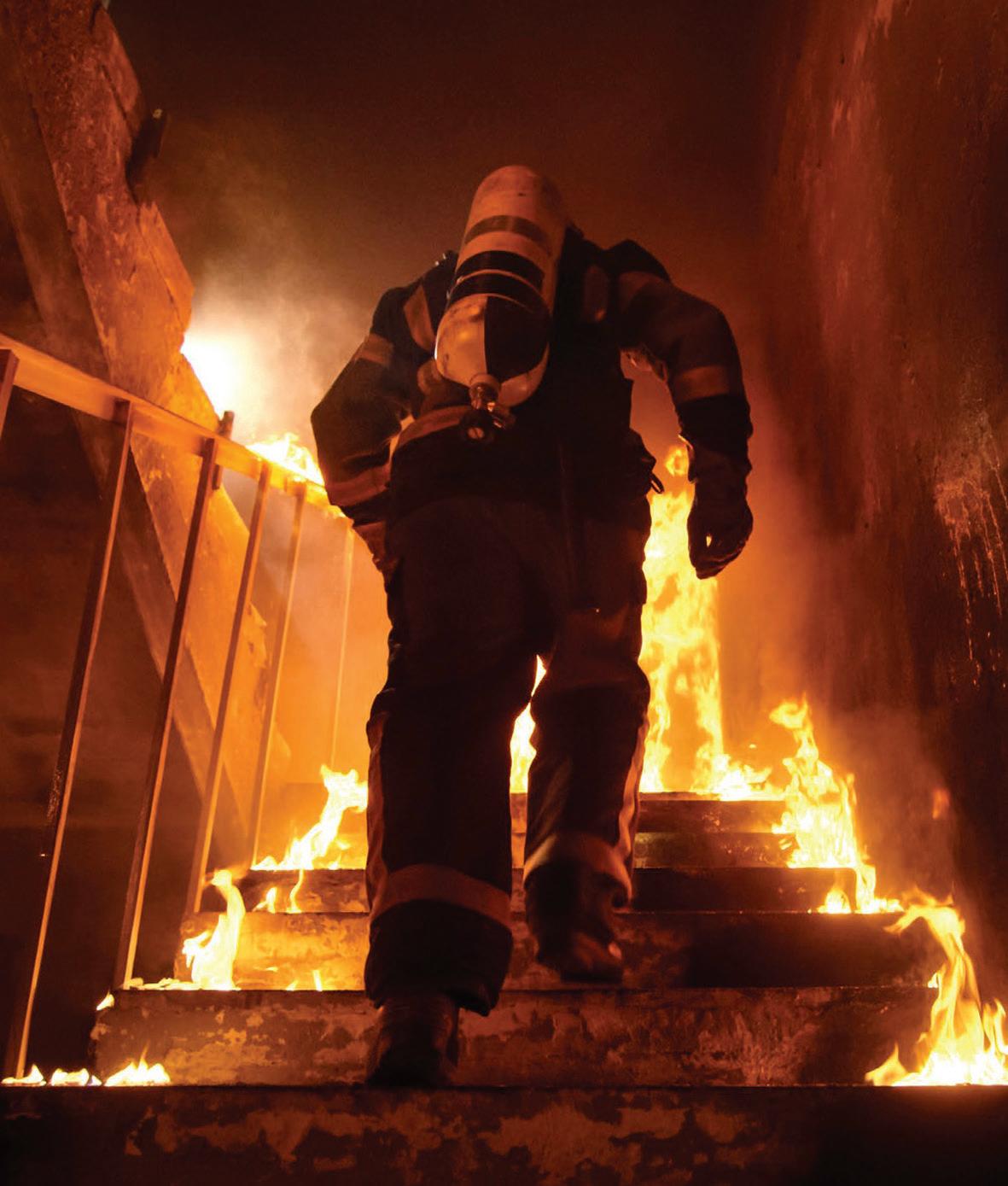
So how does an asymmetrical composite fire door perform in the event of a fire?
Considering the glazing first, if the fire comes from inside the flat, on the side with the fire glass, this should offer a degree of fire resistance. But what if the fire is outside, in the corridor? The security glass on the outside of the door isn’t designed for that, so a thermal shock situation can develop. The security glass becomes hotter than the frame surrounding it and the whole thing disintegrates, undermining the integrity of the fire glass on the unexposed side as it does so.
That’s one type of catastrophic failure. The other thing that can happen is that the fixing systems fail due to the high level of heating. Similarly, the asymmetrical nature of the door frame, with its steel reinforcing and unbalanced frame and leaf interface, makes its fire performance difficult to predict testing only one face.
“The government’s investigation into fire door performance found that three-quarters of the GRP composite fire doors tested failed to meet the 30-minute requirement, with two of them lasting less than 10 minutes.”
It might sound like a minor detail – there’s only one letter difference between asymmetrical and symmetrical fire doorsets after all – but it’s absolutely critical when you consider they are one of the most fundamental elements of building safety. The government’s investigation into fire door performance found that threequarters of the GRP composite fire doors tested failed to meet the 30-minute requirement, with two of them lasting less than 10 minutes.
That’s why Building Regulations insist on testing asymmetric door constructions from both sides.
It’s simple really –timber fire doors, unlike composite fire doors, typically have a symmetrical construction.
If you’re adding glazing to a timber fire door, for example, you put a single piece of fire glass right in the centre of the thickness of the door. The glass is therefore fire proof from both sides, so it wouldn’t matter whether a fire came from inside a flat or outside, in the corridor. It’s not rocket science but it does make all the difference, as the results from the government’s investigation show.
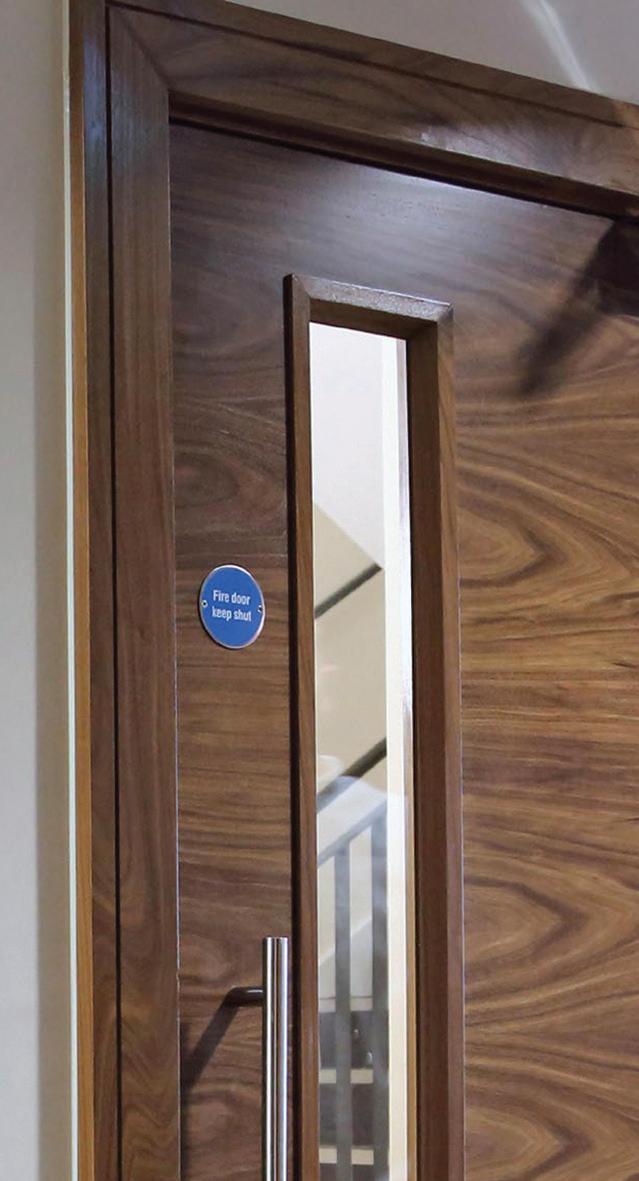
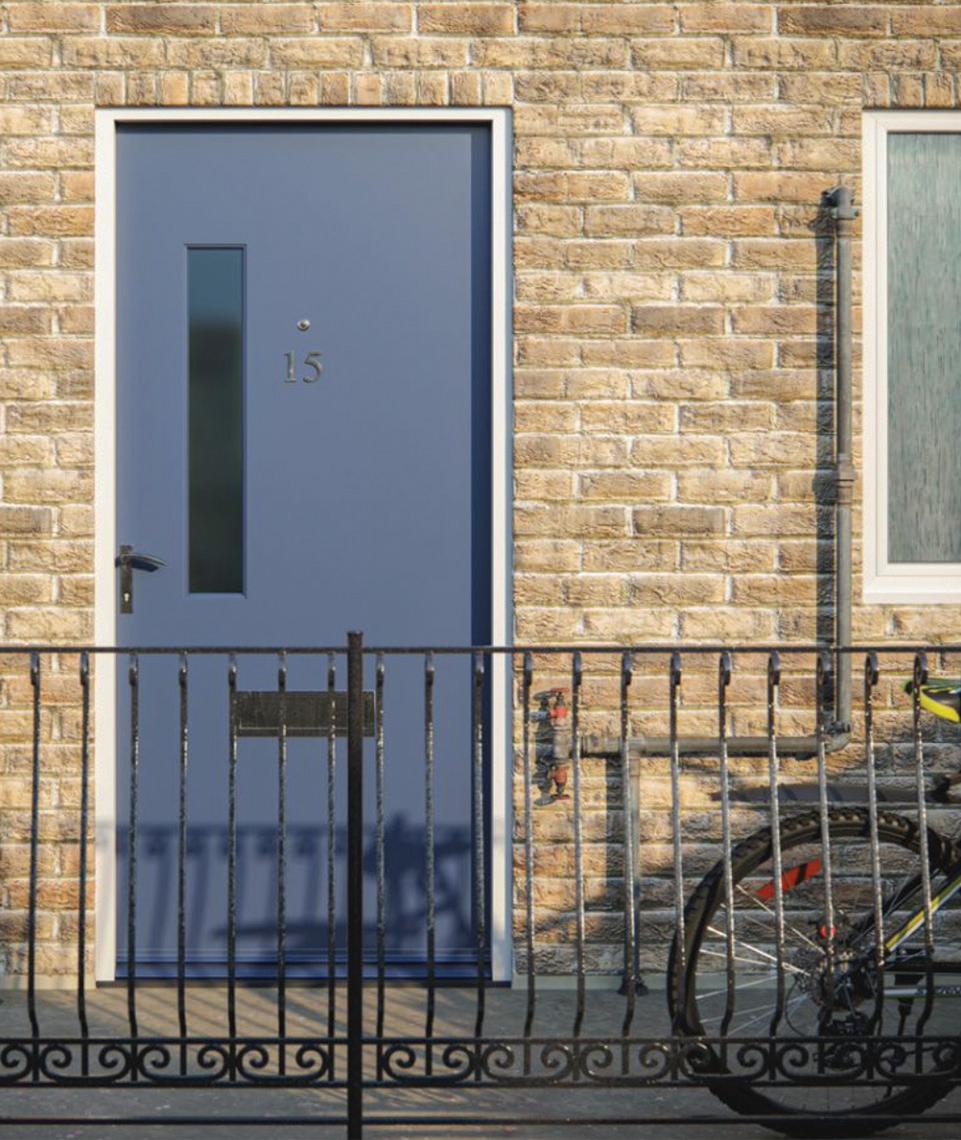
How did timber fire doors perform in the government’s tests?
Subjected to the same furnace tests as the composite fire doors, the entire test sample of 25 timber fire doors4 returned passes, exceeding the 30-minute requirement on both sides of the door.
Tellingly, Building Regulations don’t actually specify that timber fire doors must be tested from both sides, as they do for composite fire doors. Recognising the inherent benefits of a symmetrical construction, BS476 Part 22 infers and EN1634 Part 1 states that if a symmetrical inward opening door achieves the required level of performance, then it can be deemed that the outward opening side will do at least the same if not better. The government’s investigation, our own tests and those conducted by members of the Architectural and Specialist Door Manufacturers’ Association (ASDMA), of which Halspan is a member, all concur.
What can councils and others take from this?
The introduction of the Building Safety Act has sharpened the focus on accountability and performance. It is no longer enough for a fire door to meet a standard in a single test. Consistency must be proven, be traceable through the whole supply chain and provide assurance in real life situations. There are many composite fire doors out there that will satisfy the inward and outward testing requirement and be fit for purpose. However, there is a strong surge in composite fire door manufacturers developing and investing in their fire door performance, meeting the demands of the Building Safety Act, head on.
Some will argue that if councils, housing associations and other landlords want a fire door they can rely on to do what it’s meant to, then a properly manufactured, installed and maintained timber fire door is the safe choice.
“The government’s investigation, our own tests and those conducted by members of the Architectural and Specialist Door Manufacturers’ Association (ASDMA), of which Halspan is a member, all concur.”
This debate will remain relevant for some time and inline with any changes to building regulations and fire door testing, but the picture is more nuanced, and composite doors that comply with the newer, stricter testing (both-sided fire resistance, smoke control, proper certification, correct installation) can and do meet safety standards. The major risks come from non-certified or older doors, or doors that aren’t tested fully, or improperly fitted/maintained.
Timber fire doors (from what the testing has shown) remain more consistent in terms of performance for the basic fire resistance test, especially for flat entrance doors, but composite manufacturers have improved their standards and brought many products up to a reliable benchmark.
If you wish to respond to any of the information in this article please email: christina@firedoor-journal.co.uk
For more information on Halspan timber fire doors, please visit: www.halspan.com.
Tel: +44 (0)3300 563836
Email: info@halspan.com
This edition of the journal carries articles and product spotlights on both timber and composite fire doors, with views expressed and information provided, from various manufacturers.

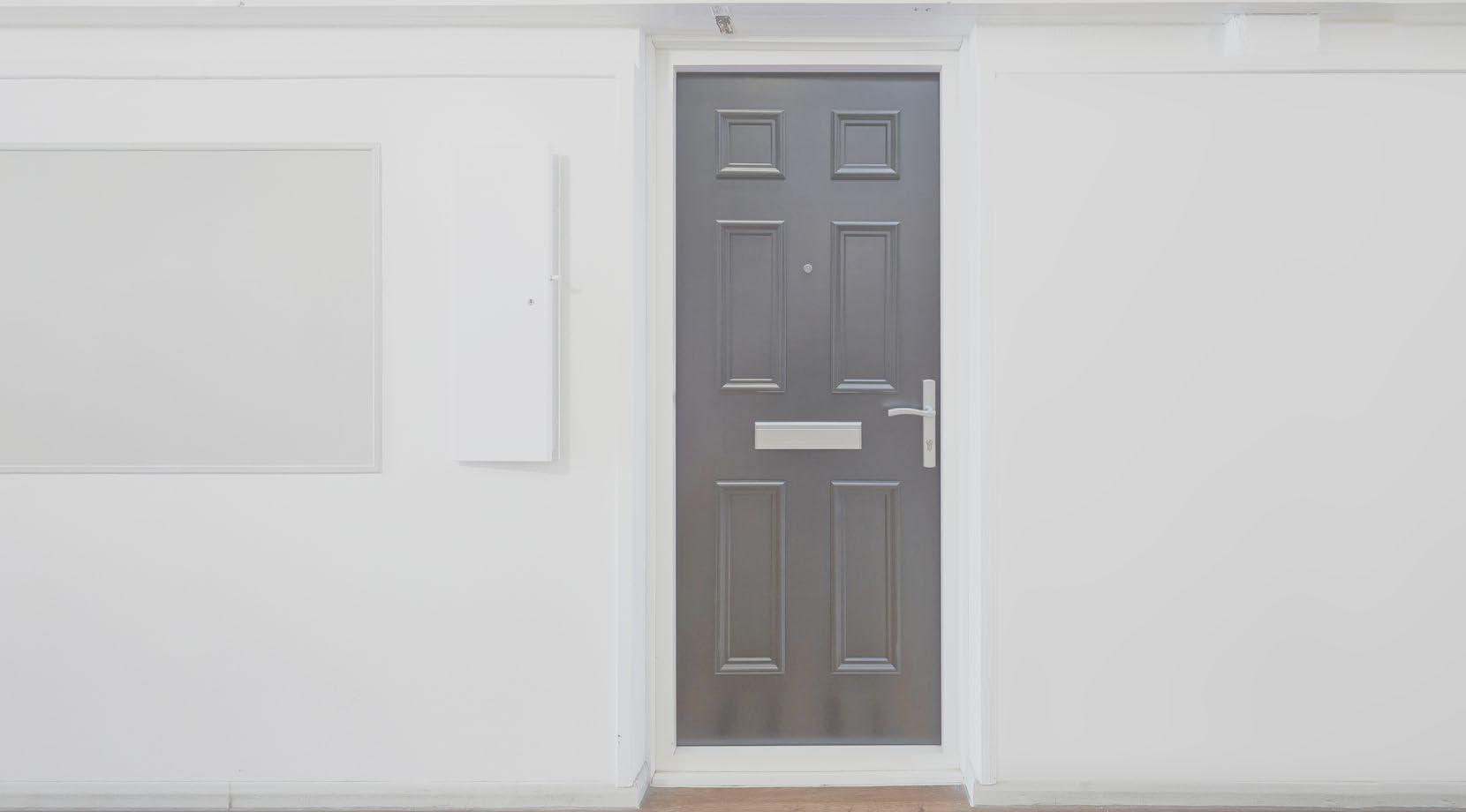
safety is non-negotiable – but it shouldn’t come at the expense of the environment. latest award-winning innovation in fire door technology from Heron Fire Doors, doesn’t have to. Thermasafe 30™ combines our industry-leading fire door specification lowest U-value of any timber door on the market.
Supreme energy efficiency
Industry-leading U-value of 1.2W/m2K, reducing heat loss by up to 30% compared to conventional timber fire doors
Uncompromising security
PAS24:2022 security rating under attack, impact & mechanical loading
Fire safety is non-negotiable – but it shouldn’t come at the expense With the
Unmatched fire protection
Meets E30Sa test standards, consistently exceeding requirement by 50%
our industry-leading with the lowest U-value of any timber door on the market.
Advanced sustainability
Ireland-based company Heron Fire Doors - part of Heron Manufacture Ltd - is poised to shake up the UK market for fire doors with the launch of an innovative new doorset engineered for next-gen energy efficiency.
Installer-friendly
Manual handling friendly, installers report ease of install
Responsibly sourced solid engineered timber core –renewable, biodegradable & energy efficient
Developed over two years, Thermasafe 30™ delivers outstanding fire and smoke resistance. It also offers advanced thermal, acoustic, and security performance, with an industry-leading U-value of just 1.2W/m²K. Weather resistance comes as standard - all in a sustainably sourced, cost-effective package.

Winning
British Woodworking Federation Award for Innovation in 2024
Industry-leading U-value of 1.2W/m2K, reducing heat loss by up to 30% compared to conventional timber fire doors
Unlike foam or composite-based alternatives, Thermasafe 30™ is made from recyclable, sustainably sourced timber, offering specifiers a future-proof solution with reduced environmental impact and a manual handling-friendly design. It’s already an awardwinner, having scooped the BWF’s Award for Innovation in 2024!
Representing a new benchmark for fire doors, Thermasafe 30™ is built around an innovative engineered timber core that delivers a U-value of 1.2W/ m²K, making it up to 30% more thermally efficient than conventional timber fire doors.
Meets E30Sa test standards, consistently exceeding requirement by 50%
69 Drum Road, Cookstown, Northern Ireland BT80 8QS | Tel:(028) 8676 6403 Email: technical@heronfiredoors.com | Web: heronfiredoors.com
Enhanced weather seals, thermally bridged thresholds, and draught-resistant ironmongery options contribute to significantly reduced heat loss and improved energy efficiency, supporting greener construction and lower running costs.
Suitable as an internal or external entrance door for both residential and commercial settings, Thermasafe 30™ is rigorously tested and triple certified for use in UK and European markets, meeting or exceeding international standards including:
• Thermal Efficiency (EN ISO 10077-2 & EN ISO 125671): U-value of 1.2W/m2K
Responsibly sourced solid engineered timber core –renewable, biodegradable & energy efficient
The product’s advanced green credentials combine with elite fire and smoke resistance that sees Thermasafe 30™ consistently exceed FD30s and E30Sa standards, achieving 45 minutes of fire and smokestopping performance.
impact
• Fire Resistance (EN1634-1) – Meets E30Sa test standards
• Smoke Control (EN1634-3) – Preventing the spread of smoke in critical escape routes
• Security (PAS24:2022) – Robust protection against impact, attack, and mechanical force
• Weather Resistance (BS6375-1) – Tested to withstand exposure category 800U and wind pressure up to 1.5kN/m²
• Durability (EN1192) – Independently tested to 200,000 operating cycles
• Acoustic Performance (EN ISO 10140-1) – Achieving up to 30dB sound reduction
69 Drum Road, Cookstown, Northern Email: technical@heronfiredoors.com
Thermasafe is also accredited under the Secured by Design scheme, having met the rigorous standards of the UK Police Preferred Specification.
Durability (EN1192): Tested to 200,000 cycles
Acoustic Performance (EN ISO 10140-1): 30dB sound reduction
Letterplate –
12’’ Fire Rated Letterplate

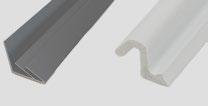
Perimeter Weather Seals, Acoustic Seals, Smoke Seals
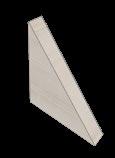
Door –
Tri-laminated Engineered Solid Core

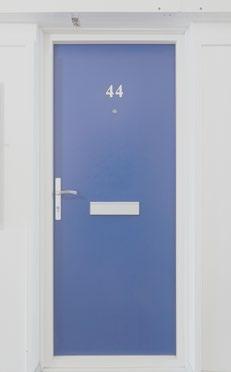

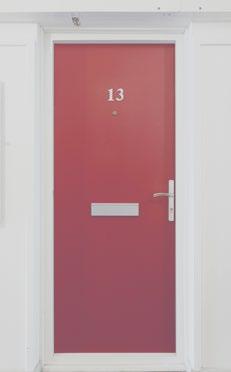
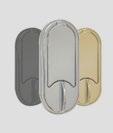
Ancillary items - Door Knocker / Door Viewers / Numerals / Security Chain / Signage


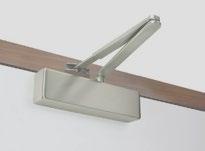
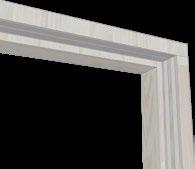

/


It’s compatible with a wide range of fire and security hardware, with components sourced from accredited

Fire safety is non-negotiable – but it shouldn’t come at the With the latest award-winning innovation in fire door technology it doesn’t have to. Thermasafe 30™ combines our industry-leading with the lowest U-value of any timber door on the market.
flexibility and outstanding environmental credentials, Thermasafe 30™ offers an ideal solution for contractors, developers, and specifiers seeking dependable, future-ready timber fire doors.
Email: technical@heronfiredoors.com www.heronfiredoors.com www.heronfiredoors.com/thermasafe
Supreme energy efficiency
Fire safety is non-negotiable – but it shouldn’t come at the expense of the environment. With the latest award-winning innovation in fire door technology from Heron Fire Doors, combines our industry-leading fire door specification with the lowest U-value of any timber door on the market. Uncompromising security

Industry-leading U-value of 1.2W/m2K, reducing heat loss by up to 30% compared to conventional timber fire doors
Unmatched fire protection
Meets E30Sa test standards, consistently exceeding requirement by 50%
Advanced sustainability
DoorCo’s Technical Sales Manager, Ian Glenister, gives us a state of the nation overview of the fire door market following the launch of the leading composite door suppliers new FD30 fire door solution, FiRECORE.
It’s a simple fact that people have the right to feel safe in their homes. We, as part of the supply chain, must operate with integrity to ensure that the products we supply are fit for purpose, manufactured correctly in line with regulations, and no corners
are cut. It shouldn’t take a tragedy like Grenfell in 2017 to bring this to the fore, but when it comes to fire doors, unfortunately this is the case. The outcome of the Grenfell Inquiry sited several critical issues in the performance of fire doors in the building, including the failure to meet the required 30-minute fire resistance standard. This poor performance significantly compromised compartmentation and allowed smoke and flames to spread more rapidly. It was also found that some manufacturers had misrepresented test results, and the regulatory framework did not ensure adequate oversight or enforcement. These findings have already influenced policy changes, including

updates to the Building Safety Act 2022 and The Regulatory Reform (Fire Safety) Order 2005 (FSO), which places legal responsibility on the Responsible Person (e.g. building owner or manager) to ensure fire safety measures, including fire doors, are properly installed and maintained. The key for us as a sector is “installed”, but that’s not solely the responsibility of the installer – it travels all the way up the supply chain.
This moral responsibility was felt strongly by DoorCo when it came


to the designing and testing of FiRECORE, our new FD30S fire door solution. As with everything we do, integrity and accountability are at our core, and we strongly believe that we’re all “responsible people” when it comes to fire doors.
In the UK, fire doors must meet the BS 476: Part 22 (British Standard for fire resistance) or BS EN 1634-1 (European Standard for fire resistance testing). The common ratings are FD30: 30 minutes fire resistance, and FD60: 60 minutes fire resistance. Doors must be Third-party certified, clearly labelled with fire rating and manufacturer info, and installed as a complete doorset (door, frame, seals, hardware).
With FiRECORE, we were determined to deliver a cradleto-grave, fully certified fire door solution that not only exceeds regulatory requirements but ensures complete peace of mind for the end user, and every Responsible Person in between.
As a composite door manufacturer, door slabs are our thing. We spent a lot of time on the R&D of the FiRECORE as the first step. We knew what we wanted to achieve
“They strongly believe in upholding the golden thread of “doing the right thing” throughout the lifecycle of the door.”
– a comprehensive range of door designs that would enhance the fire door market and fill the gaps of what was currently available, including top and side lite products and glazing cassettes.
The next step was to look to partner with a scheme to really make the best of our component. Winkhaus excel in this area. Their proven FD30 / FD60 FireFrame® outerframe, and the Winkhaus AV2 auto-locking multi-point door lock with optional access control, which has been tested to resist security and fire including TS008 compliant letterplates, numerals, eye viewers, door knockers and security chains, are fantastic products, and their Winkhaus Fire Door Scheme in unparalleled.
Working with Winkhaus meant there has been no stone left unturned with the development of our new approved fire door. They were instrumental in the efficiency and effectiveness of the project, supporting us to realise
For more information on the product, visit: www.trade.door-co.com/firecore
For more information on the Winkhaus UK FireFrame Doorset Scheme, visit: www.firetraining.winkhaus.com/en/#Fire-door-solutions
our ambitious plans, and achieve performance results that exceeded regulatory requirements.
Winkhaus UK FireFrame Doorset Scheme
Following rigorous testing, FiRECORE is now part of the Winkhaus UK FireFrame doorset Scheme.
FiRECORE is accredited to EN 1634-1 from both sides, achieving 46 minutes of fire resistance, fully Q Mark 170 Scheme 3rd Party Accredited, with regular independent audits to ensure consistent quality and compliant with MHCLG Annex
A recommendations, providing essential smoke and security resistance. It is also PAS 2024 security tested, incorporating a range of TS008-compliant hardware.
The scheme has been designed to not only ensure that the products on offer are fit for purpose but also that the customer – be that housing provider, new build developer, homeowner, resident, or installer – are fully supported in understanding their responsibilities when it comes to fire doors.
They strongly believe in upholding the golden thread of “doing the right thing” throughout the lifecycle of the door. Their Third Party certification and verification ensures doorsets are continually manufactured, installed and maintained to the same levels as identified in the original testing and declaration of performance.
For DoorCo, it was important to be part of a scheme and group of likeminded companies that wanted to work together to produce the absolute best, and one that can provide a benchmark for safety. A benchmark that we intend to build on with improved performance in the future.
Unity Doors, the UK’s foremost manufacturer of composite and timber fire doors, continues to drive innovation and certification within the sector.
Responding directly to specifier demand, the company has expanded its market-leading portfolio with the launch of composite fire doors with sidelights.
This new development ensures that Unity Doors not only delivers the highest standards of fire safety and compliance, but also offers enhanced design flexibility for modern social housing projects. Fully third-party tested, UKCA marked, and available in a wide choice of styles and colours, Unity Doors’ latest range seamlessly combines certified safety, performance and aesthetics, making it the trusted partner of choice for fire door installations nationwide.
Unity Doors is committed to bringing its customers more and that doesn’t simply apply to contemporary style but to certification too. The company continually invests in testing and in recent months as undertaken yet more and is soon to share this news with the market. This comes swiftly following the recent release of new sidelight options. A direct response to growing demand from clients seeking increased natural light without compromising fire safety. The new range combines contemporary design with uncompromising compliance, offering:

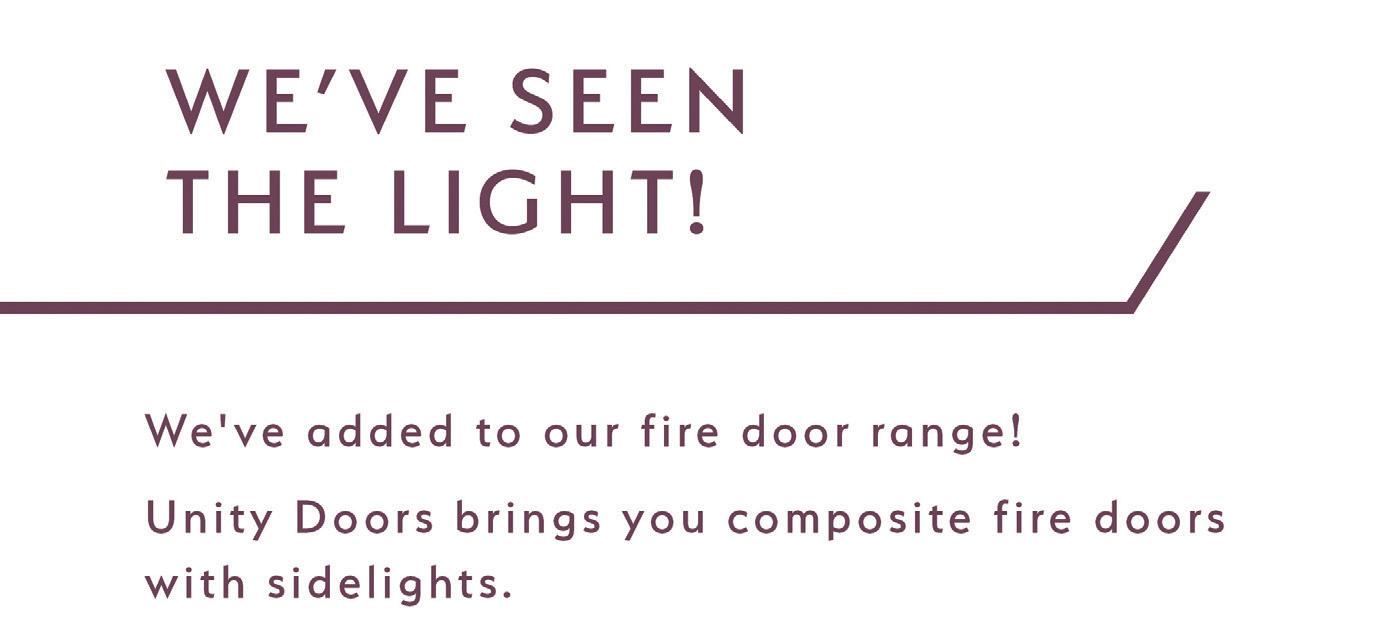

• Third-party tested and UKCA marked FD30S solid timber core composite doorsets
• FD30 flat entrance doorsets
• Triple certification: fire, smoke, and security
• Primary test evidence
• Glazed sidelights, toplights, or flag windows – all fire-rated glass
• Bi-directional EN1634-1 fire resistance & EN1634-3 smoke control
• Complete doorsets delivered nationwide, supply from just 2 weeks, install service available
In response to its clients demand for 'more luminosity,' Unity Doors has introduced new versatile options for its premium fire door collection. Customers can choose from the following PVC framed glazed toplight/sidelight/flag window combinations:
• Toplight
• Sidelight
• Flag window
• Toplight and sidelight
• Toplight and flag window
Unity Door’s new collection of solid core composite fire doors with sidelights blend reassuring fire safe features with an appealing modern aesthetic:
• THIRD PARTY TESTED
• UKCA MARKED FD30S SOLID TIMBER CORE COMPOSITE DOORSETS
• FD30 FLAT ENTRANCE DOORSETS
• TRIPLE CERTIFIED FOR FIRE, SMOKE & SECURITY
• PRIMARY TEST EVIDENCE
• GLAZED SIDELIGHTS, TOP LIGHTS OR FLAG WINDOWSFIRE-RATED GLASS
• ALWAYS DELIVERED AS COMPLETE DOORSET
• NATIONWIDE DELIVERY - FROM 2 WEEKS SUPPLY & FIT AVAILABLE
• BI DIRECTIONAL EN1634-1 FIRE RESISTANCE & EN1634-3 SMOKE CONTROL
Liam Kelleher, Commercial Director at Unity Doors, commented: “We’re delighted to bring this exciting new product to market. Our customers regularly asked whether we could provide composite fire doorsets with sidelights, now we can say with confidence that we can deliver, with full certification and the exceptional quality they expect. This development underlines our focus on innovation, compliance, and customer service, ensuring we continue to set the benchmark in the composite door sector.”
Tel: 01531 822585 Email: enquiries@unitydoors.com www.unitydoors.com

The range of Draig 30 composite fire doors from Hörmann Truedor provide uncompromising protection against fire and smoke for both external and internal installations.
Designed to meet the highest standards and certification, the range offers a robust solution that is built to last without compromising on style and performance.
Proven to keep fire at bay for more than 30 minutes, the Draig range of doors have been bi-directionally tested in accordance with EN1634-1 for fire and EN1643-3 for smoke control. Constructed from premium materials the doors are built for durability and are tested to PAS 24:2022 for impact resistance. They offer outstanding performance with exceptional weather resistance, sound insulation, and thermal efficiency. Security is a key feature, with advanced multi-point locking systems and ‘Secured by Design’ accreditation provided as standard. Additionally, each
door unit holds third-party accreditation under the BM Trada Q-Mark scheme.
Draig fire doors are available in 4 external and 2 internal styles, with the external doors being offered in both solid and glazed options, with or without a fixed fanlight. A comprehensive range of hardware and accessories is also offered, alongside the choice of 6 popular colours.
David O’Mara, Marketing Manager at Hörmann Truedor comments. ‘Our Draig fire door has been developed to provide installers with a focused range of fire doors that will fulfil the majority of installations where protection against fire and smoke is required. The range sits alongside the other specialist products offered by Hörmann Truedor – Clima63 a highperformance thermal door and Platinum44, a high quality, cost-effective steel door, all developed to provide installers with added sales opportunities.”
All Hörmann Truedor composite doors are CO2 neutral as standard and are manufactured in the UK at IG Doors’ state of the art, sustainable manufacturing facility.
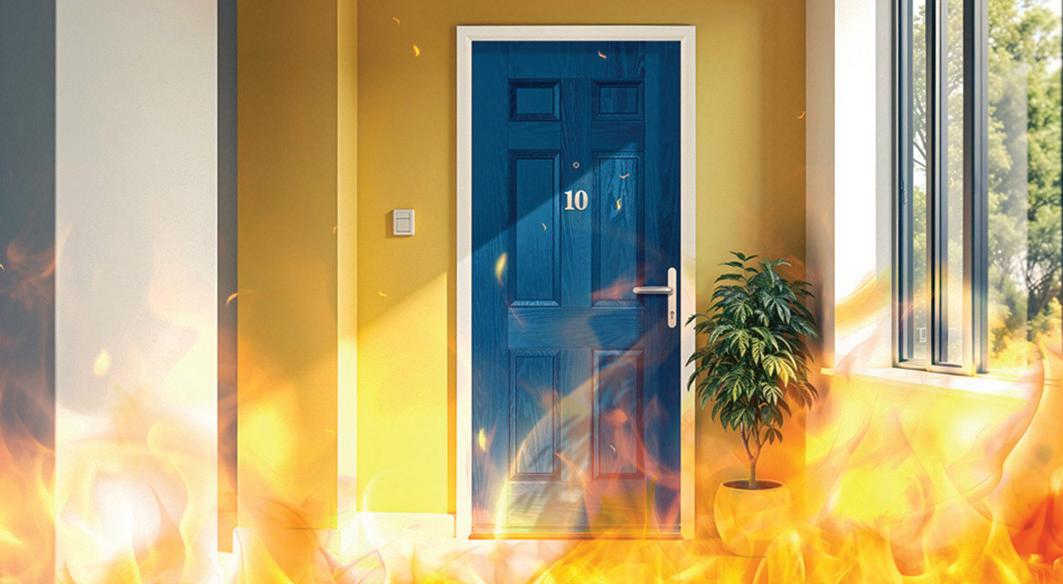
To find out more about Hörmann Truedor composite doors visit https://hormanntruedor.co.uk/door-collections/, or call 01530 516868
As we pass eight years since the Grenfell Tower fire tragedy, Hurst is reiterating its commitment to regulatory compliance and high performance across its composite FD30s fire door offering.
Triple certified for fire, smoke and security, Hurst’s fds fire door range achieves an average fire resistance time of 44 minutes, 14 minutes over the FD30 standard requirement.
With Building Safety Act compliance central to its specification, the FD30s is UKCA-accredited and tested to BS EN1634-1 and PAS24:2022.
Furthermore, all fanlight and sidelight options for our FD30s fire doors carry UKCA marking –offering specifiers and contractors compliant external as well as internal fire door solutions, with added reassurance.
“Accountability is essential at every stage of the supply chain,” said Mark Atkinson, Sales Director, Hurst.
“Through third-party certification and test evidence, we’re supporting our partners to confidently demonstrate compliance and fulfil their obligations under current safety legislation,” he added.
“Critically, this also helps to uphold the ‘golden thread’ of information relating to the safe design, construction, occupation and refurbishment of buildings, an integral part of the Building Safety Act and the Building Safety Regulator in the UK.”
With significant opportunities for compliant fire doors in both newbuild, social refurbishment and maintenance markets, specialists are also on hand to help Hurst installers navigate every stage of their fire door project.
Through Hurst’s dedicated customer portal, Hurst Live, customers can quote, place and track orders for compliant fire doors, with access to a comprehensive order history for easy management of both past and current projects.
From smaller projects to largescale schemes, Hurst Live is designed to streamline and simplify the ordering process, allowing customers to specify their exact fire door requirements efficiently.
Available in a variety of colours, Hurst’s fire doors also meet BS6375 for weather performance, provide a U-value as low as 1.6 W/m2K and reduce noise by 33db. Each door also comes with comprehensive
installation instructions, enabling installers to meet the high standards required for compliance and performance with confidence.
“Fire doors play a vital role in the safety of buildings and their occupants, but we don’t want our customers to be daunted by the weight of this responsibility,” Mark added.
“Our FD30s fire door is one of the most extensively tested in the UK, undergoing rigorous bidirectional testing to meet and exceed the EN1634 standard, while Q-Mark certification from BM Trada reinforces our commitment to high standards and affirms our position as a trusted supplier.
“As the industry continues to navigate tightening regulations and greater safety expectations, the FD30s offers not only compliance, but peace of mind for specifiers, developers, installers and building owners alike,” Mark concludes.
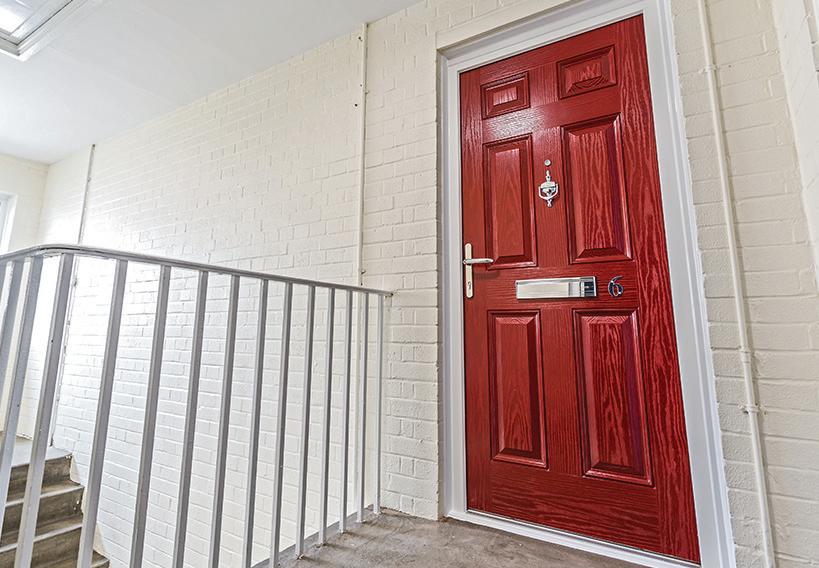
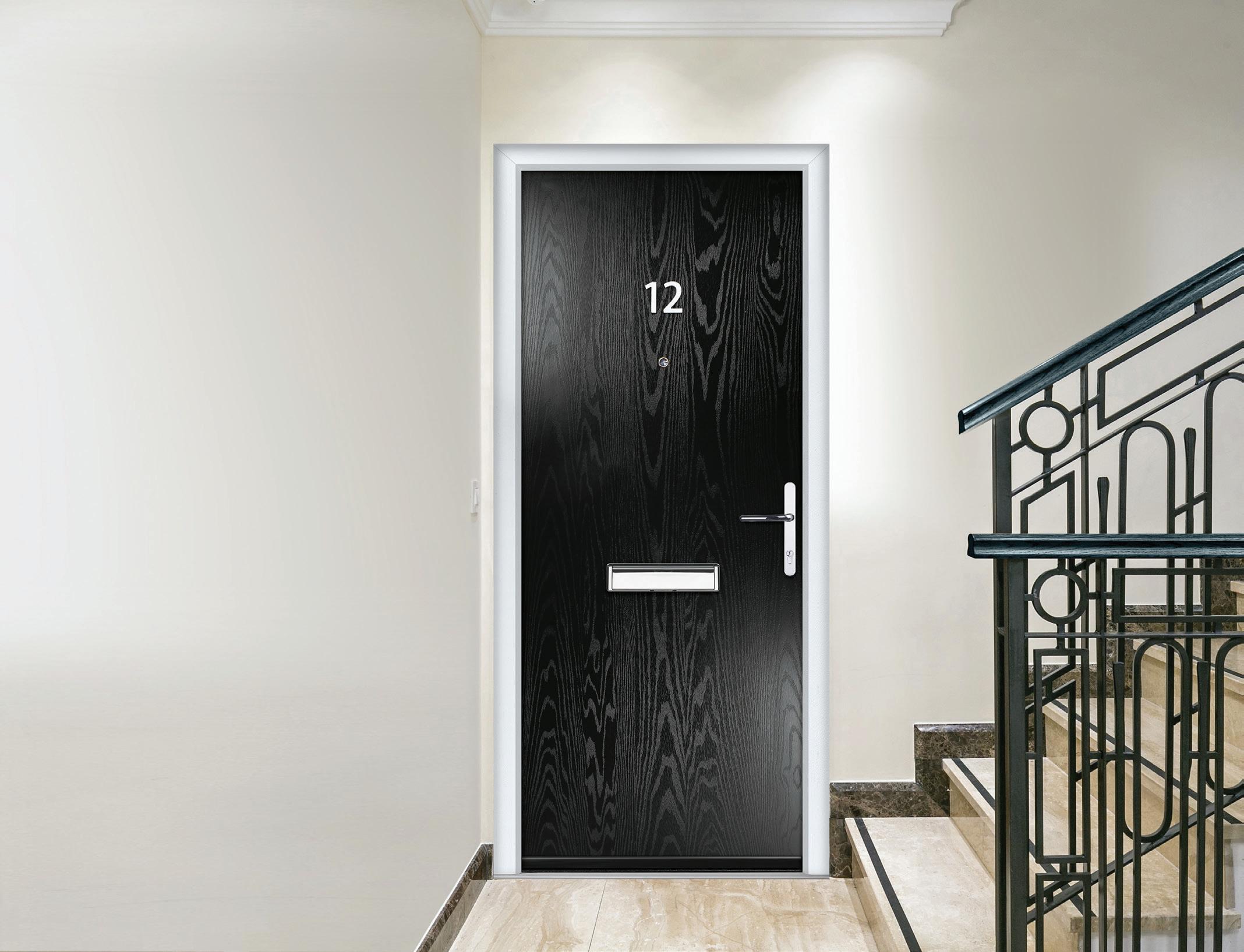

Fire doors are a cornerstone of building safety, protecting escape routes, limiting the spread of fire and smoke and buying critical time for evacuation. Yet the performance of composite fire doors has too often been inconsistent, with variations in materials, manufacturing methods and limited test data creating uncertainty for specifiers and building owners.
Suzanne Nicholl, Head of Sales and Marketing at ODL Europe discusses how the Guardsman Fire Door Slab
is redefining expectations and setting a new benchmark for GRP fire door performance.
The introduction of the Building Safety Act has sharpened the focus on accountability and performance. It is no longer enough for a fire door simply to meet a standard in a single test. It must be proven to perform consistently, be traceable through the supply chain and provide assurance in real-world conditions.
The Guardsman FD30 Fire Door was developed to meet these demands head on. The result of a multi-year cycle of continued investment by ODL Europe in partnership with Capstone Engineering and leading fire door fabricators, the Guardsman was conceived as a next-generation composite fire door with the ability to deliver reliable performance time after time. From the outset, the design
brief centred on removing the uncertainty from composite door performance, achieving compliance across both internal and external door applications and creating a sustainable, low-maintenance solution capable of withstanding the demands of high-traffic environments.
Its performance has been verified through an extensive programme of independent testing to BS EN 1634-1, the more demanding fire resistance and smoke control standard referenced in Part B of the Building Regulations. Testing was carried out under UKAS Accredited Fixed Scope conditions, ensuring absolute rigour in the process. While rated as an FD30 door, the Guardsman achieved an average burn time of 52 minutes, with certain configurations lasting beyond 70 minutes. These results were achieved across a wide variety of scenarios, including glazed and unglazed doorsets, internal and external balcony installations and multiple construction and glazing options. As a result, the Guardsman is one of a very few composite fire doors in the UK to hold UKASaccredited certification for both internal and external use.
The testing programme covered all three parts of the BS EN 1634 standard, encompassing fire resistance for fire doors, fire resistance and smoke control for hardware, and fire resistance for smoke control doors. This breadth of evaluation means the Guardsman offers the repeatable, verifiable performance that supports the responsibilities outlined in the Building Safety Act and gives building owners, specifiers and contractors complete confidence in the product’s capability.
A key factor in achieving such consistent performance lies in its construction. Where most composite FD30 doors use a phenolic foam core, the Guardsman
For more information

uses Agrifiber which is a resinbonded agricultural fibreboard with uniform density, exceptional fire resistance and excellent structural stability. As a renewable material, Agrifiber also enhances the environmental credentials of a project without any compromise on safety.
All timber used in the Guardsman is FSC® certified, manufacturing is undertaken under ISO 9001 quality and ISO 14001 environmental
https://europe.odl.com/the-guardsman-fire-door/
management systems and the product carries BM Trada Q-Mark certification for full traceability.
Design flexibility was another important consideration. The Guardsman can be manufactured to suit any structural door aperture and is available in a wide range of styles derived from just two base designs, ensuring consistent performance while simplifying production and stock management for fabricators. The same slab can be specified for both internal and external applications, making it a practical choice for a wide variety of commercial projects.
Durability is built into every Guardsman door. Hardwood stiles and rails combined with a 2mm GRP skin deliver the strength to withstand heavy use in environments such as high-rise residential buildings, care homes, hospitals, schools and public sector facilities.
It meets PAS 24 security standards and BS 6375 weather performance requirements. Each door is backed by a 25-year structural guarantee and a 10-year warranty on precoloured GRP slabs, giving longterm assurance to building owners and reducing lifecycle costs through lower maintenance and replacement requirements.
The Guardsman FD30 represents a shift in what the composite fire door sector can offer: a proven, UKAS-accredited solution for both internal and external use that delivers consistent fire resistance well beyond its rating, combines sustainable materials with superior construction and is designed for repeatable results across multiple manufacturing partners.
In an era where building safety legislation demands traceable, verifiable performance, the Guardsman provides certainty, reliability and the confidence that comes from knowing a fire door will do its job when it matters most.
Health and wellbeing
is naturally high on the agenda in healthcare facilities, but what more can be done to ensure fire door safety is being met with competency and not complacency? Alex Airnes of Allegion UK discusses.
Healthcare environments are synonymous with caution, wellness and safety. Though, where National Health Service professionals work determinedly to meet the needs of their patients, equally as vital are the fire door safety procedures practiced throughout NHS premises.
Fire safety management plays a crucial role in all healthcare settings, where protecting staff, visitors and potentially vulnerable patients is a continuous effort. Even with a host of unique operational challenges, hospitals, for example, are often considered to be one of the safest public buildings. In fact, a survey conducted by The British Woodworking Federation discovered that 52% of respondents believed
hospitals to provide the highest level of fire safety in a building.
Despite these perceptions, NHS data has previously reported a concerning rise in fire incidents across sites around the country. The inherently busy nature of healthcare settings and aroundthe-clock use of facilities containing vulnerable patients, medical equipment and even flammable materials, presents a complex set of fire safety issues that must be addressed. With that in mind, is there perhaps more work to be done to ensure fire door safety is approached professionally to further mitigate risk?
In the three months ending January 2025, an average of 46,000 people visited major hospital A&E departments each day in England, with a further 27,300 visitors attending minor A&E facilities every day. Fire doors play a vital role in protecting each of those individuals, but when paired with the fast-flowing traffic often found in healthcare facilities, this sustained level of footfall can create relentless environments that are unforgiving on fire doors and their hardware.
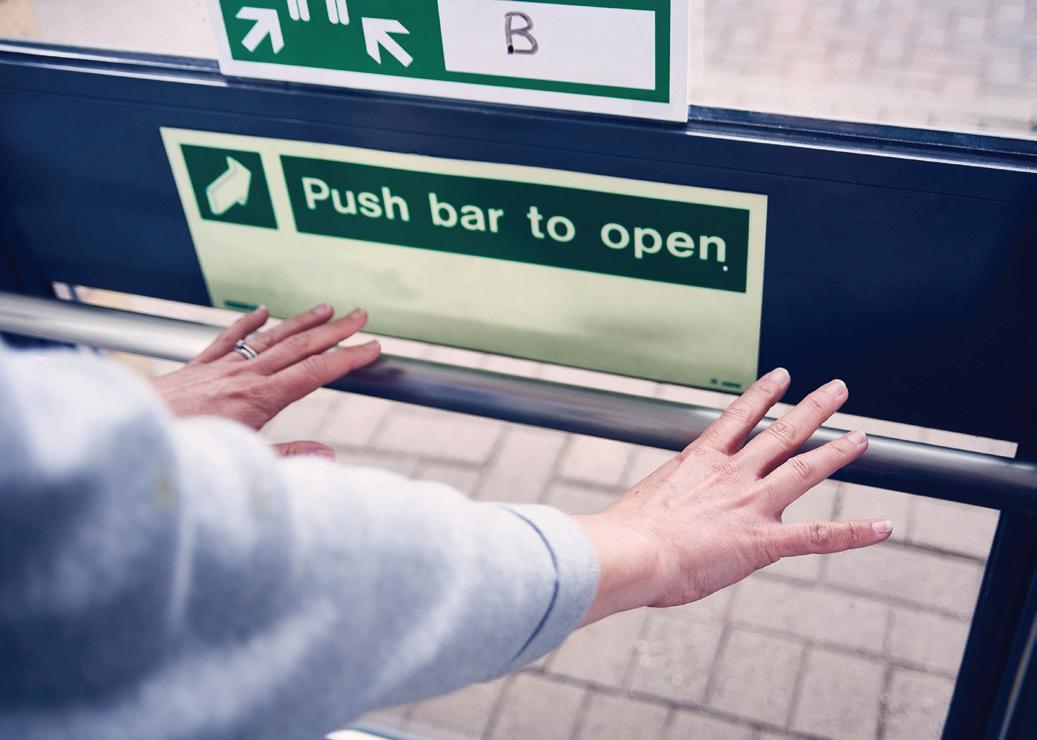

As a critical element of passive fire protection, fire doors are designed to compartmentalise fire and smoke for a specified period of time. Where fire could spread quickly across the interconnected sections of healthcare estates, fire doors will form protective barriers for a minimum of 30 minutes (FD30) or 60 minutes (FD60), allowing occupants to escape and preventing potentially life threatening smoke inhalation in the process. Fire doors can only operate effectively when working in tandem with their hardware components, such as hinges, seals and fire door closers. Yet, all too often in healthcare settings, fire doors and their hardware become damaged and fall victim to improper maintenance and use, with some self-closing doors even propped open to improve the flow of traffic and ease of access for beds, wheelchairs and medical trolleys. In turn, this leaves closers disengaged and renders doorsets useless in the event of a fire.


Under the Regulatory Reform (Fire Safety) Order 2005, healthcare management teams are given a direct responsibility to ensure employees and patients are safe within their premises. With this, NHS trusts must nominate a ‘responsible person’, which is often an individual who possesses a legal responsibility to demonstrate effective fire safety procedures, undertake risk assessments and meet fire safety compliance. In demanding healthcare environments, regular fire door inspections are key, and as part of their duties, a designated responsible person must have a firm understanding of fire door checks and maintenance, whilst also raising staff awareness on the importance of fire door safety. For this, ongoing education is key.
In order to retain the integrity of a fire door and its components, healthcare estates must consider how accurate specification, professional installation and ongoing maintenance can help to reduce common hazards and the possibility of danger before it surfaces.
Routine fire door checks can save lives and should form the agenda of anyone responsible for fire safety management. They consist of reviewing the specification,
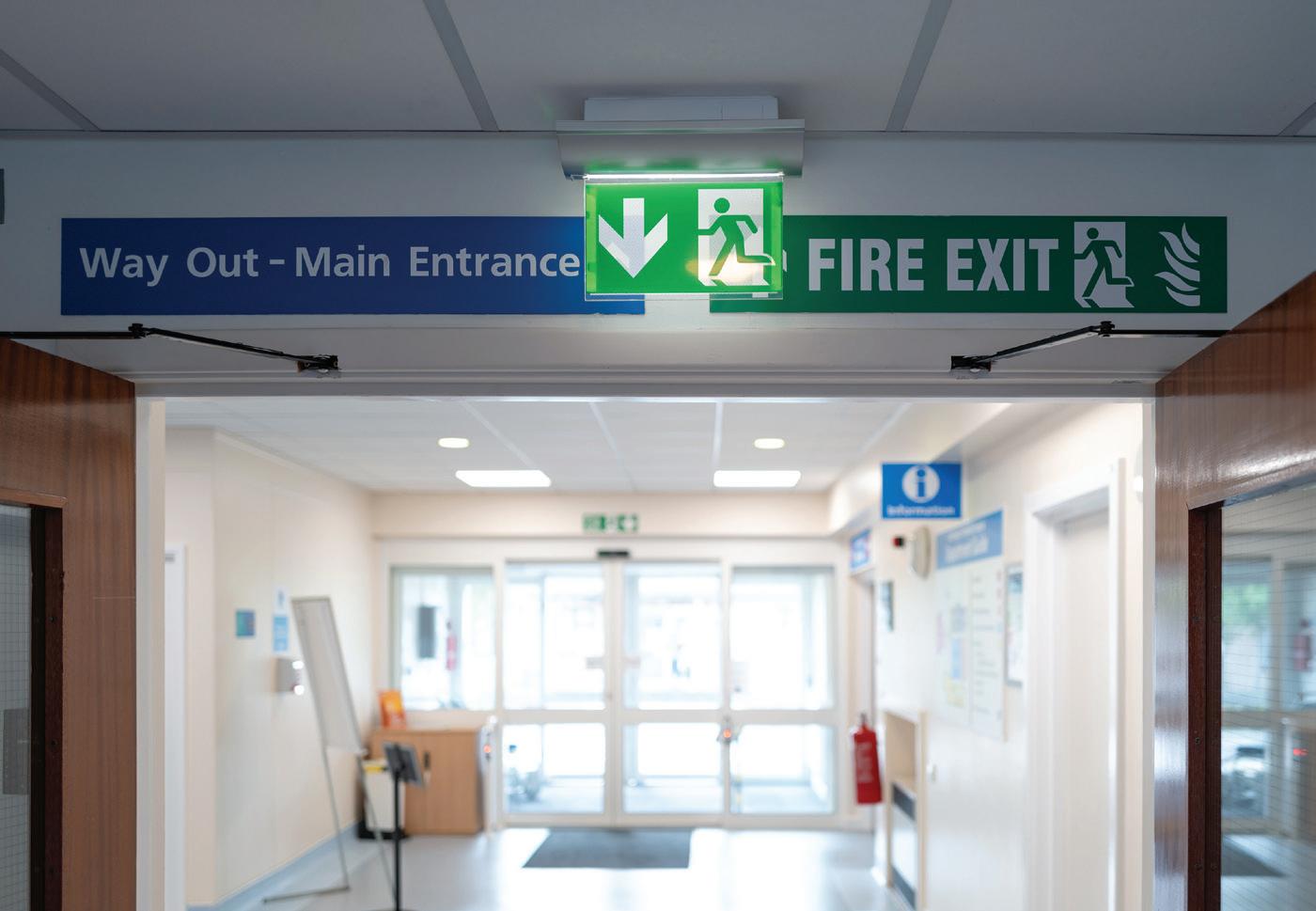
installation, condition and certification of:
• The door furniture
• The hinges
• Locks and latches
• Door closers
• Hold open devices
• Signage
• Exit devices
• Door seals
• The gaps around the door (3mm is recommended for fire doors)
When performing a closing action, a fire door calls upon each of these components and as such, not one element can fail in the event of a fire. To meet the necessary standards, the complete fire doorset must pass a series of standardised tests in the form of UKCA and CE certifications, which healthcare officials can identifyalongside a fire door’s FD ratings - by reviewing the label, usually found on the top edge of the door.
Correct specification is essential to long-term performance too. For high-use areas in large hospitals, for example, electromagnetic holdopen devices are a more appropriate choice and allow fire doors to close once a fire alarm is activated, automatically releasing the door in a safe and controlled manner. In smaller, slower-paced settings,
cam-action closers with slide arms can fulfil fire door regulations whilst providing ease of operation and accessibility for vulnerable users who may otherwise struggle with heavy doors.
Regardless of size, layout and the building’s needs, all healthcare facilities must look to inherit a regular maintenance plan for their fire doors and emergency exit routes. In doing so, teams can highlight any early signs that a fire door is not performing as it’s required to, which can help prevent irreparable damage to the door and its hardware - saving the need for replacements and reducing costs for establishments managing budget restraints. When a fire door and its hardware is no longer compliant, teams must ensure repairs and replacements are made quickly and at a professional standard.
Fire door safety is an ongoing responsibility for healthcare management teams and requires comprehensive planning and regular action. Where patient safety remains the primary focus, a proactive approach is necessary. As such, healthcare officials are urged to pay close attention to their estate’s fire door safety measures, because although fire is unpredictable, it is in most cases preventable.
For more, visit www.allegion.com
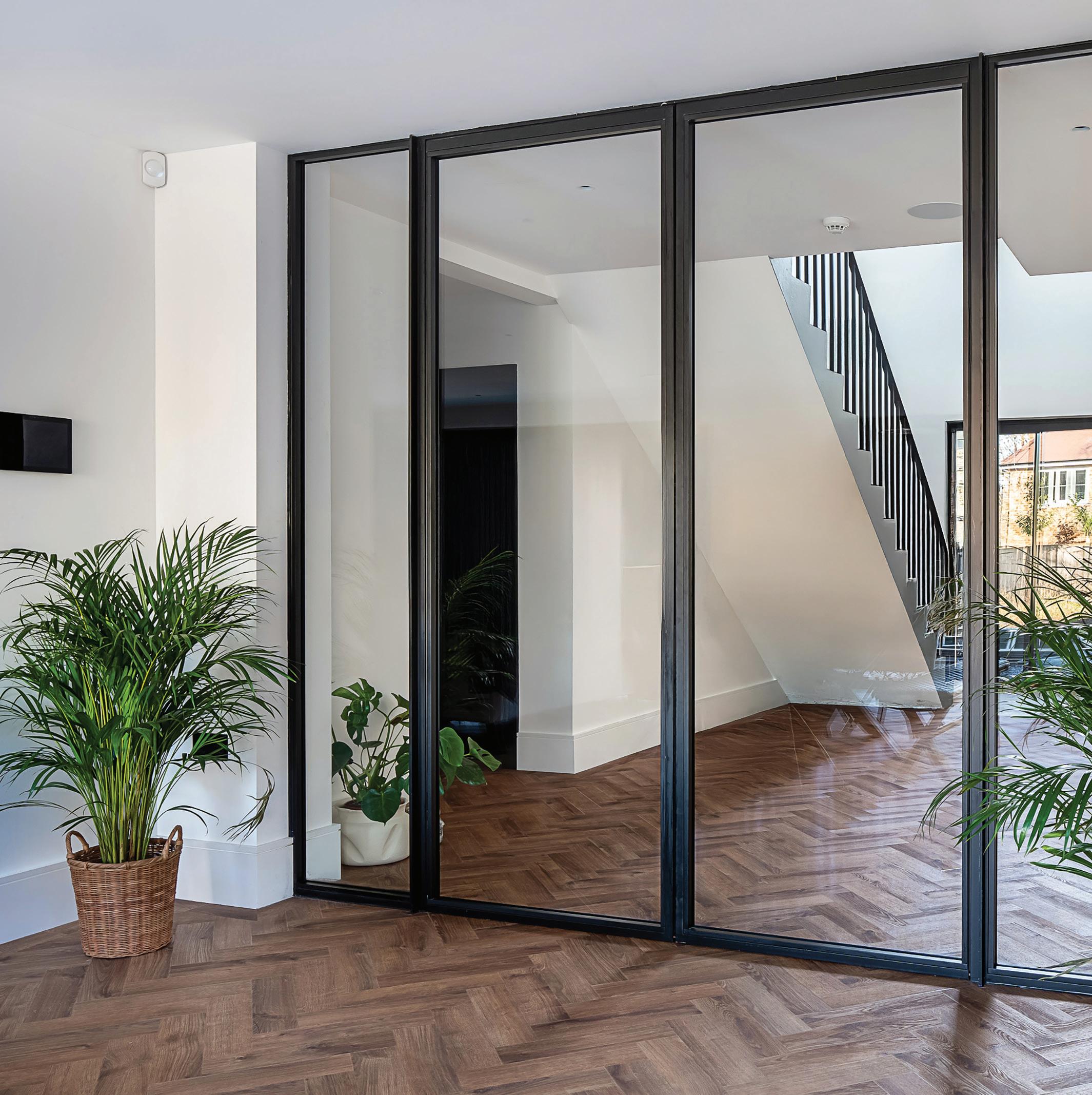
By Schüco Jansen
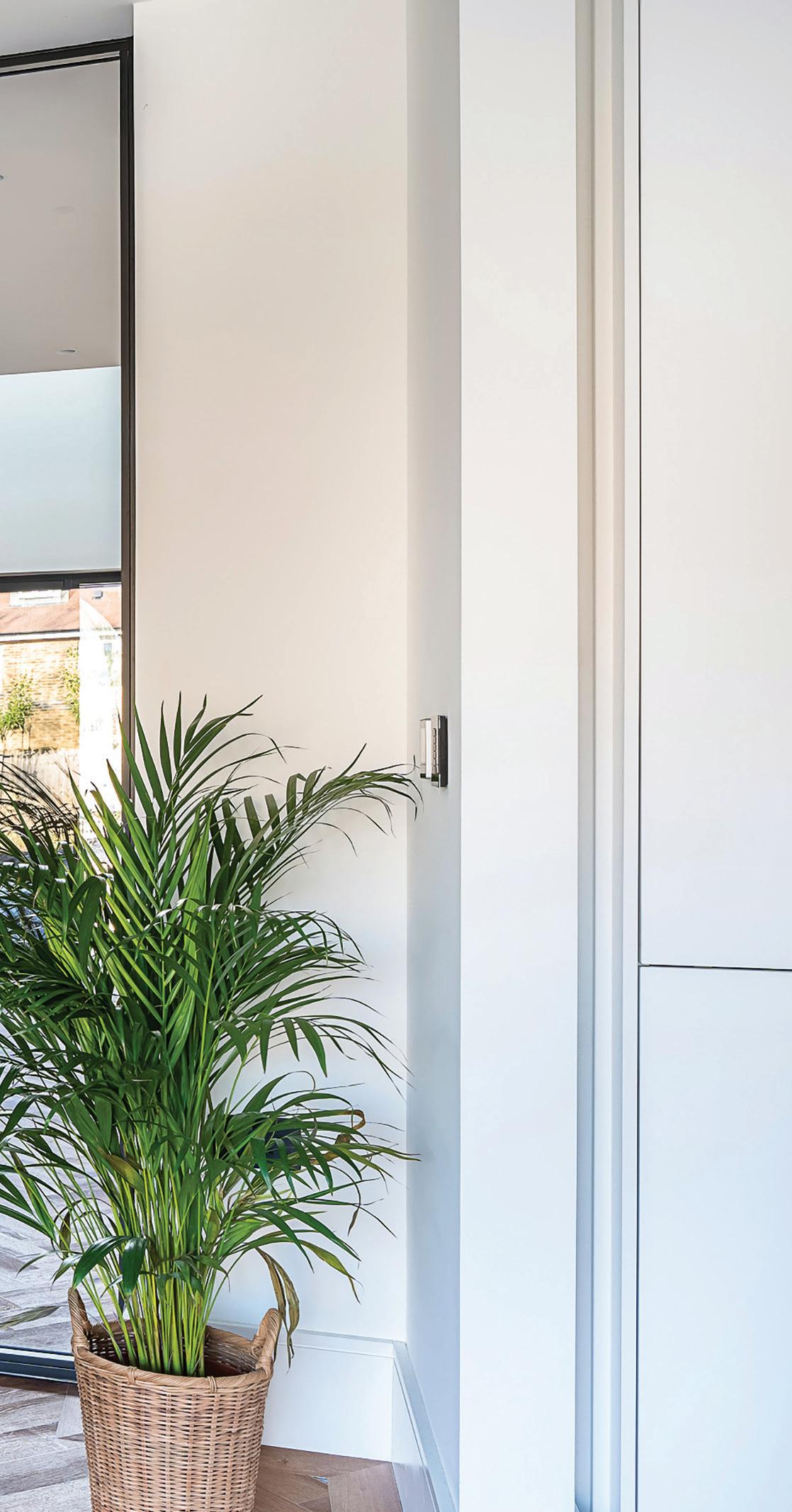
“The system accommodates a wide variety of glazing bar configurations, as well as the option of infill panels rather than glazing in the sidelights.”
Steel systems specialist, Schüco Jansen, has introduced a new internal fire door with the slimmest sightlines available on the UK market for an internal fire rated system. The Jansen Art’15 Fire NR E-EW fire protection door system is designed for safety with no compromise on style.
The new system is an evolution of the popular non-insulated Jansen Art’15 steel door and partition wall system and, like the original, features an extremely slimline, attractive profile.
The latest Jansen Art’15 system also brings an impressive level of fire resistance. Tested to British and European standards (BS EN 16341: 2014), the system achieves fire integrity and radiation resistance classes E/EW30 to E/ EW120, as well as smoke protection class Sa.
The extensive testing of the Jansen Art’15 Fire NR E-EW includes all standard single and double-leaf door configurations, with optional sidelights and toplights included.
The system provides fire protection from both sides and can accommodate both equal and unequal double leaf doors.
The integrity of the door, in terms of its fire resistance, has been assessed for periods from 30 to 120 minutes for both single and double* leaf doorsets. The doorset is suited to a wide
For further information email: mkinfobox@schueco.com, call: 01908 282 111, or visit: www.schueco.com/uk/specifiers/magazine/art15-fire
range of applications and has been tested in all standard building structures and components, as per EN 1363-1.
The Jansen Art’15 Fire NR E-EW offers impressive design flexibility. The system accommodates a wide variety of glazing bar configurations, as well as the option of infill panels rather than glazing in the sidelights. Designers can choose from a large selection of glass that has been assessed for use within the system, including Pyroguard and any Certifire approved glass, approved for use in non-insulated steel doorsets for periods of up to 120 minutes integrity.
The system offers the choice to forgo a lock, improving ease of use, as well as optional integrated door closers.
A range of slimline door hinges – in both steel and stainless steel –provides an elevated look and allows individual design requirements to be achieved.
*Double leaf opening towards the fire only – opening away from the fire is assessed to 90 minutes integrity.
FDM – Training and Development (FDM), a leading specialist in fire safety and compliance, recently hosted a successful Awareness Day for Designing Out Crime Officers (DOCOs) at its state-of-the-art training centre. The event was held in association with Secured by Design (SBD).
FDM, part of the UAP Group, welcomed the DOCOs to its Training Academy, offering a handson training experience with some of UAP’s innovative and Police Preferred Specification-accredited products. Attendees explored UAP’s wide portfolio of over 6,000 hardware solutions, including highsecurity 3-star cylinders, window restrictors, and letterplates. The
event made full use of FDM’s dedicated training corridors, where delegates could explore real-world door and hardware installations designed to provoke questions, discussion, and a deeper understanding of how products perform in situ.
FDM’s practical Training Academy, opened in 2024, is the first of its kind in the UK. The company was established after Grenfell tragedy to address growing concerns around fire safety compliance in the built environment. It delivers GQA-accredited training aligned with the Building Safety Act 2022 and informed by recommendations from the Grenfell Phase 1 and 2 Reports, including the “golden thread” principle.
Focused on bridging knowledge gaps surrounding the correct inspection, maintenance, and installation of fire doors, FDM provides essential knowledge for improving safety standards and

Nicola John
ensuring that fire door components meet the most rigorous performance criteria.
Nicola John, Managing Director of FDM – Training and Development, said: “We were delighted to provide a fire door seminar and training for the SBD and DOCO teams at FDM. We offer holistic fire door training for the entire supply chain — from procurement through to maintenance — and we’re thrilled to have the teams’ support as we bridge knowledge gaps for all those working on the building lifecycle.” DOCOs provide specialist crime reduction advice to the public, businesses, and colleagues about premises or property security. They work with building developers, architects, and council planning departments regarding new developments and refurbishments, to ‘design out’ crimes like burglary and anti-social behaviour. DOCOS also provide advice on preferred security standards and specifications for doors, windows, and locks, under the SBD initiative.

Hazel Goss, Development Officer at Secured by Design, commented:
“The facilities at FDM’s Training Academy are excellent: the training and breakout rooms are spacious, airy, and ideal for any meeting.
I particularly loved the training corridors, with each door opening into a different scenario or offering practical advice. Seeing these items installed brought them to life and sparked meaningful conversations.
“The day was all about gaining knowledge and understanding, and I certainly did. The feedback from others has been equally positive. We had an excellent afternoon: thank you to all involved.”
UAP Ltd recently celebrated 25 years as an SBD member after joining as a founder. Established in 1996, UAP has grown from a hardware import business into an award-winning industry leader.

With more than 30 products accredited to Police Preferred Specification, UAP continues to
You can find out more about UAP and their Secured by Design accredited products on their dedicated member page: https://www.securedbydesign.com/member-companies/product-category-search/

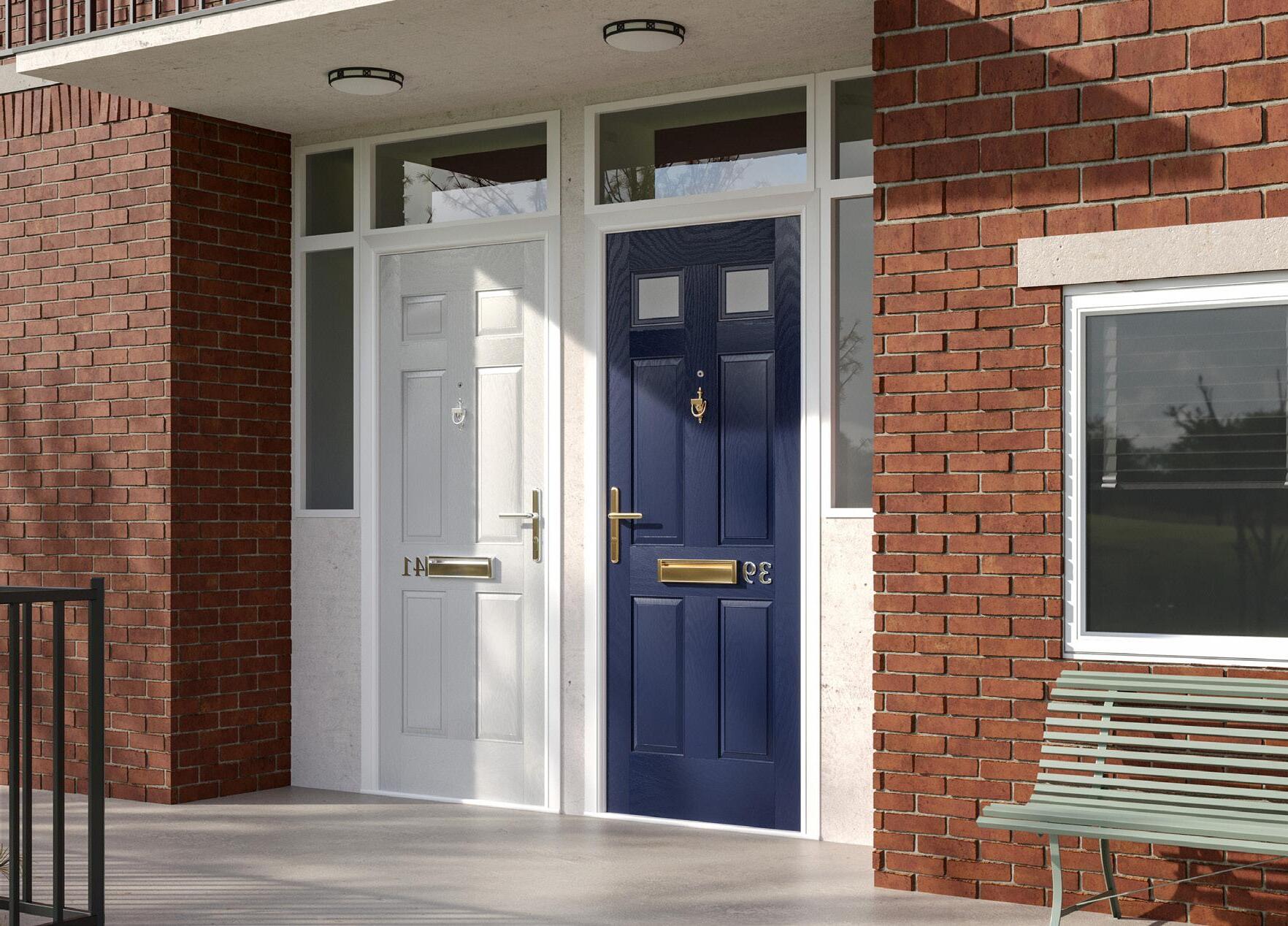

The Door Data Systems platform, fast becoming known as the ‘National Fire Door Register’, exemplifies the practical application of the ‘Golden Thread’ theory by providing a comprehensive, digital solution for managing fire door information throughout their entire lifecycle.
This approach directly addresses the industry’s demand for transparency, traceability, and compliance in fire safety, especially in the wake of heightened regulatory scrutiny post-Grenfell.
What is the Golden Thread?
The golden thread, as defined by Dame Judith Hackitt’s review, is an accurate, up-to-date, and accessible digital record of a building’s design, construction, and ongoing maintenance. For fire doors, this means maintaining a seamless, digital audit trail that captures every stage— from manufacture to installation, inspection, maintenance, and eventual replacement.



Door Data Systems collaborates with leading door manufacturers to embed NFC data tags into each fire door at the point of production. These tags provide robust links to critical data to support ongoing trades in completing their tasks.
Manufacturers information such as certification, fire rating, parts and components used, create a “digital fingerprint” for each door. This ensures that every door’s journey is traceable from day one.
During installation, certified professionals use the Door Data Systems app to scan the door’s tag, confirm specifications, upload photographic evidence ensuring a benchmark system is instigated. All data is time stamped, ensuring accountability and real-time updates to each installer account. Door Data Systems reduces back room administration, produces detailed report supporting 3rd party certification schemes and provides a quick and easy transfer of data (regulation 38) to the client.
Routine inspections and maintenance are streamlined with digital templates aligned to British Standards. Inspectors log findings, upload photos, and schedule remedial works directly via the mobile app. Every action is recorded against the specific door, maintaining an
up-to-date stock condition and compliance record. The ease of use app utilising voice recognition and clear photo’s provides clear and precise records for maintenance engineers to understand exactly what is required.
The platform provides a central dashboard for stakeholders—housing associations, building managers, contractors, and regulators—to access the complete digital history of each fire door. This includes installation records, inspection reports, certifications, and maintenance logs, all of which are exportable to existing asset management systems. Managing a system of maintenance via the Door Data Systems platform is quick and easy, safe and places the Responsible Persons in control.
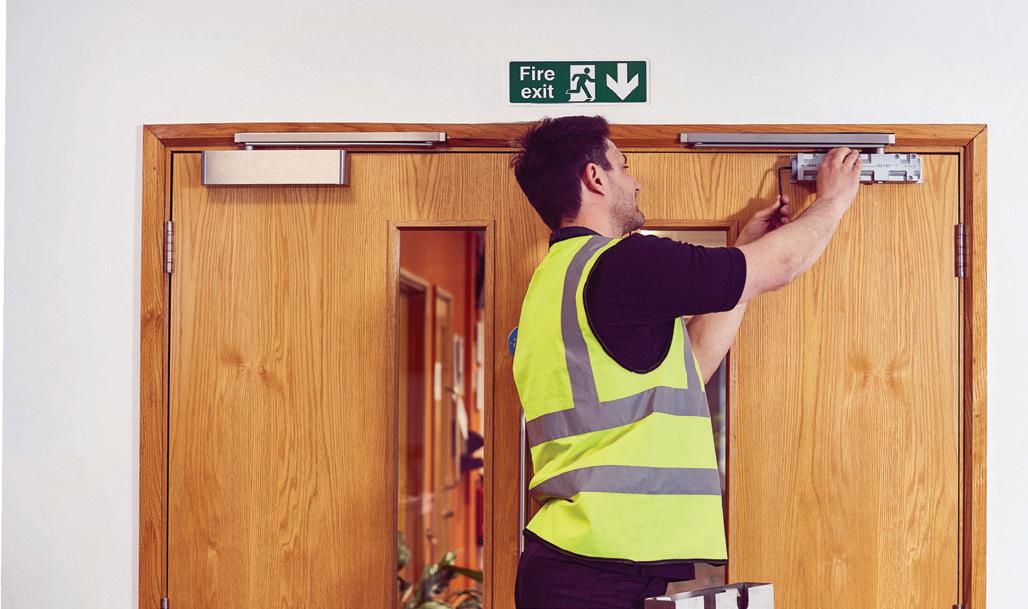

By digitising the golden thread, Door Data Systems enables housing providers to evidence compliance with regulations such as the Fire Safety (England) Regulations 2022. The system’s open-access philosophy ensures that no single party “owns” the safety data, promoting transparency and collaboration across the supply chain.
Find out more by visiting www.doordatasystems.co.uk or contact: enquiries@doordatasystems.co.uk
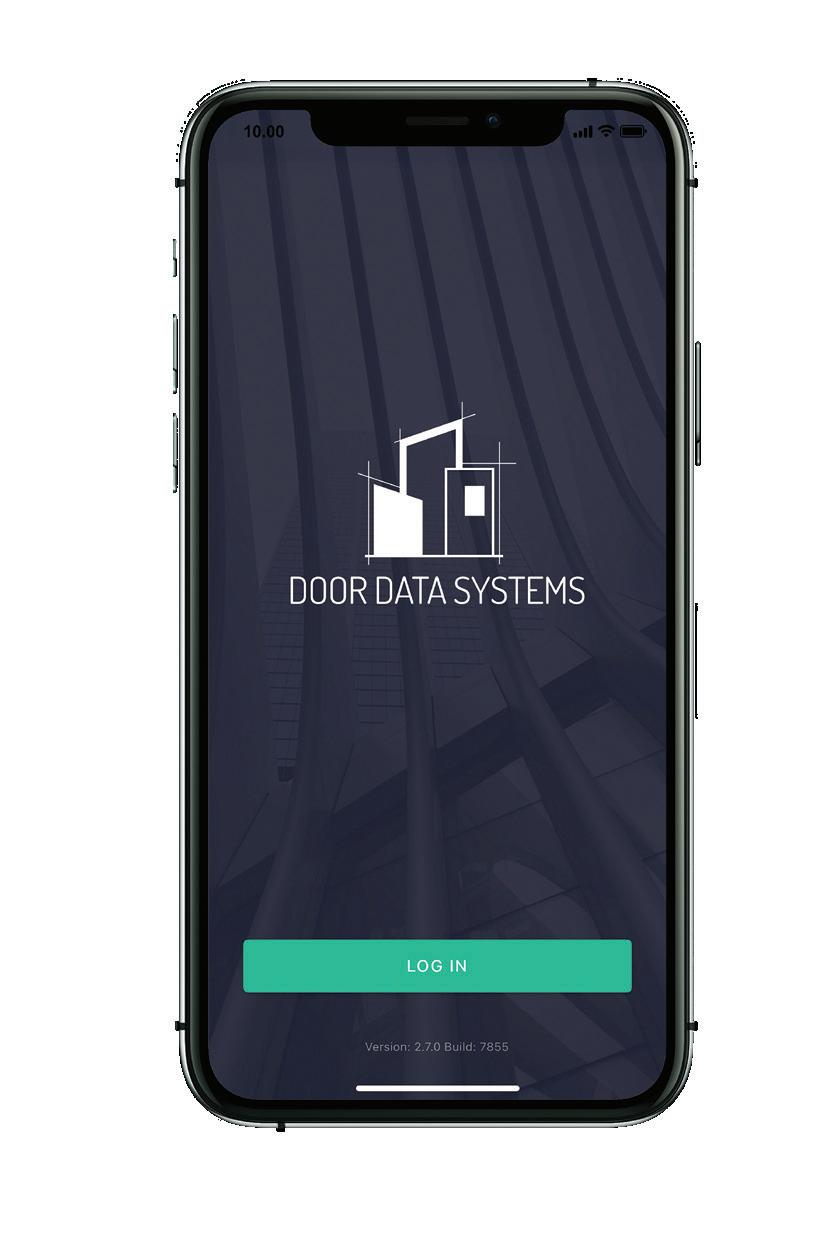
UAP Ltd, the Manchester-based door hardware specialist, is welcoming industry expert Simon Monks as its new Group Sales & Marketing Director.
Monks joins UAP with almost two decades’ experience in the door and fenestration industry, including spearheading sales and marketing strategies. He has previously risen through the ranks at different hardware companies, moving from sales to the C-suite. He has spent ten years in directorship positions — seven as Managing Director — with experience in fenestration markets both in the UK and overseas.
On his appointment, Simon Monks, Group Sales & Marketing Director at UAP, said: “I was drawn to UAP because of its ambition, growth plans, and reputation for innovation, with products like the Armasmart and Kinetica ranges driving progress in the industry. In such an exciting time for the business group, I can’t wait to get stuck into shaping its future alongside the stellar team.”
UAP Limited, established in 1996, has become a leading UK door hardware supplier. Its products

Simon Monks
range from fire-rated hardware to locking systems and door and window security that drives progress in the hardware industry. The company designs door hardware solutions around customer needs, equipping them to navigate the everchanging fire and security landscape. Monks’ appointment comes amid UAP’s recent acquisition by Allegion plc, a leading global security products and solutions provider, through one of its subsidiaries.
Steve Cox, Managing Director of UAP, said:
“Simon has joined us at an integral stage of our growth journey. His market knowledge and industry standing are exceptional, and his leadership and customer skills are key additions to our team.
“Simon’s insights will be fundamental as we consolidate our UK plans, including targeting repair markets, and expand into international markets that are new to us.”
DoorCo congratulates apprentice Harry Allen for achieving a Distinction in his Data Analyst Apprenticeship and for successfully transitioning to a newly created Business Intelligence Analyst role at DoorCo.
“Harry completed his 17-month Level 4 Data Analyst with Power BI Apprenticeship through specialist learning provider QA, showcasing exceptional dedication from day one”, says David Rosser, Technology Manager at DoorCo. “His outstanding performance earned him recognition from the Academy for Digital, who conducted his End Point assessment and lead to his overall Distinction grade.
“Harry has now stepped into a full-time role as Business Intelligence Analyst, specialising in Power BI, a powerful business analytics tool developed by Microsoft that enables users to visualise data, share insights, and make datadriven decisions.

“Harry is already making wavesas DoorCo’s inhouse Power BI expert. His first standout project was developing a comprehensive Sales Dashboard for our Commercial Director. He worked tirelessly for months, gathering feedback from senior managers and delivering training sessions across multiple departments. The tool has become an essential business asset, dramatically improving efficiency for our Sales Managers. Harry continues advancing his skills through additional Power BI training, cementing his role as our technology expert.
“As the UK’s leading composite door supplier, DoorCo believes apprenticeships offer fantastic career opportunities. Harry’s journey from apprentice to skilled analyst perfectly demonstrates this commitment. His confidence, can-do attitude, and willingness to help others embody the true DoorCo culture.”
For more information about DoorCo call: 01625 428955 or visit: www.trade.door-co.com/
Fire Door Journal is the go-to resource for industry professionals, contractors, inspectors, and facility managers who want expert knowledge delivered straight to their inbox, along with a printed edition of the bi-monthly journal.
• First Edition – FREE OF CHARGE.
• Subsequent Editions – You will need to SUBSCRIBE.
Please note you can view the Fire Door Journal online, free of charge, however, you will still need to subscribe if you wish to receive the journal and monthly newsletter via email. Subscription to the digital edition and monthly newsletter is free of charge.
Join a growing community of professionals who prioritise safety, performance and compliance in every project.
As a subscriber, you’ll get:
• Updates on fire door regulations and standards.
• Installation and maintenance best practices.
• Expert interviews, case studies, technical advice and product reviews.
• Upcoming industry events and training opportunities.
Subscription costs:
• Digital Edition direct to your inbox bi-monthly, six editions per year – free of charge.
• Digital Newsletter direct to your inbox, twelve editions per year – free of charge.
• Print Edition posted to your chosen address, six editions per year – £49 +VAT (one invoice to cover all six editions).
Please fill in the form on our website: https://firedoor-journal.co.uk/subscriptions/
You can also email your subscription preferences (Free Digital or Print & Digital) with full invoice details if you have chosen print, to: christina@firedoor-journal.co.uk
(First edition distribution shown below. Distribution then updated bi-monthly once subscriptions are counted).
Senior Fire and Safety Professionals & Responsible Persons within Social Housing, the NHS and Local Authority Schools, including Fire Door Safety Officers
850 Print copies / 1,250 Email
Door Manufacturers, Fabricators and Installers
(Placed as an insert into Glass News, the window and door industry’s leading newspaper)
7,500 Print copies / 12,000 Email
Fire Door Maintenance Companies including Responsible Persons for Fire Door Safety
9,000 Email
Trade Counters
500 Emails
Architects and Specifiers
5,050 Email
Builders and Contractors
5,625 Email
Major Building Companies 1,825 Email
Print Distribution
Currently stands at: 8,500 copies
Email Distribution Currently stands at: 35,250
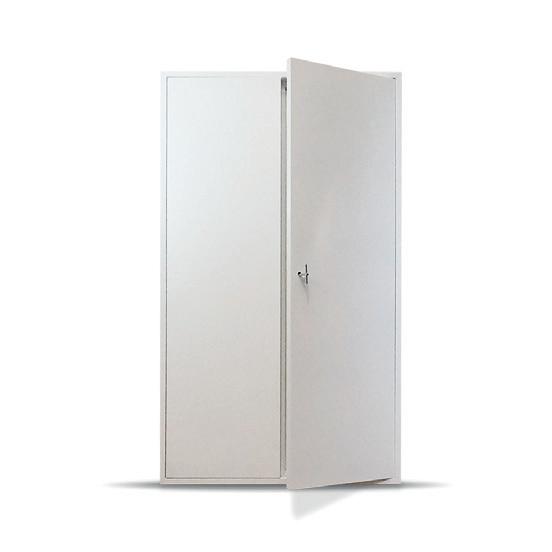
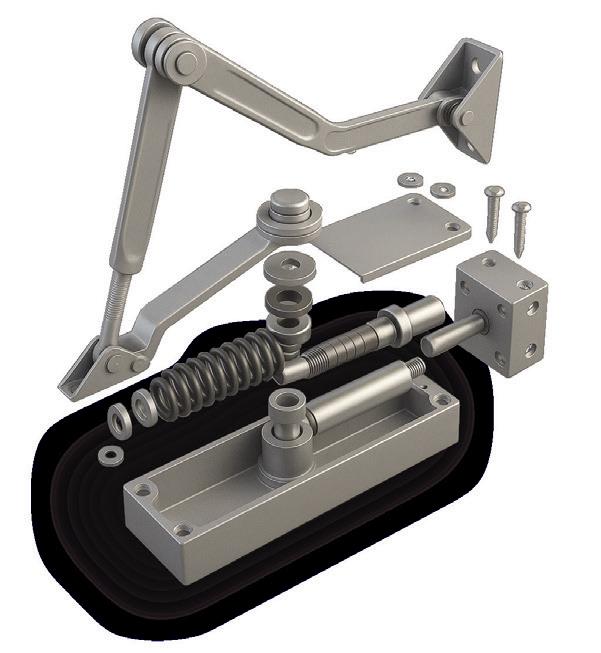



FiRECORE

ASSA ABLOY has hosted a Secured by Design (SBD) event at Lorient, following on from the success of its four SBD roadshow events last year.
The open day welcomed a host of Designing Out Crime Officers (DOCOs), who work closely with architects, developers, and local authority planners to encourage the integration of effective crimeprevention strategies at the design stage of new builds and major refurbishments.
Attendees took part in a CPDaccredited session, “The Importance of Fire Doors & Intumescent Seals,” delivered by the Lorient team. The session highlighted the vital role these products play in passive fire protection, while educating DOCOs on best practices in fire safety across both residential and commercial sectors.
Fire doors and intumescent seals are critical to building safety, as they are engineered to prevent the spread of fire and smoke, saving lives and protecting property. For over 45 years, Lorient has been at the forefront of designing and manufacturing high-performance sealing systems for fire, smoke, acoustic and thermal containment, including:
• Intumescent seals that expand in heat to contain fire and slow its spread throughout a building.
• Smoke seals that restrict smoke movement, giving occupants more time to escape and helping to reduce property damage.
• Acoustic seals that reduce sound transmission, enhancing privacy, comfort, and productivity.
• Many door seals that also improve the building’s energy efficiency by keeping in heat. By choosing Lorient, customers gain the reassurance of tested, proven, and reliable protection



– alongside enhanced comfort, energy efficiency, and everyday wellbeing.
The event also featured a guided tour of Lorient’s Devon-based factory, providing an insight into the manufacturing and rigorous testing processes behind the brand’s market-leading fire, smoke, and acoustic door seals.
Lauren Newman, Events and Exhibitions Lead, Residential at ASSA ABLOY, comments: “We were thrilled to be continue our successful Secured by Design roadshow in 2025 with this event at Lorient. This built on our strong partnership with Secured by Design and was a fantastic opportunity to spread awareness of Lorient’s intumescent seals.”
To find out more about Lorient’s market-leading solutions, please visit https://www.lorientuk.com/
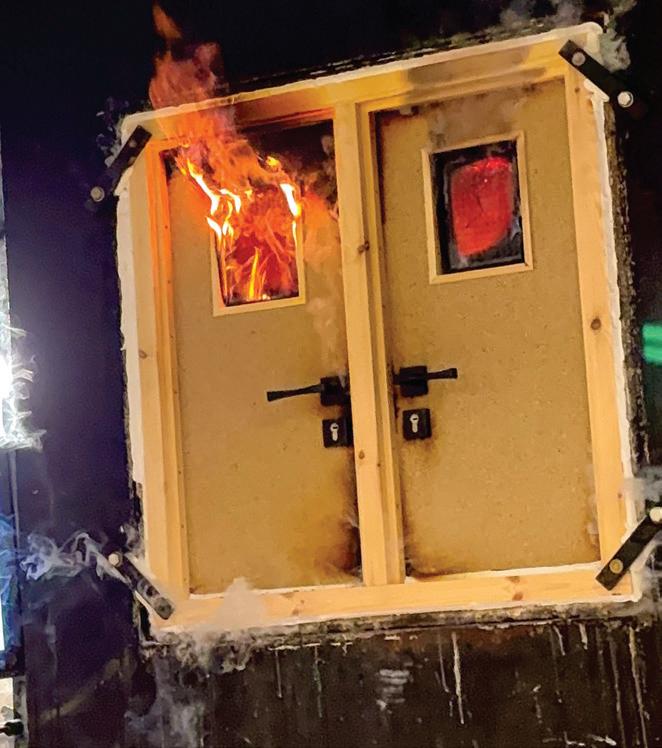
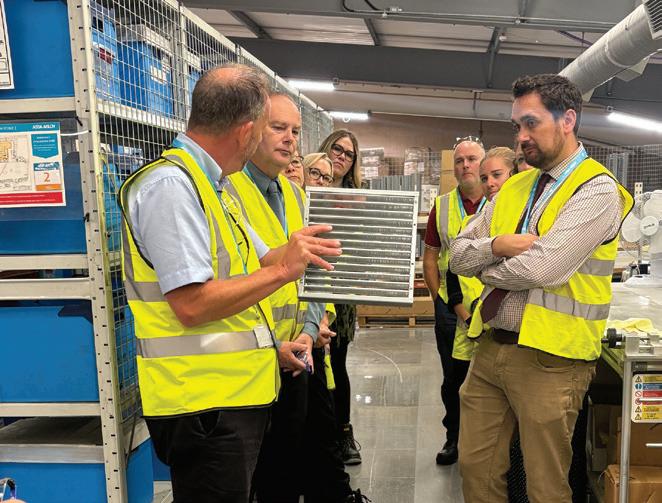
Fire Door Journal is the go-to resource for industry professionals, contractors, inspectors, and facility managers who want expert knowledge delivered straight to their inbox, along with a printed edition of the bi-monthly journal.
• First Edition – FREE OF CHARGE.
• Subsequent Editions – You will need to SUBSCRIBE.
Please note you can view the Fire Door Journal online, free of charge, however, you will still need to subscribe if you wish to receive the journal and monthly newsletter via email. Subscription to the digital edition and monthly newsletter is free of charge.
Join a growing community of professionals who prioritise safety, performance and compliance in every project.
As a subscriber, you’ll get:
• Updates on fire door regulations and standards.
• Installation and maintenance best practices.
• Expert interviews, case studies, technical advice and product reviews.
• Upcoming industry events and training opportunities.
Subscription costs:
• Digital Edition direct to your inbox bi-monthly, six editions per year – free of charge.
• Digital Newsletter direct to your inbox, twelve editions per year – free of charge.
• Print Edition posted to your chosen address, six editions per year – £49 +VAT (one invoice to cover all six editions).
Please fill in the form on our website: https://firedoor-journal.co.uk/subscriptions/
You can also email your subscription preferences (Free Digital or Print & Digital) with full invoice details if you have chosen print, to: christina@firedoor-journal.co.uk
(First edition distribution shown below. Distribution then updated bi-monthly once subscriptions are counted).
Senior Fire and Safety Professionals & Responsible Persons within Social Housing, the NHS and Local Authority Schools, including Fire Door Safety Officers
850 Print copies / 1,250 Email
Door Manufacturers, Fabricators and Installers
(Placed as an insert into Glass News, the window and door industry’s leading newspaper)
7,500 Print copies / 12,000 Email
Fire Door Maintenance Companies including Responsible Persons for Fire Door Safety
9,000 Email
Trade Counters
500 Emails
Architects and Specifiers
5,050 Email
Builders and Contractors
5,625 Email
Major Building Companies 1,825 Email
Print Distribution
Currently stands at: 8,500 copies
Email Distribution Currently stands at: 35,250
uaplimited.com
